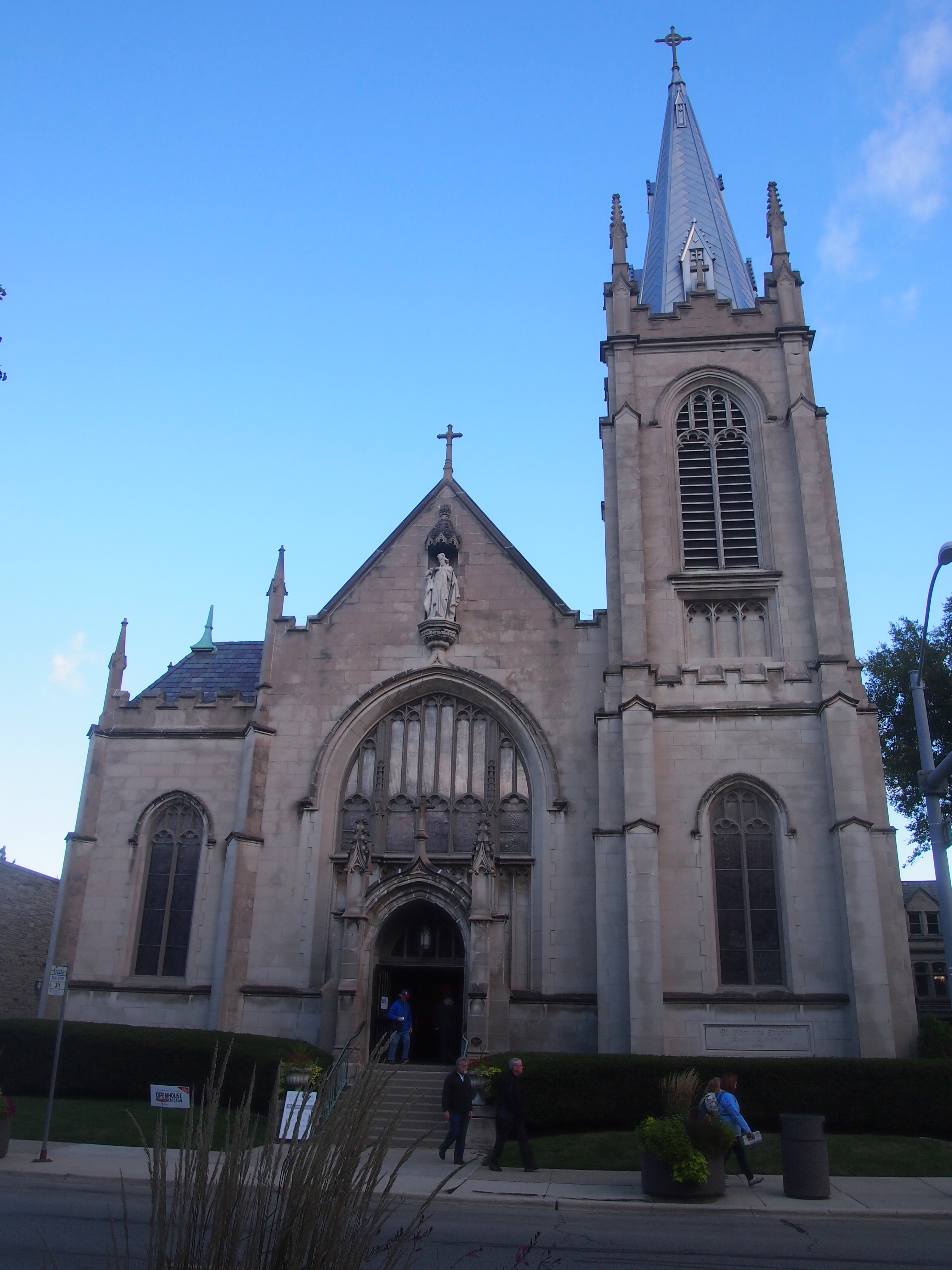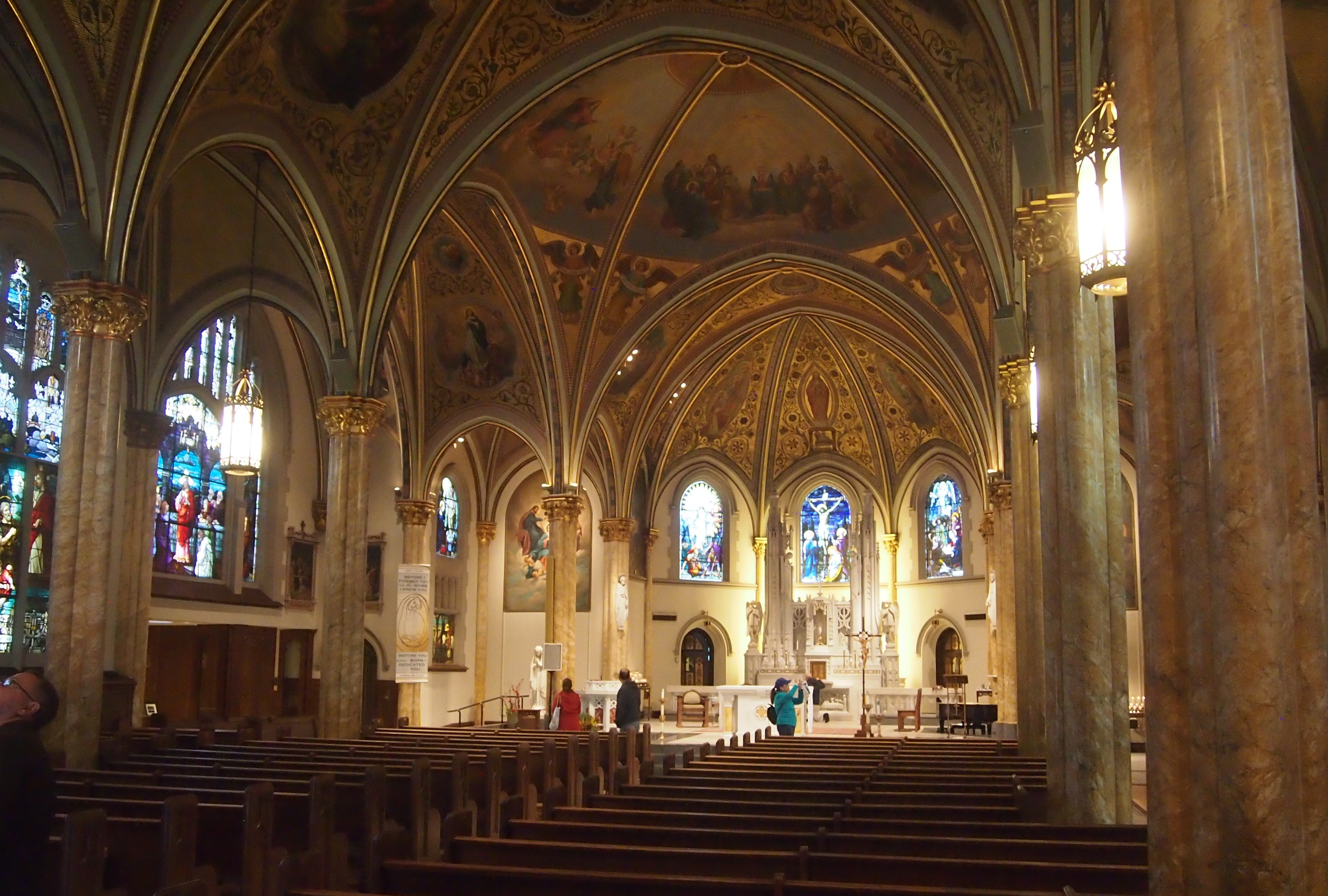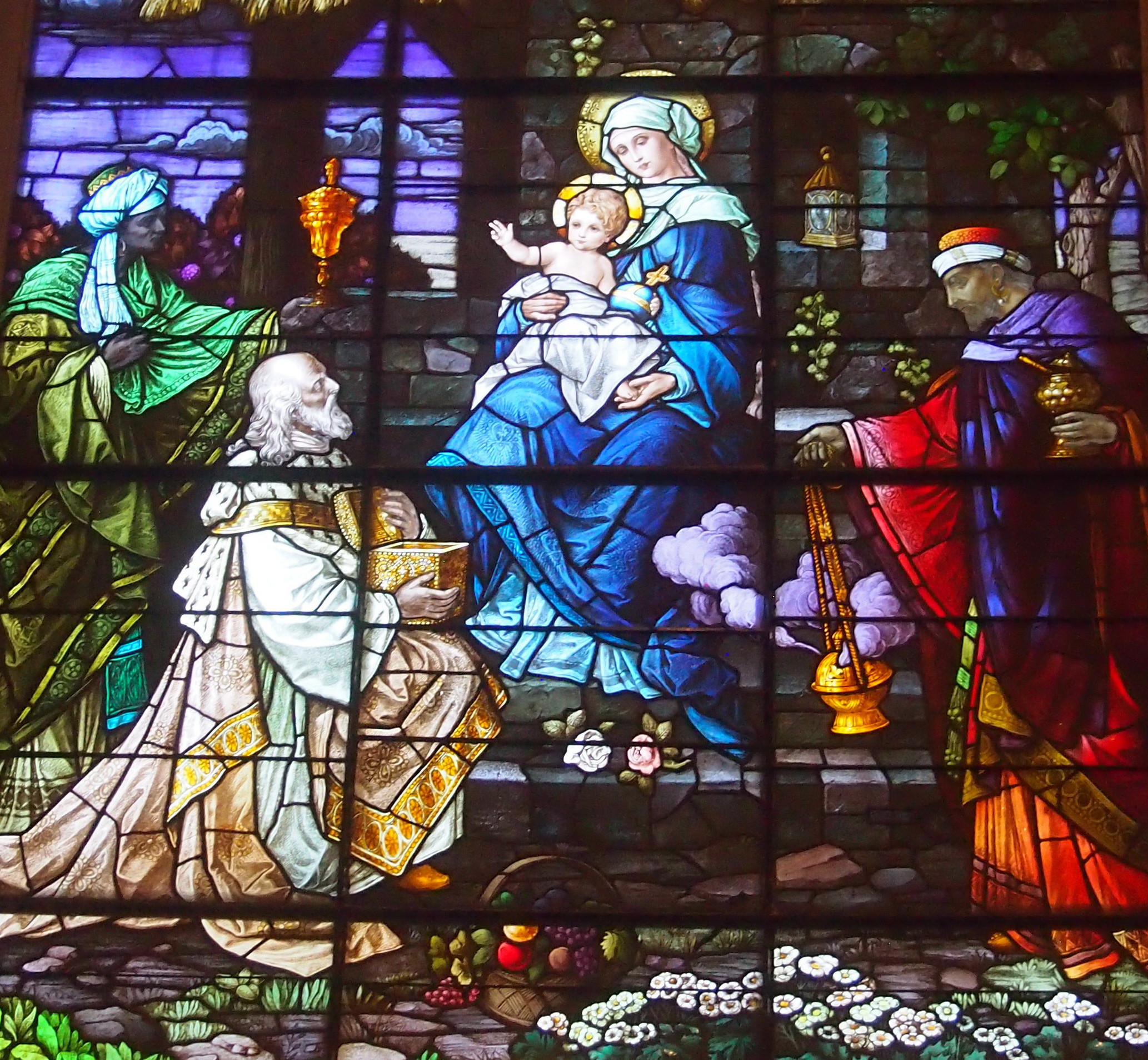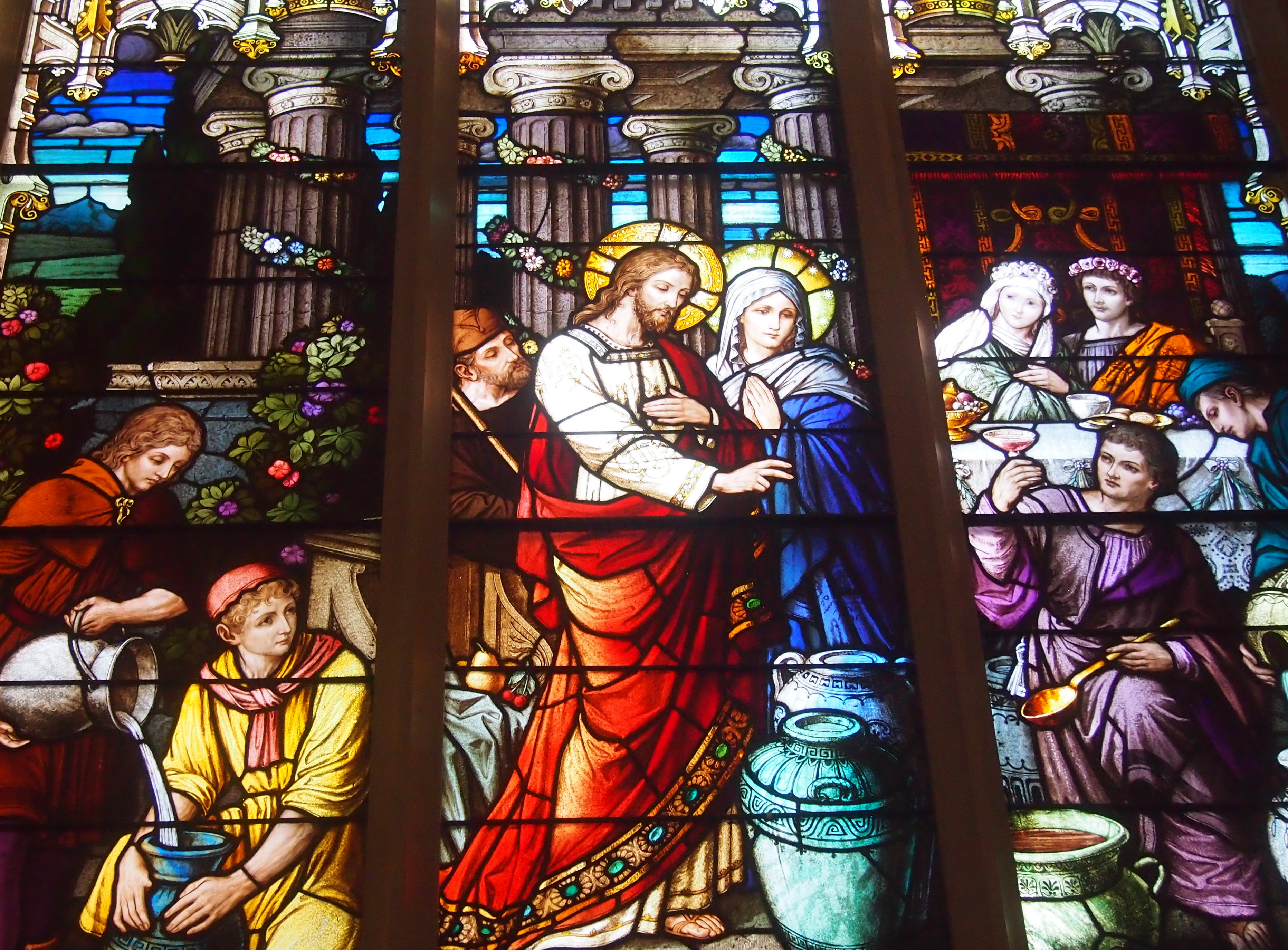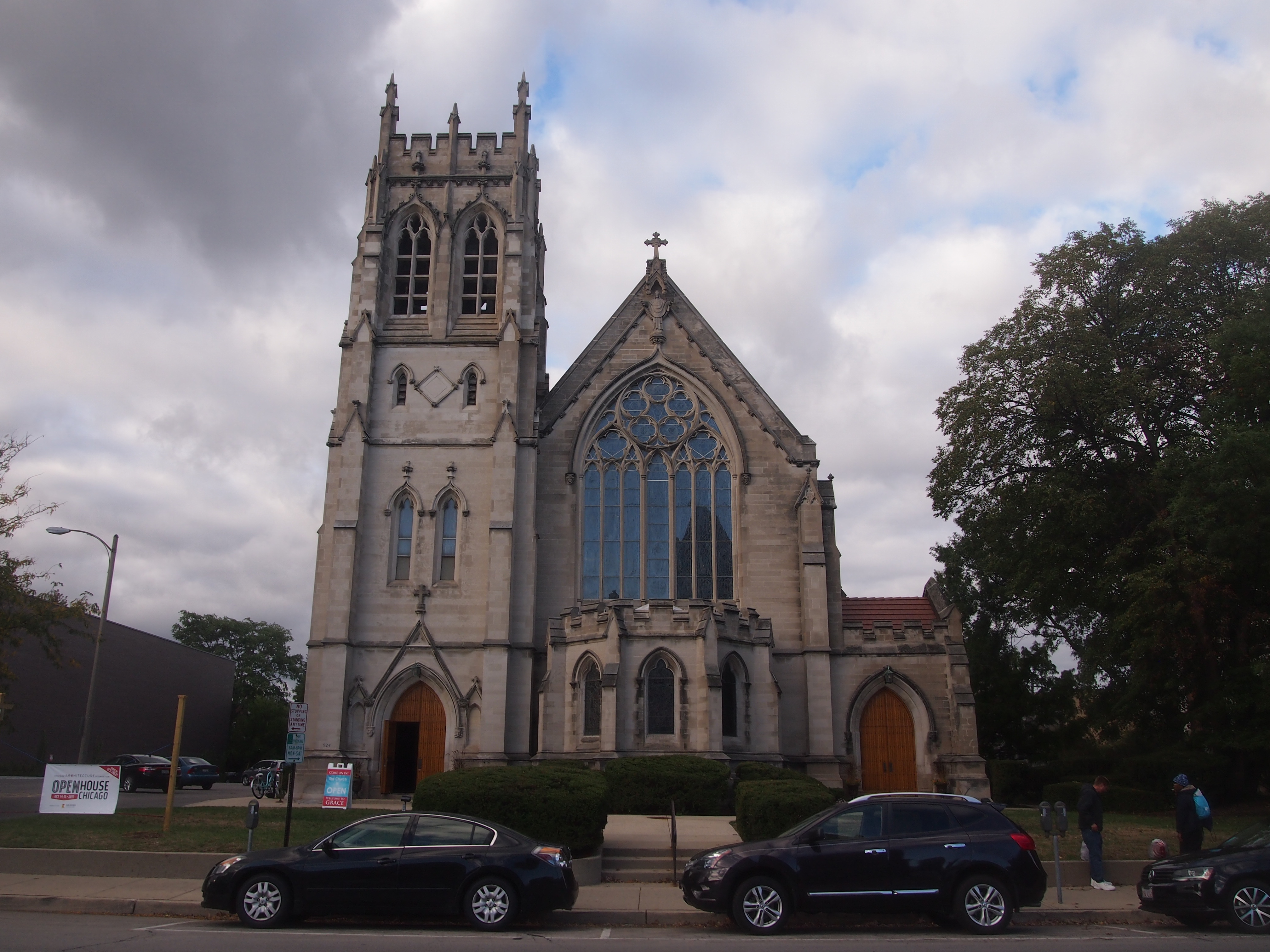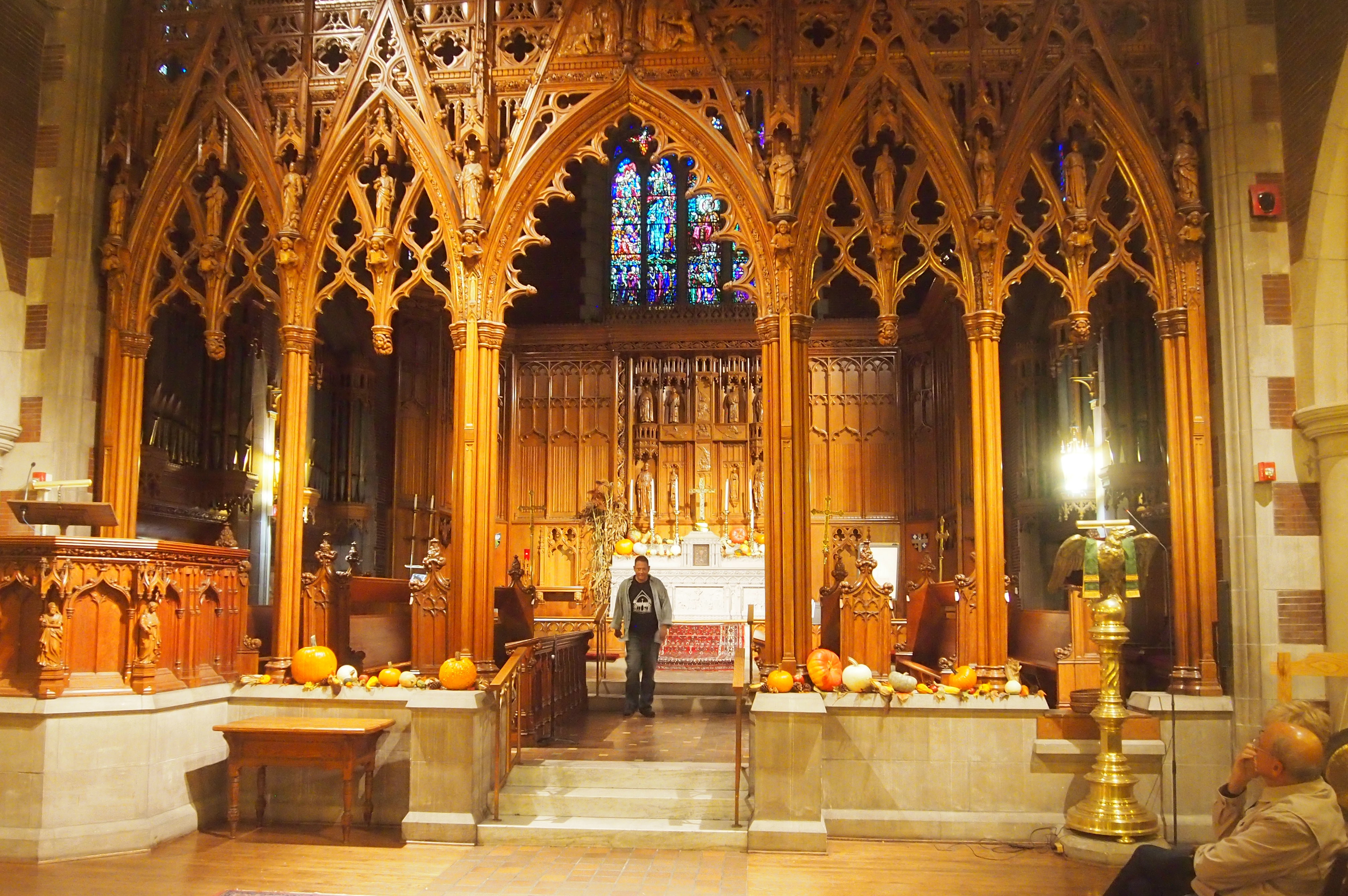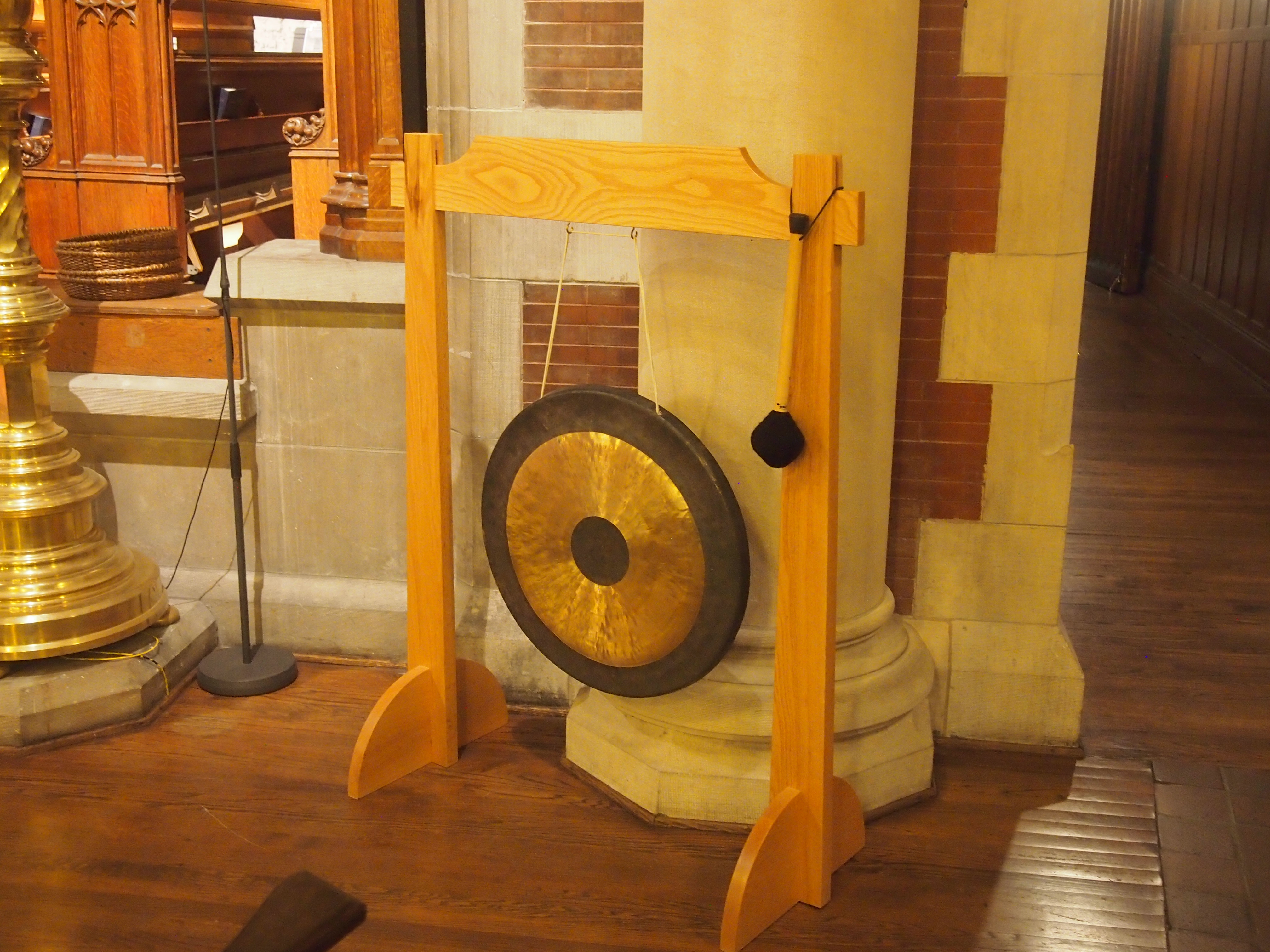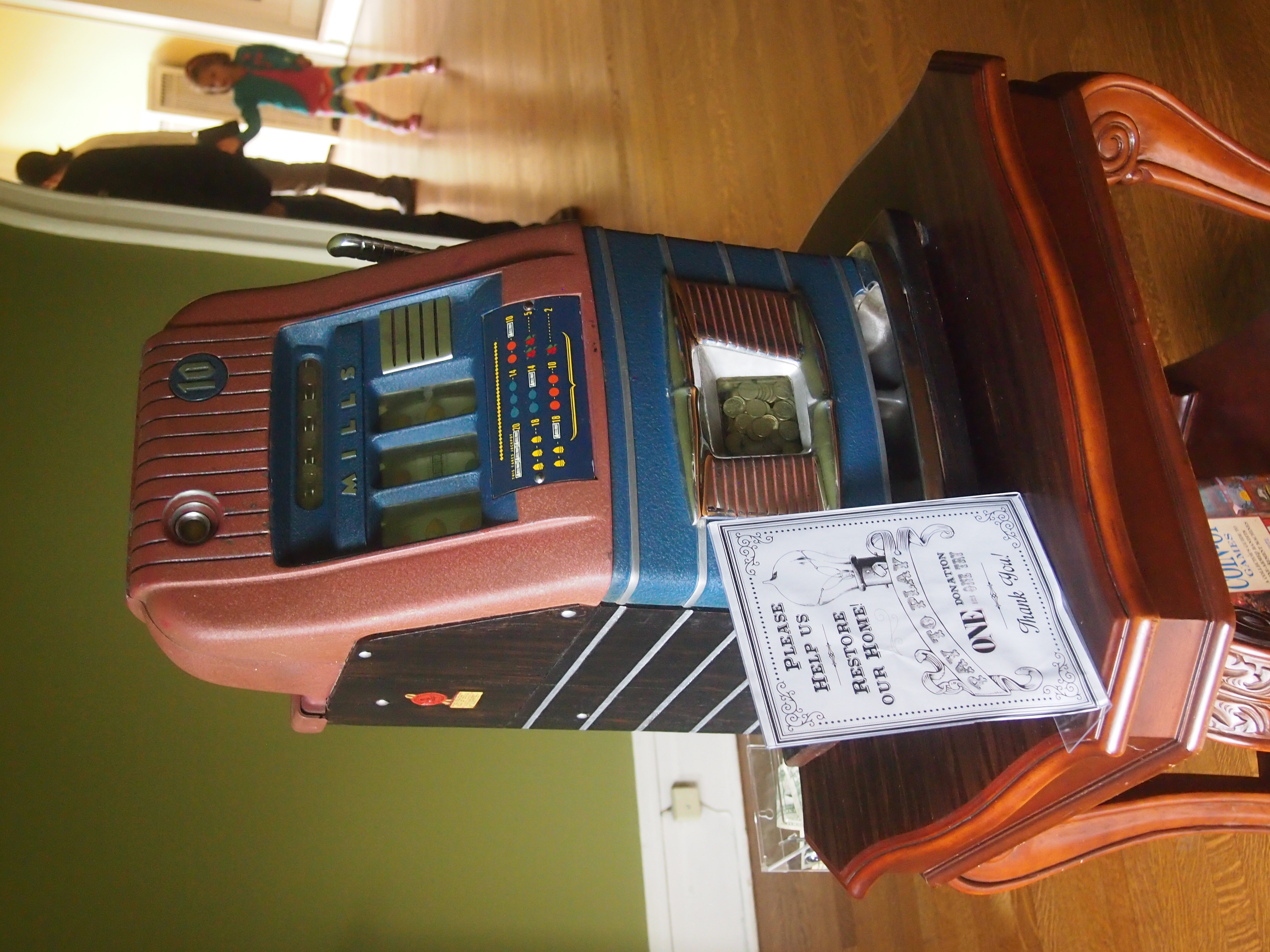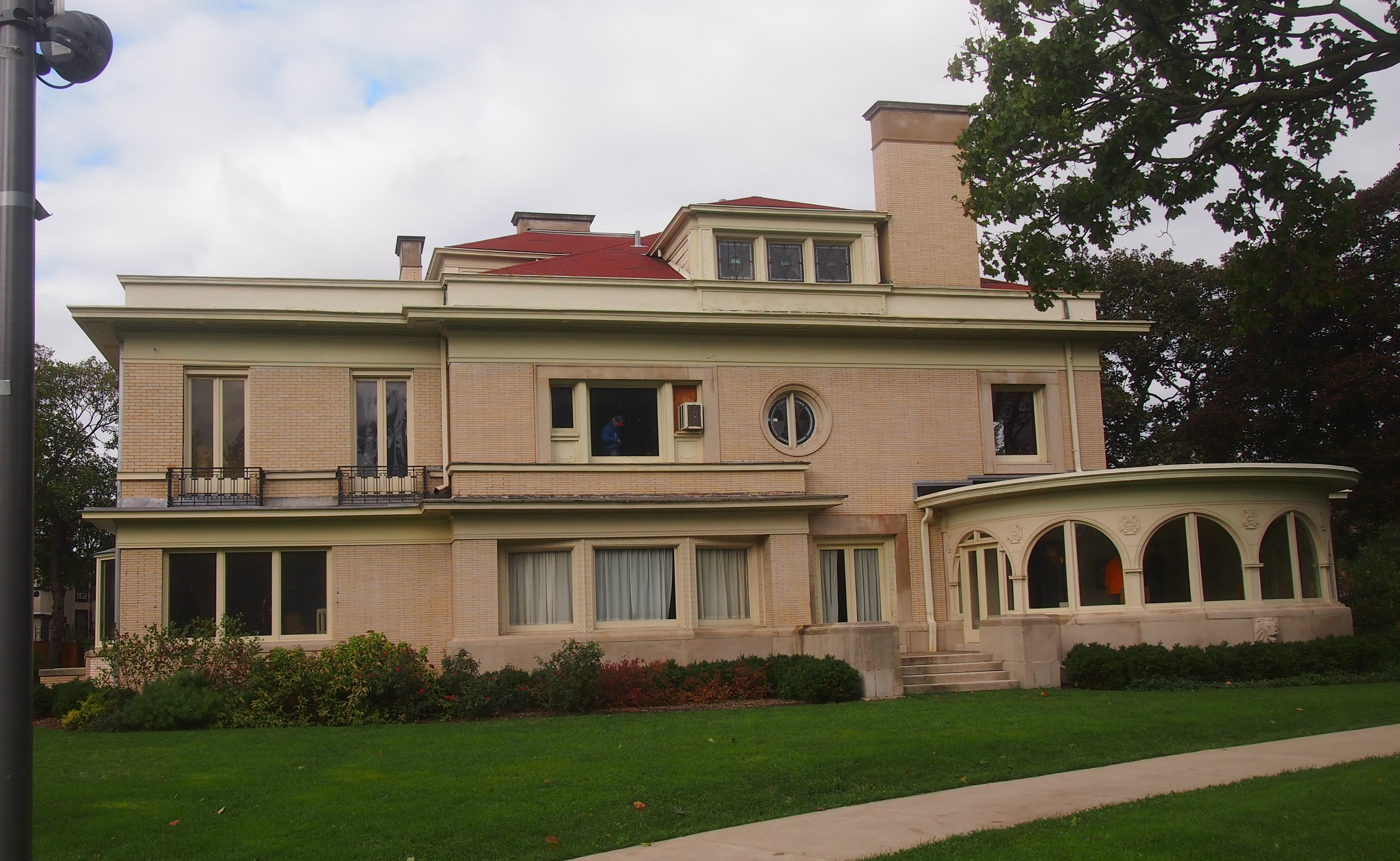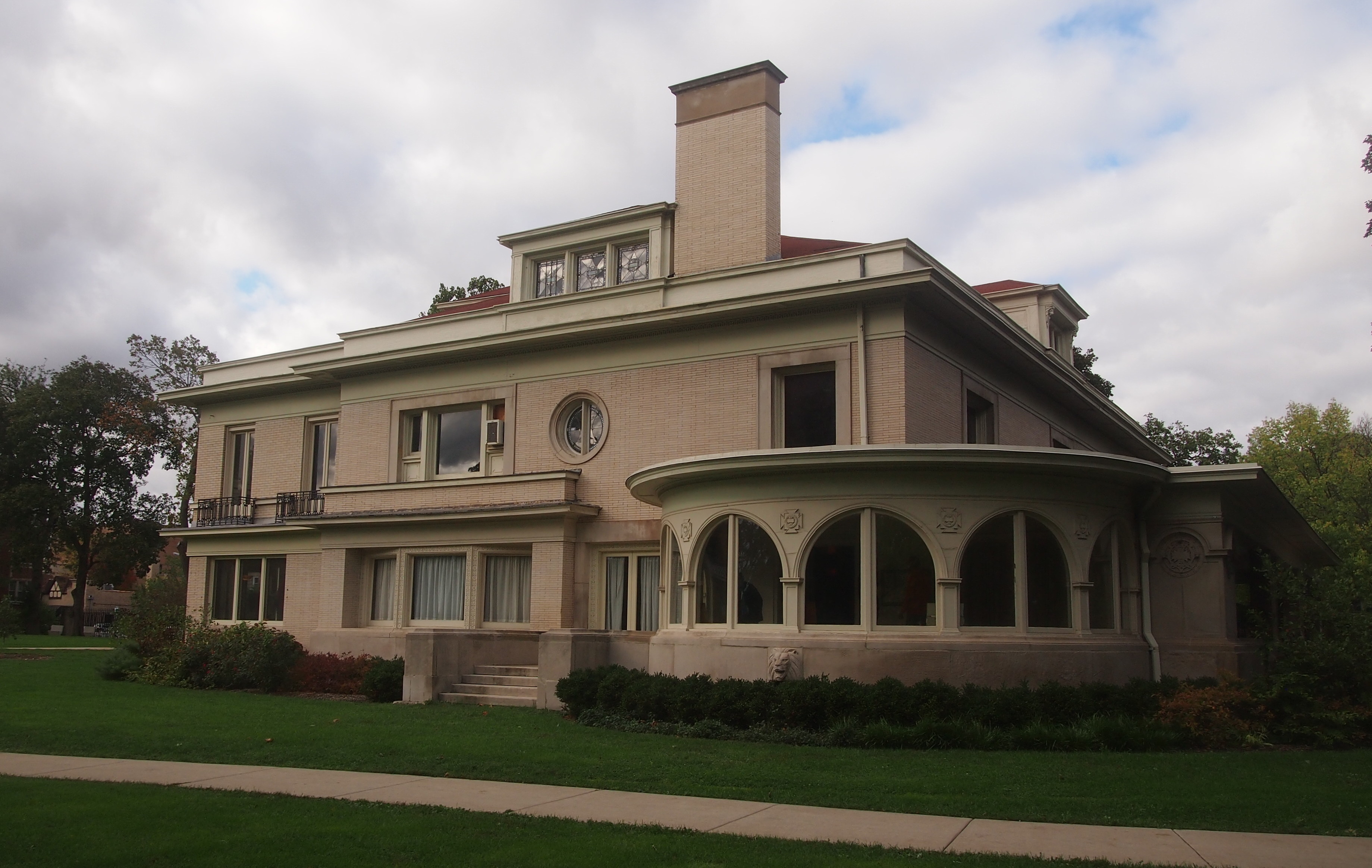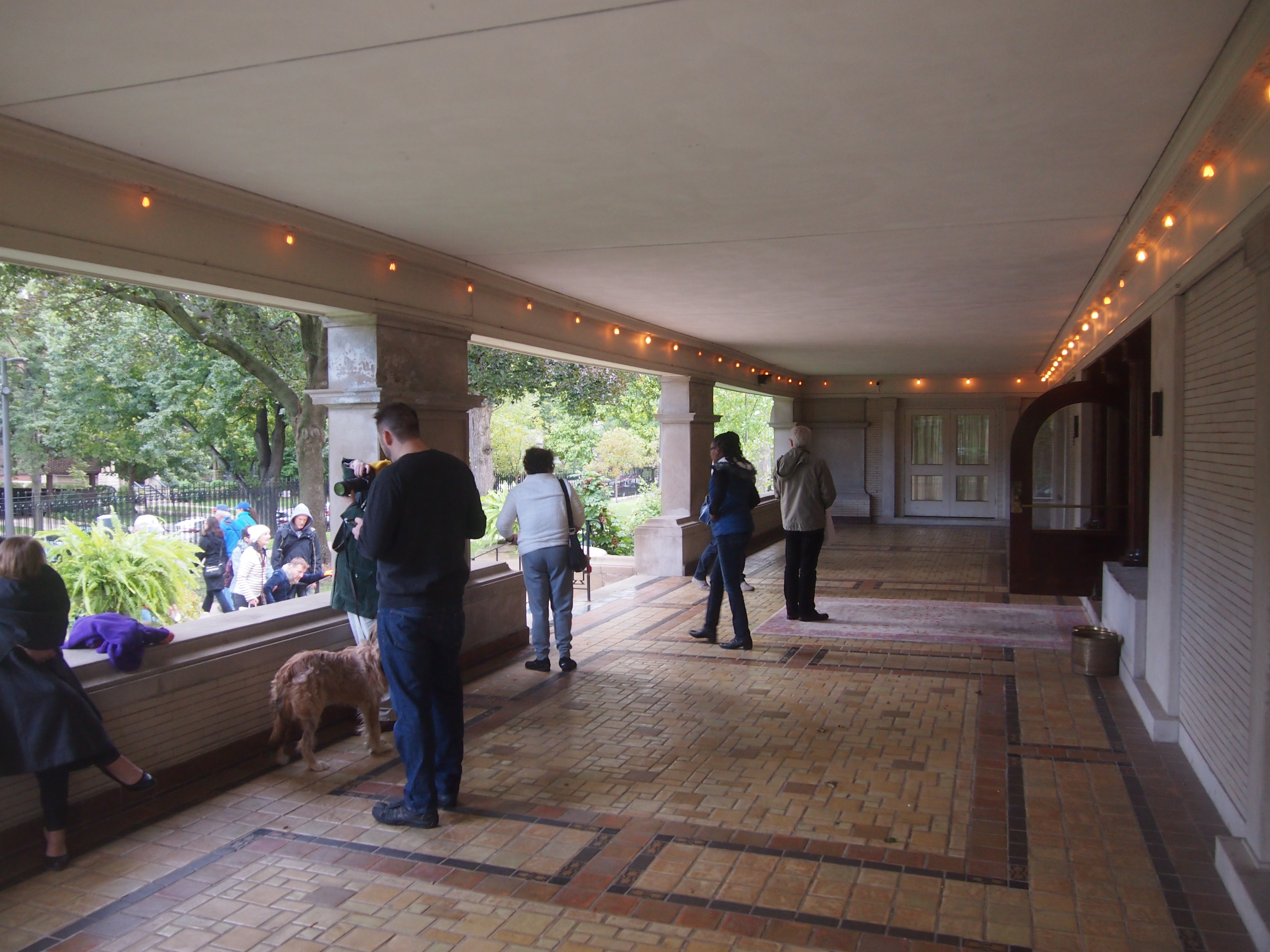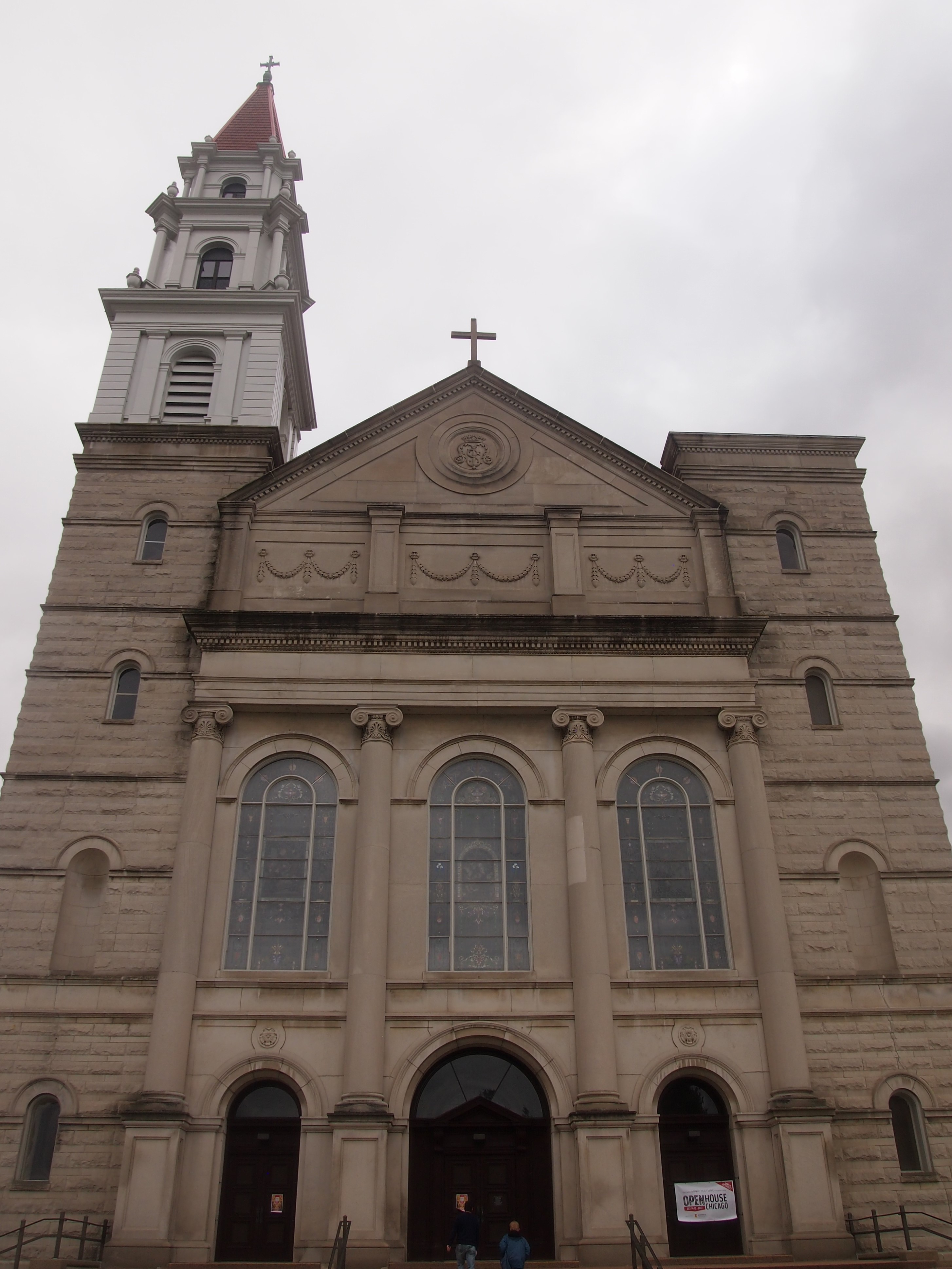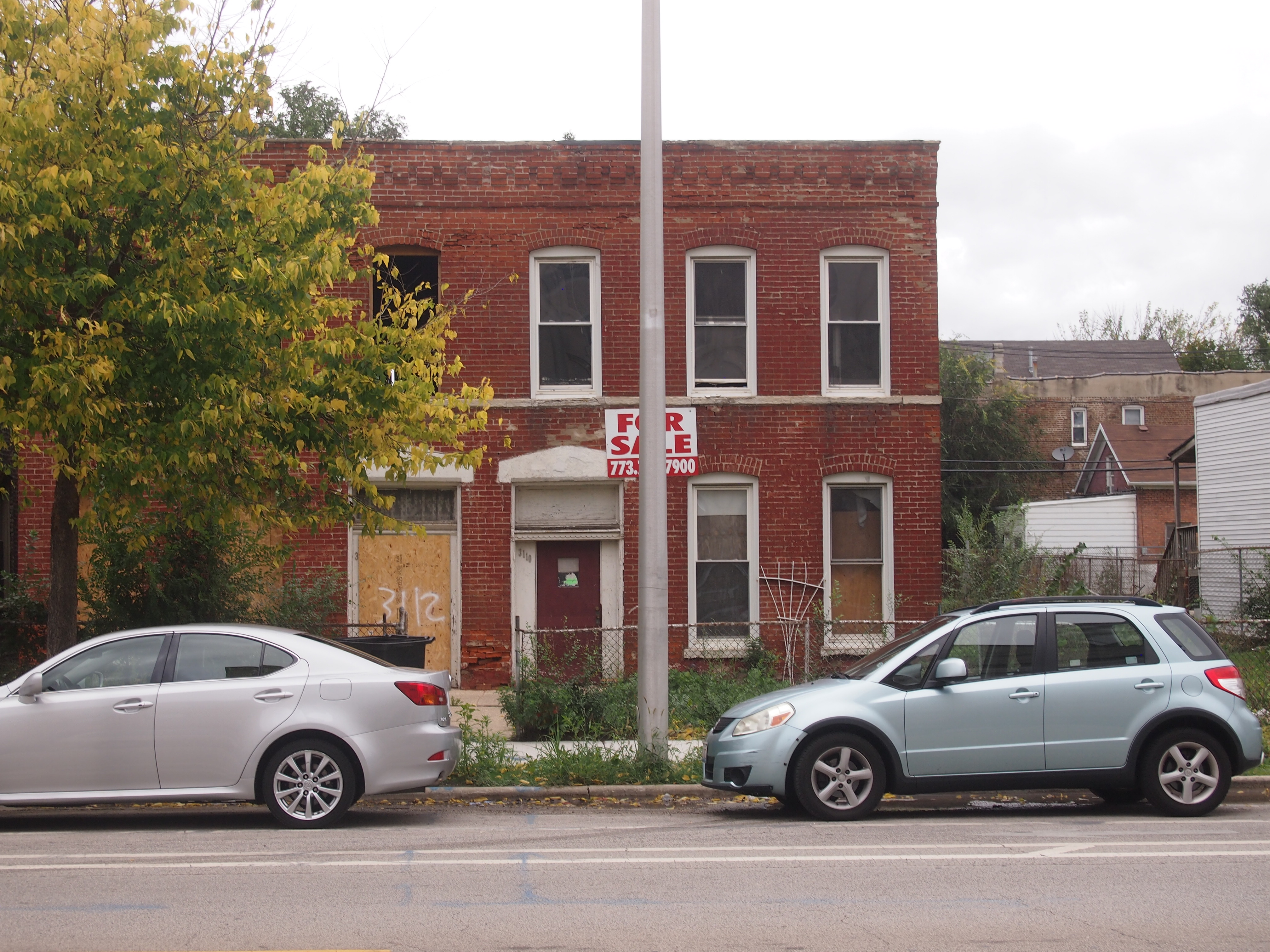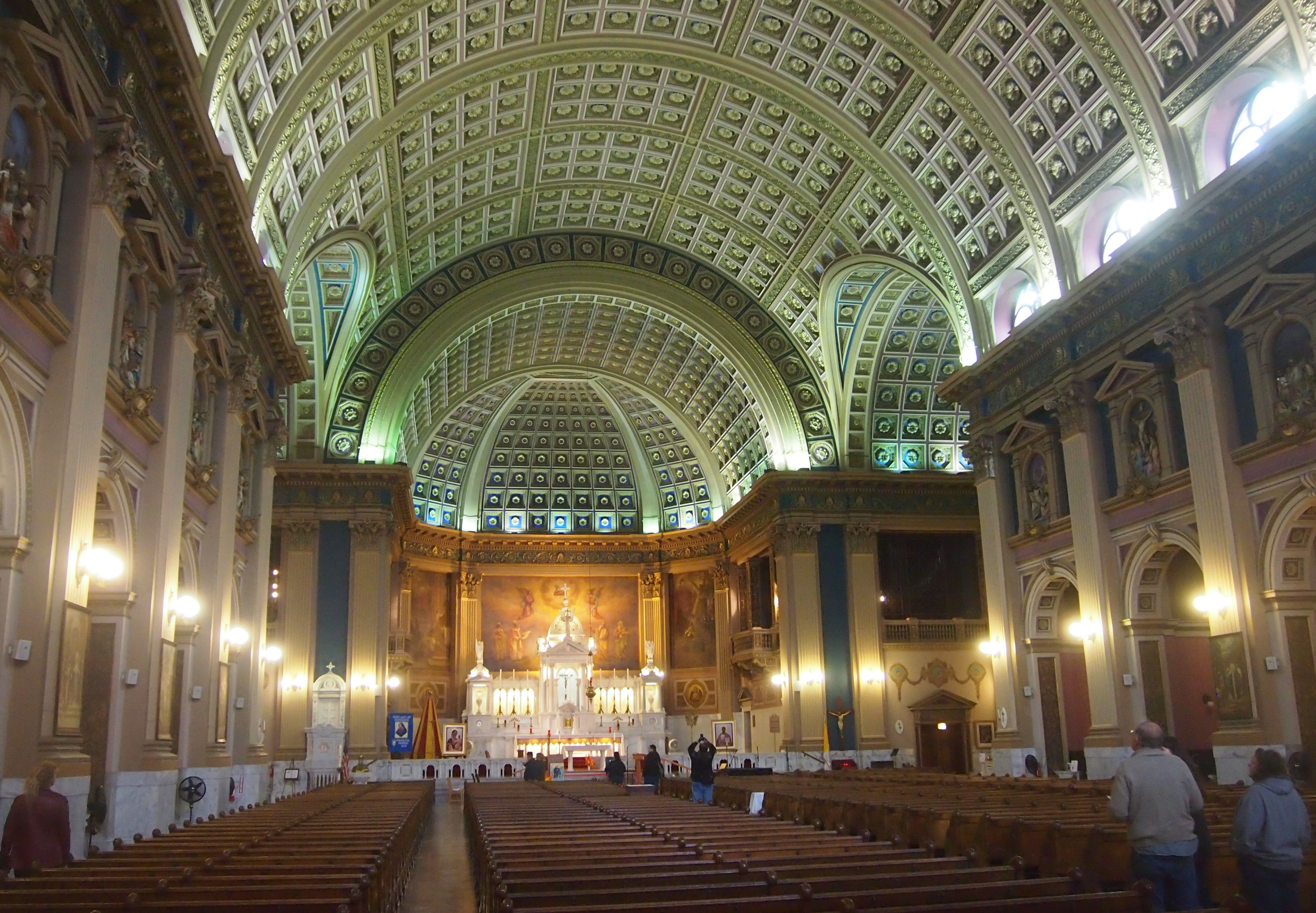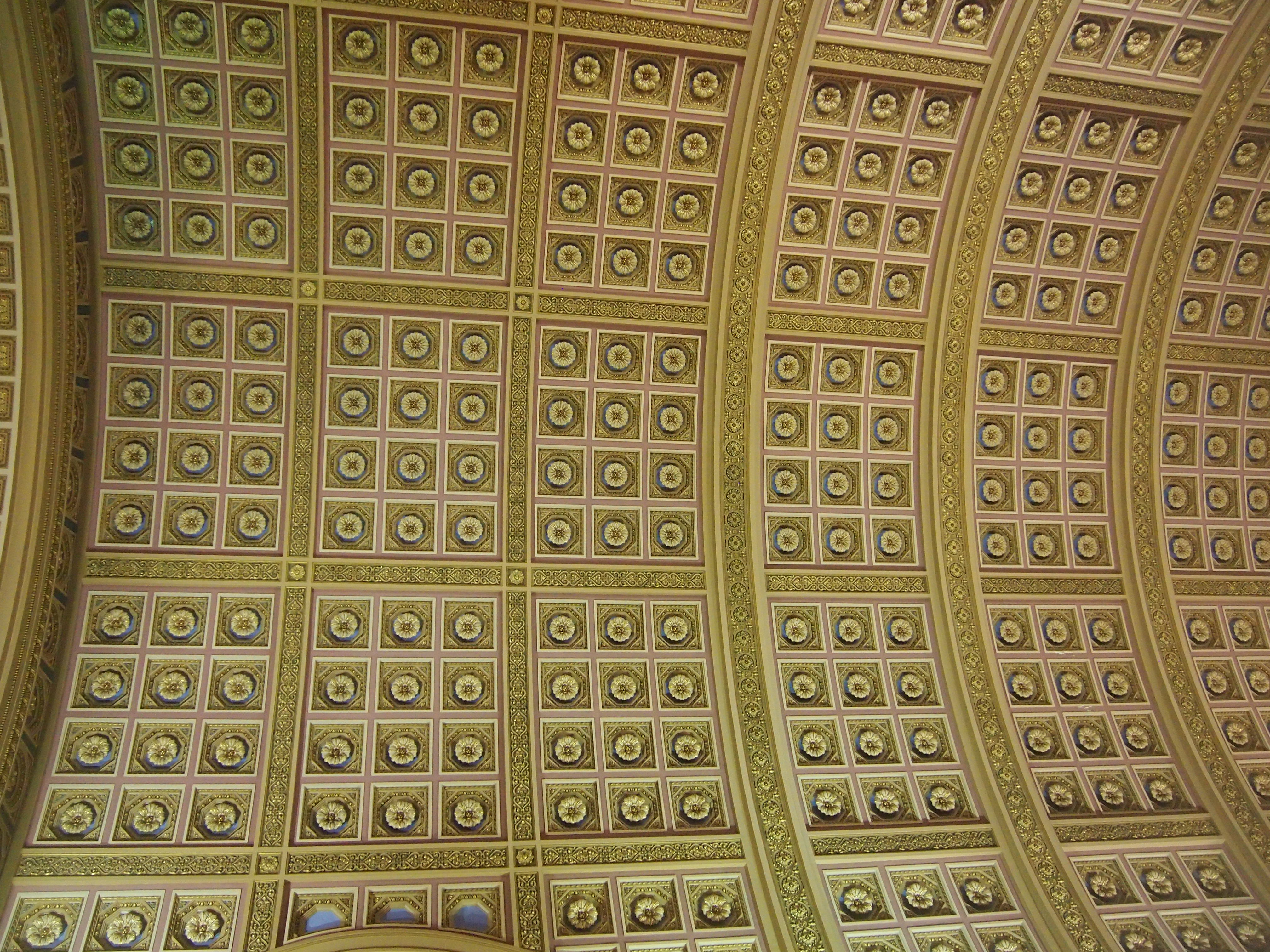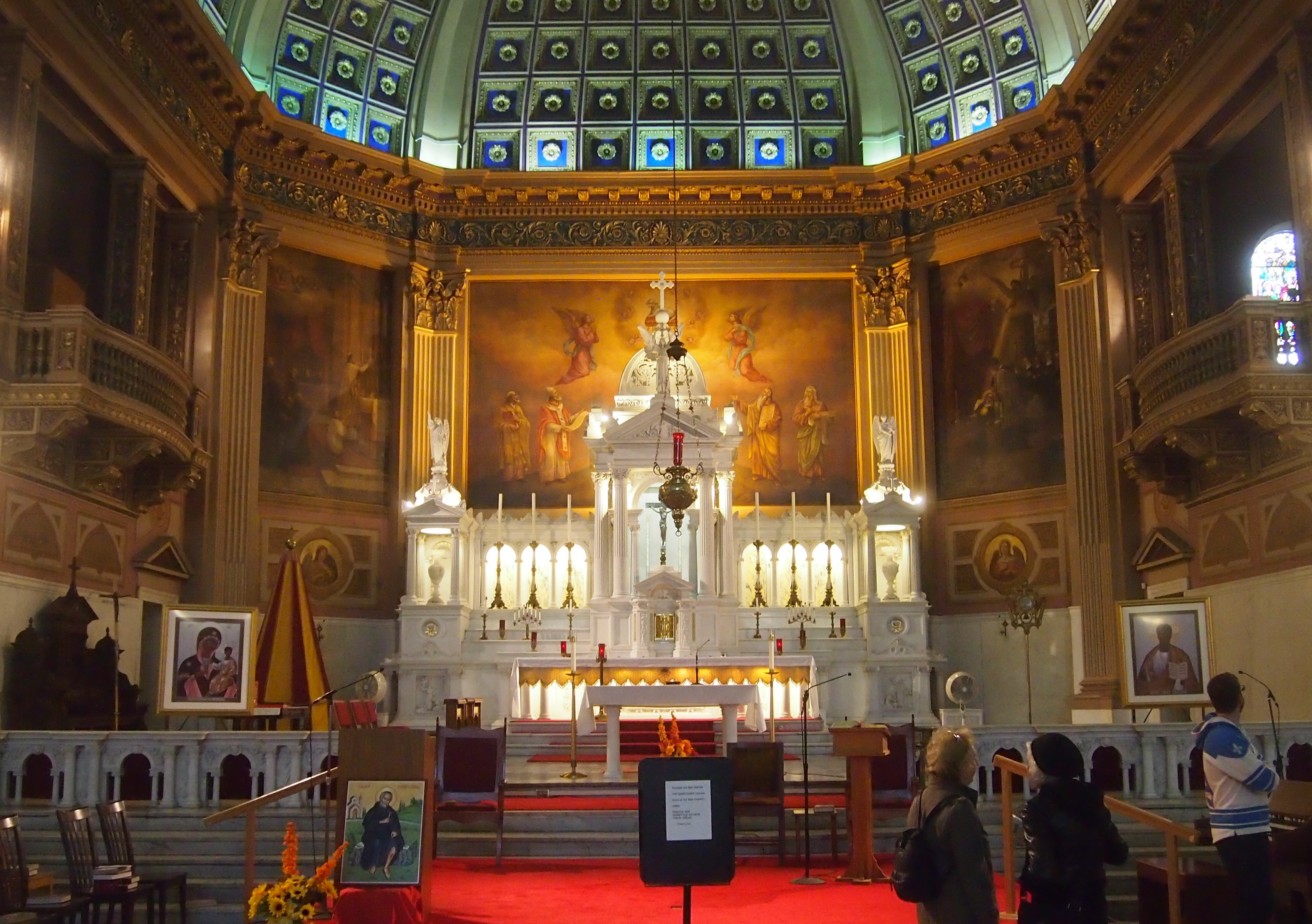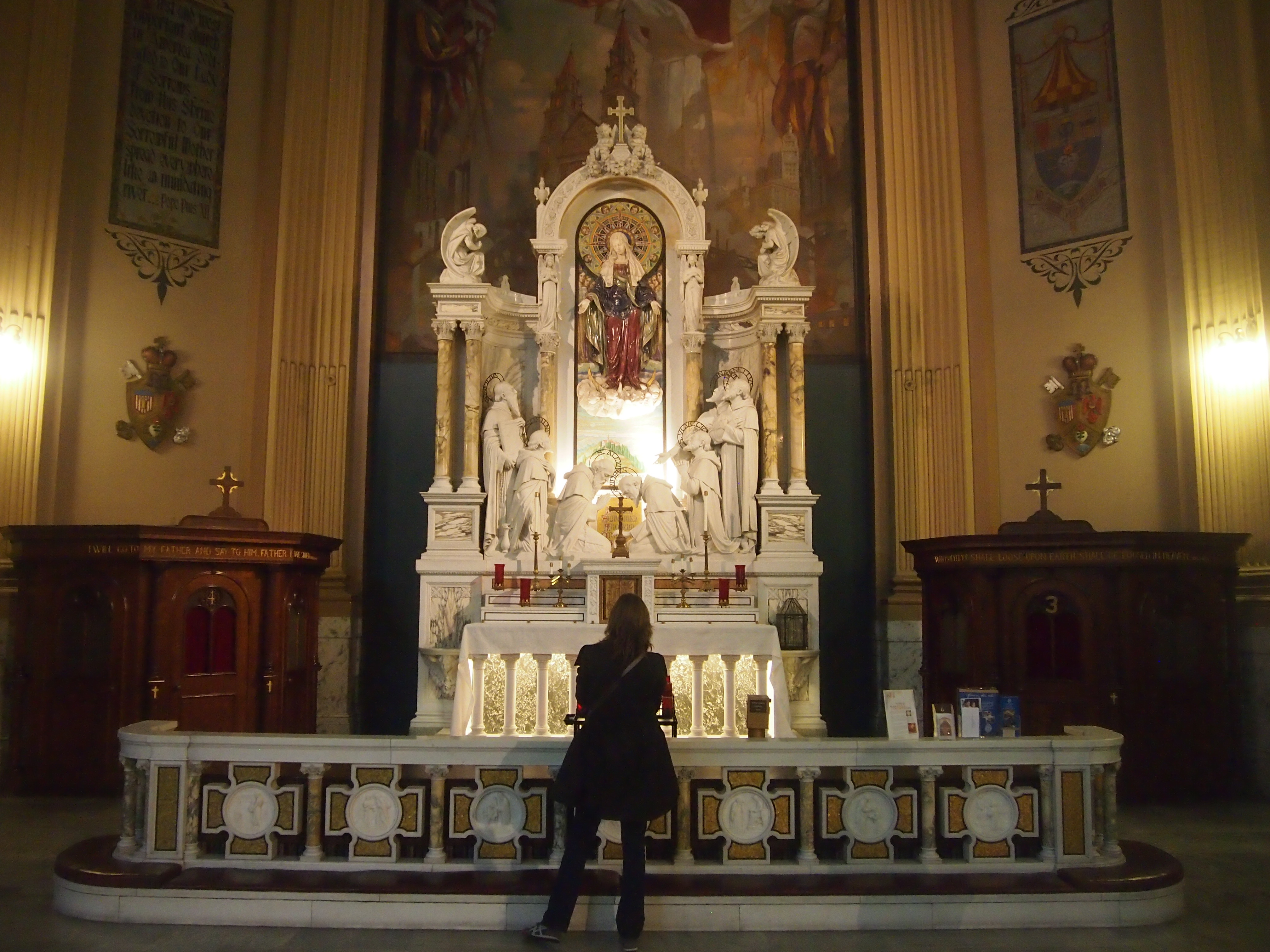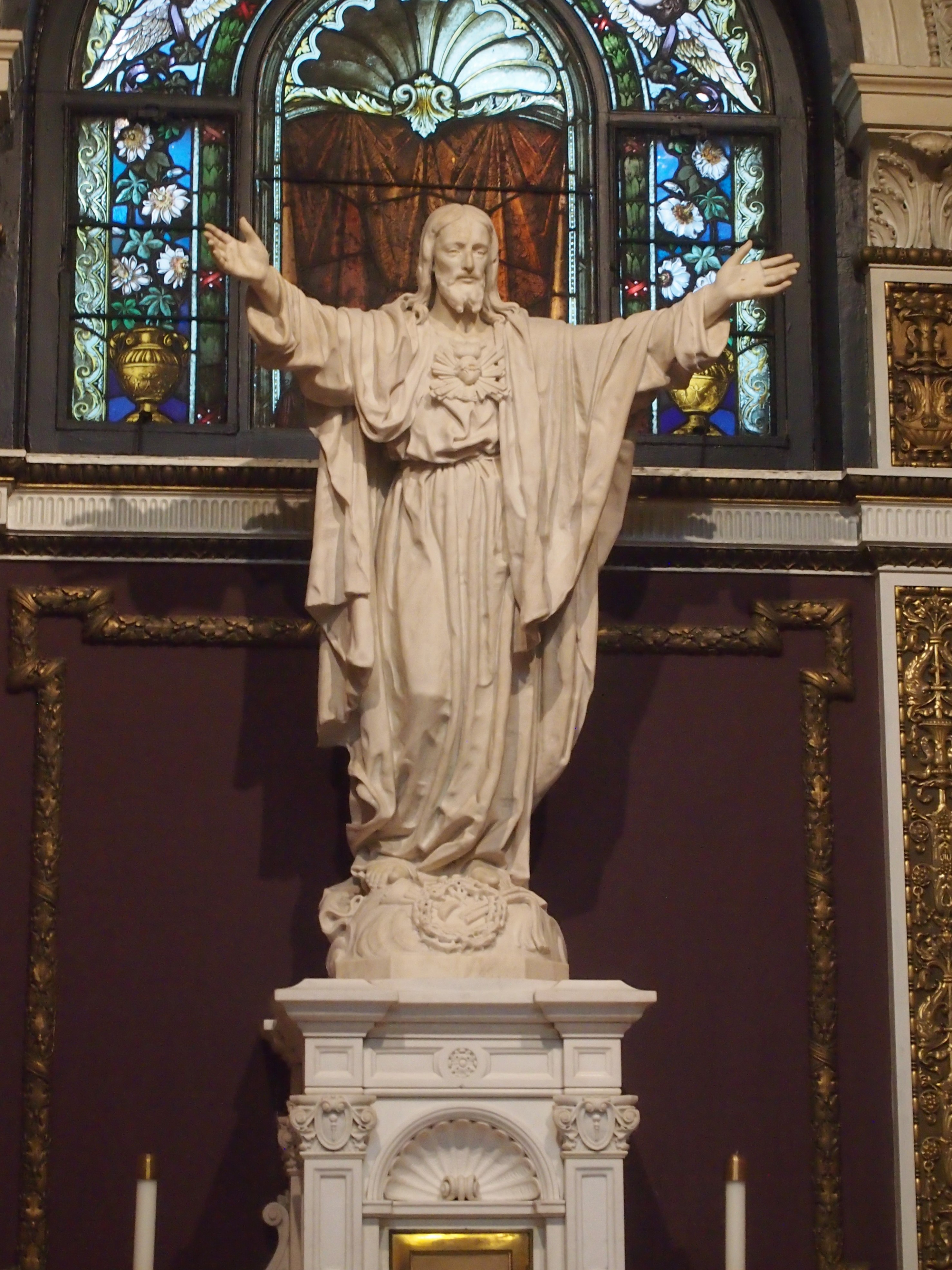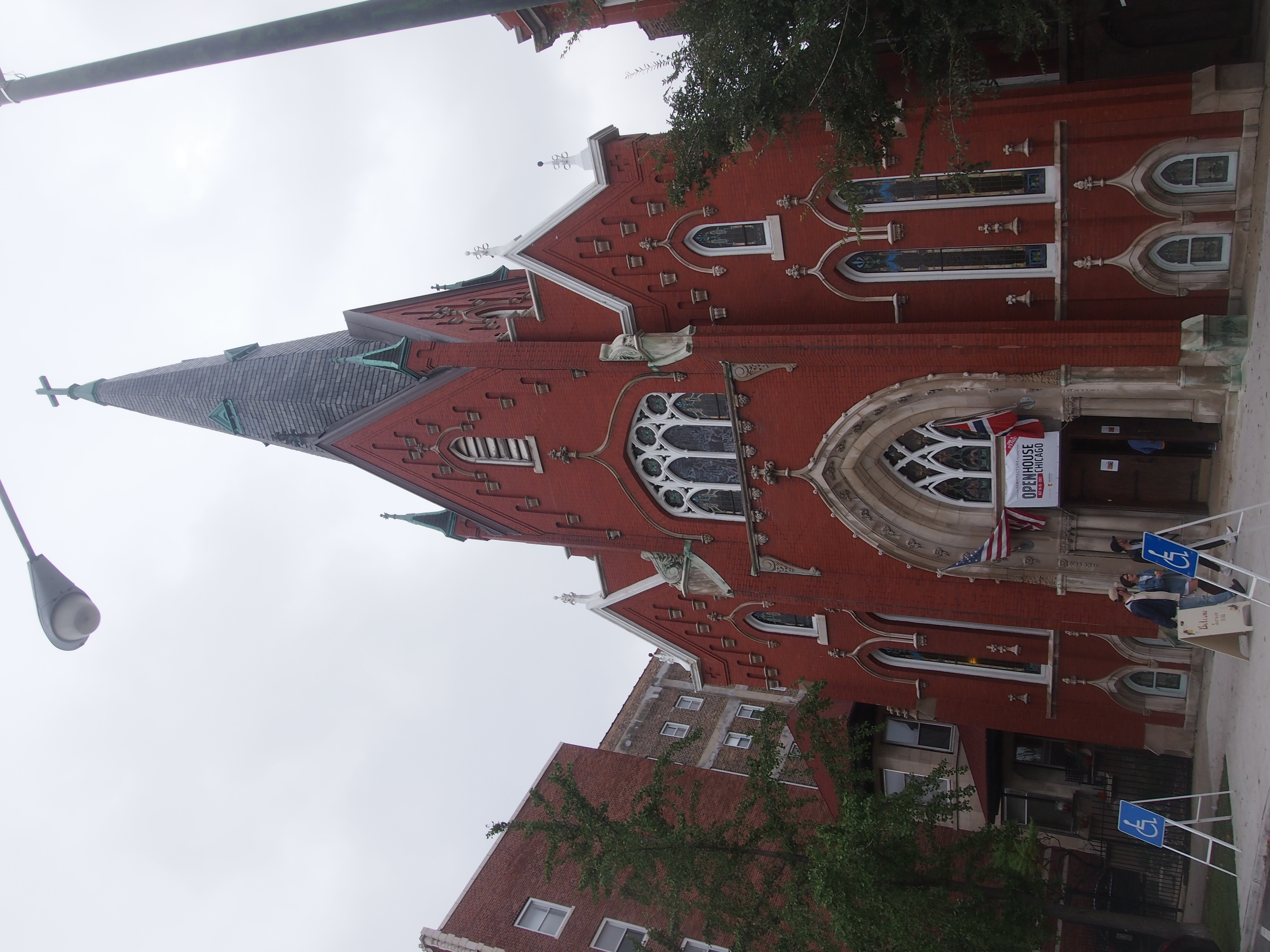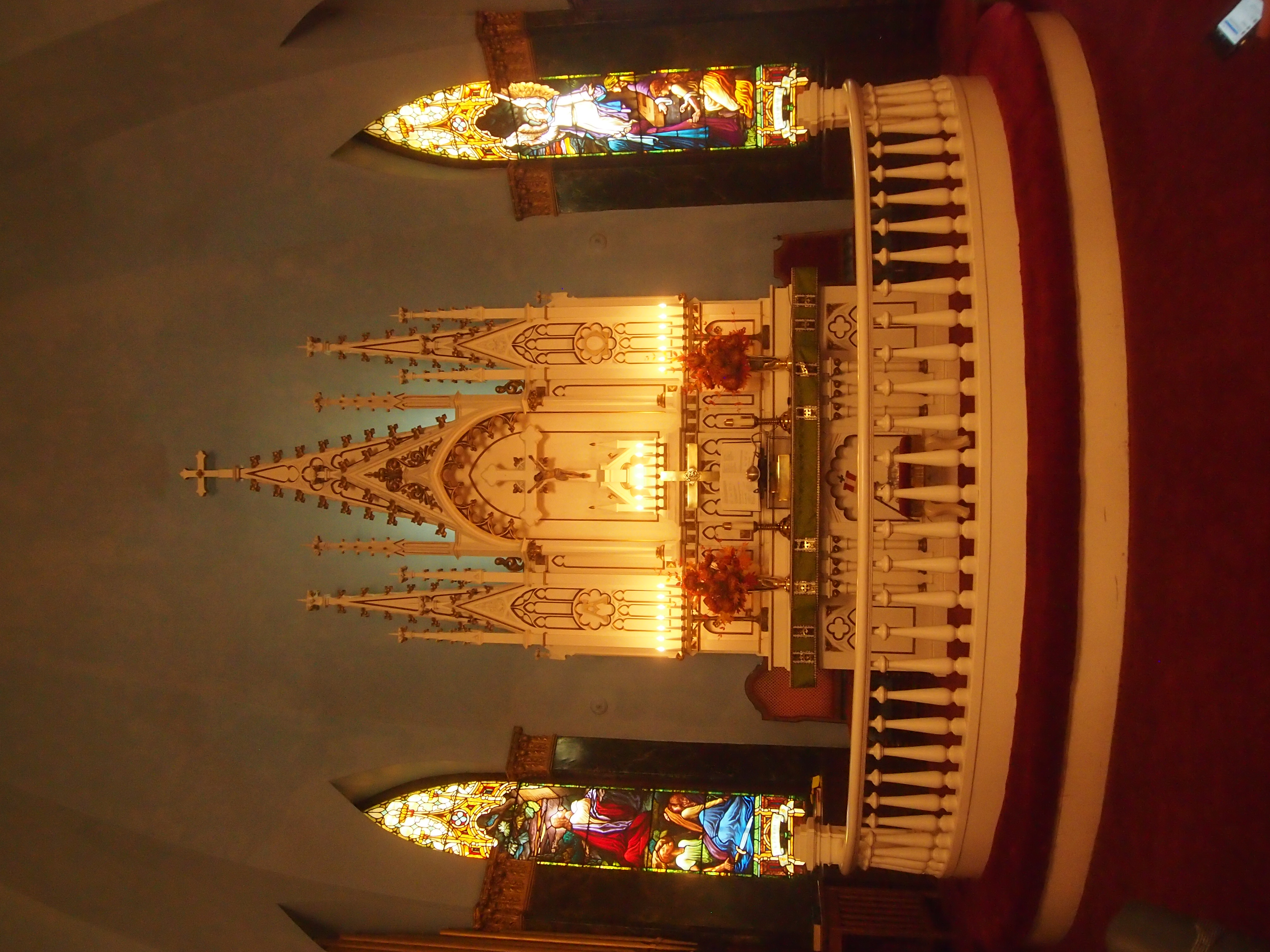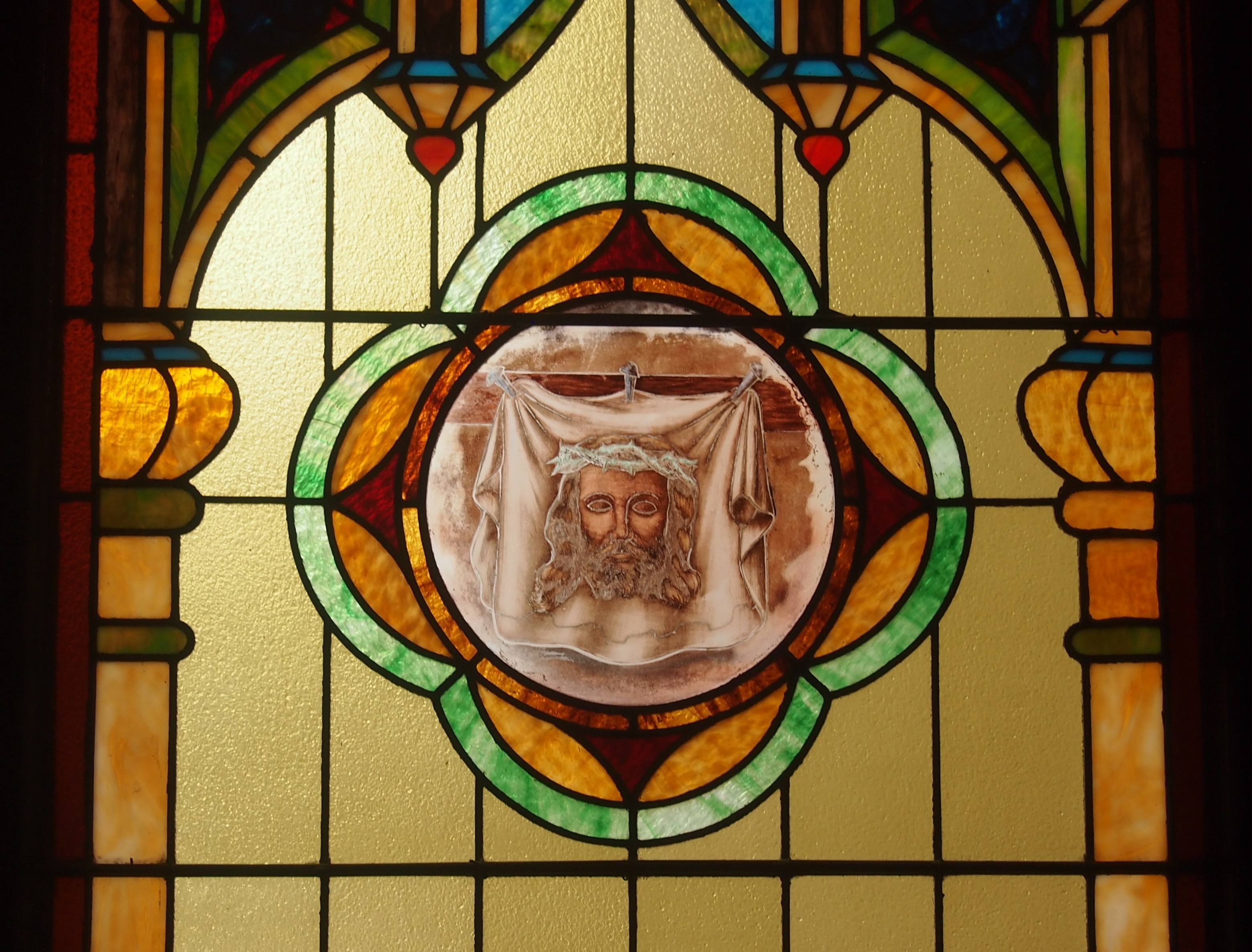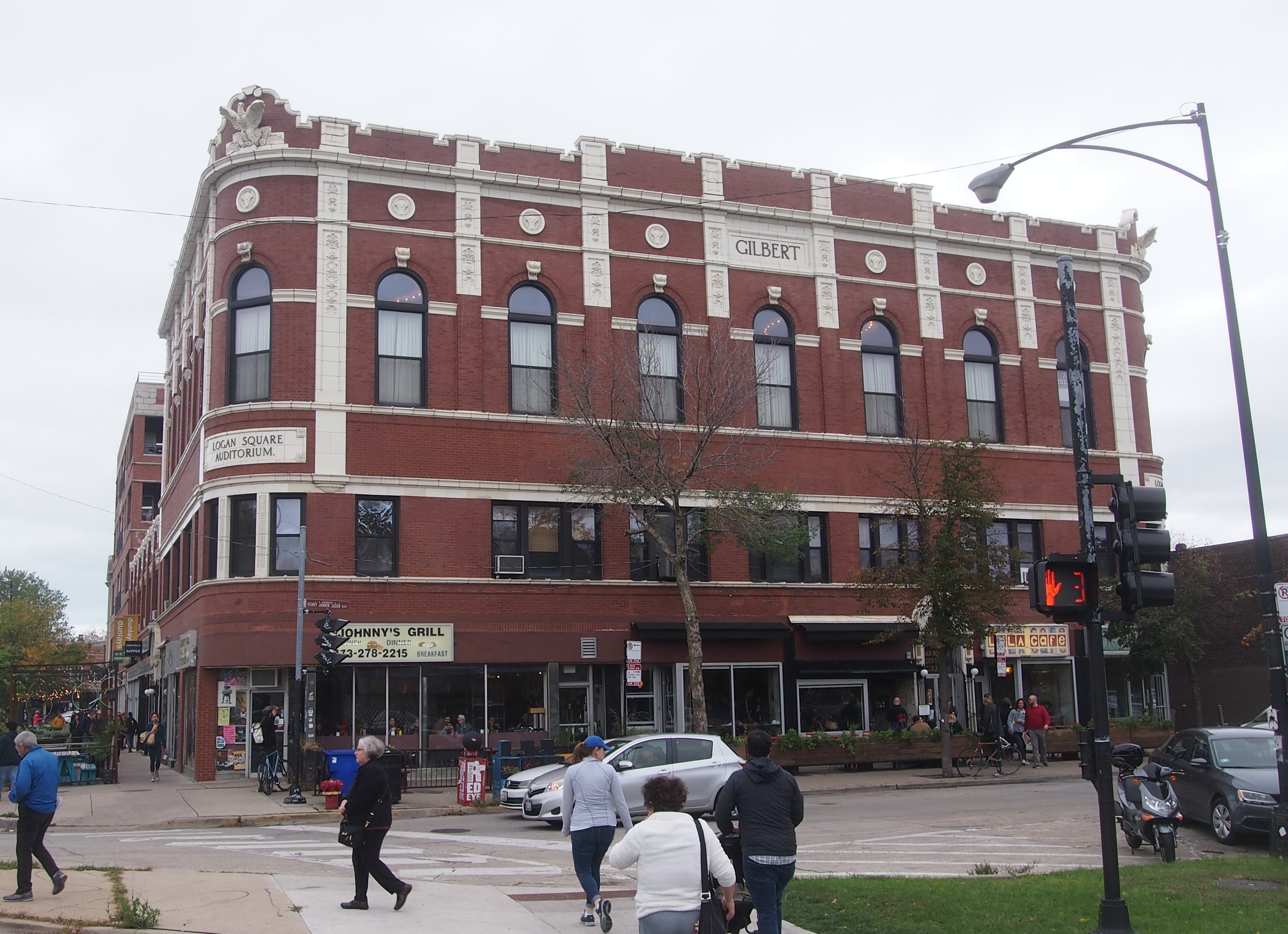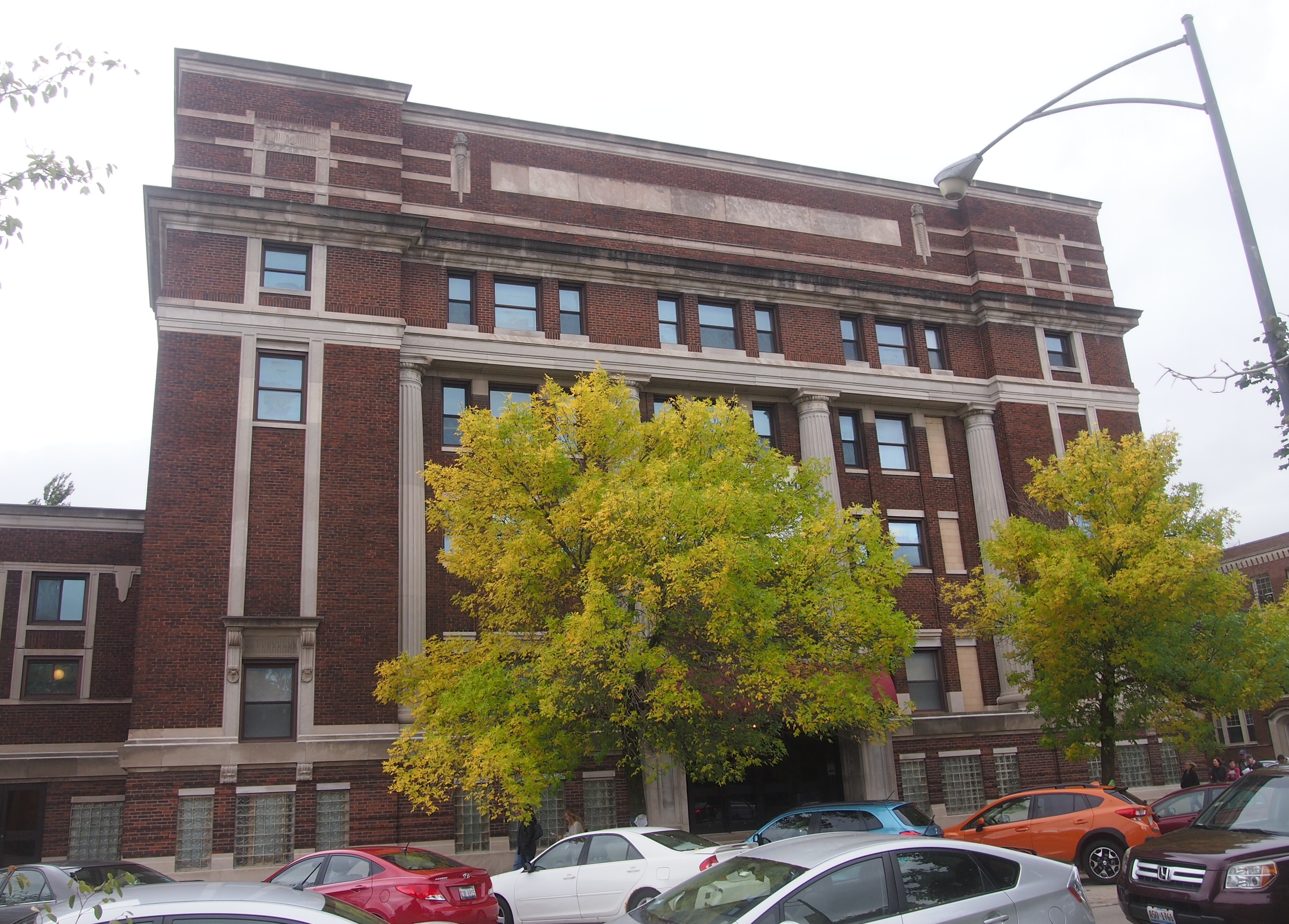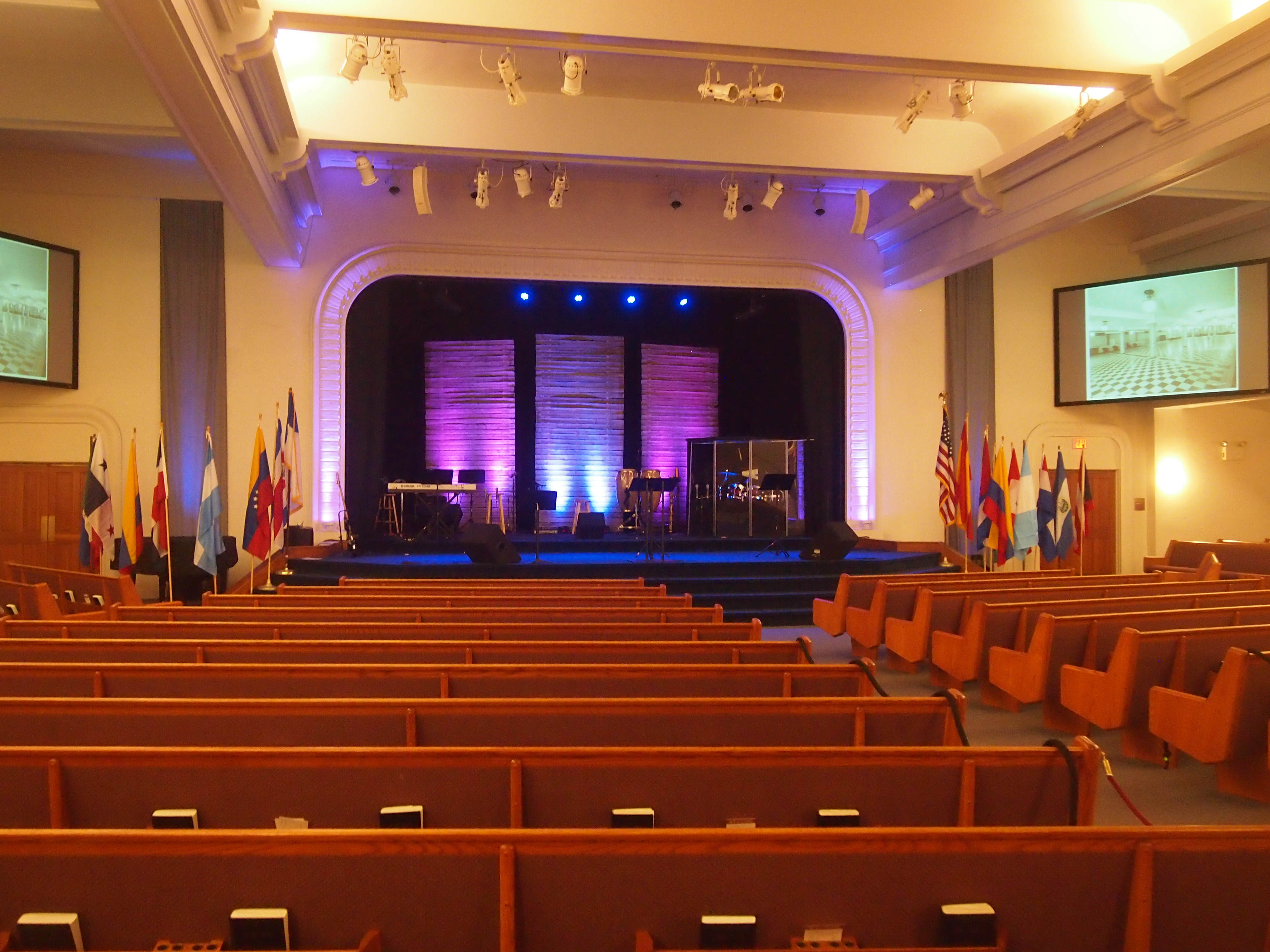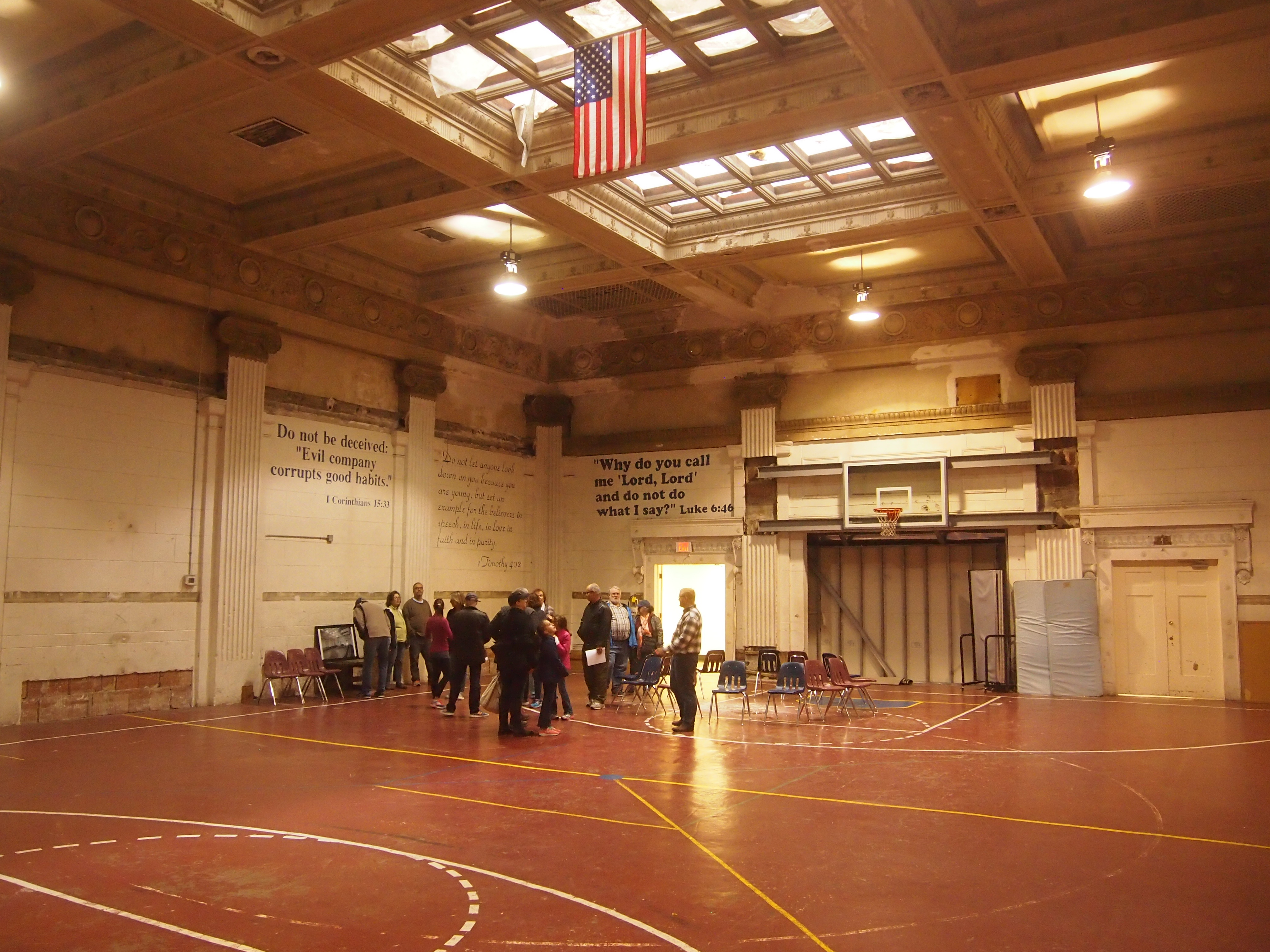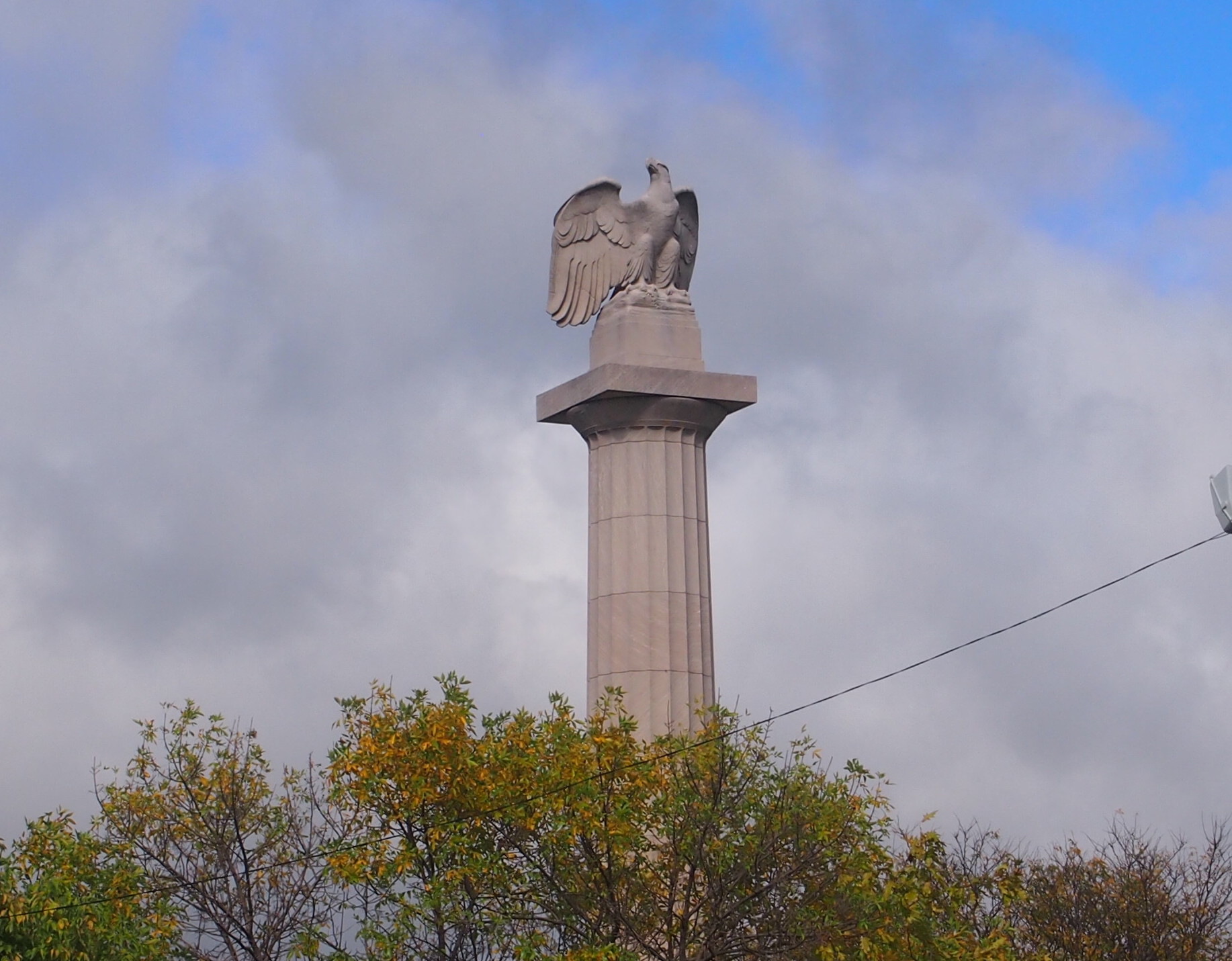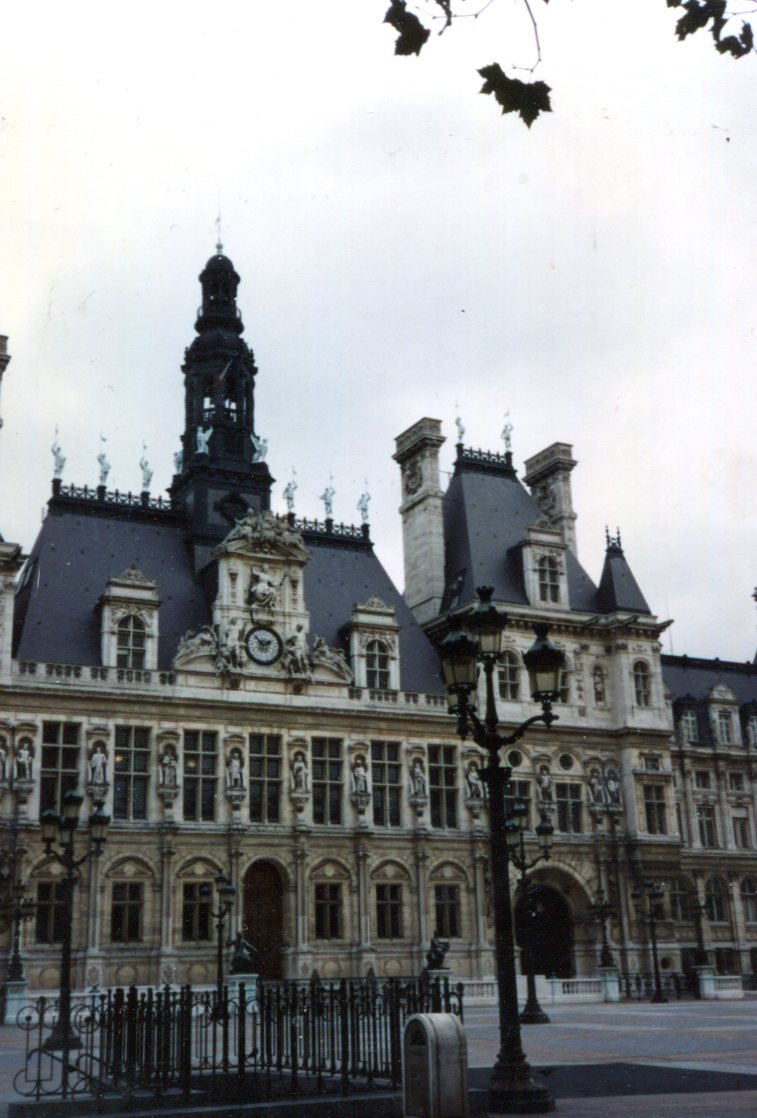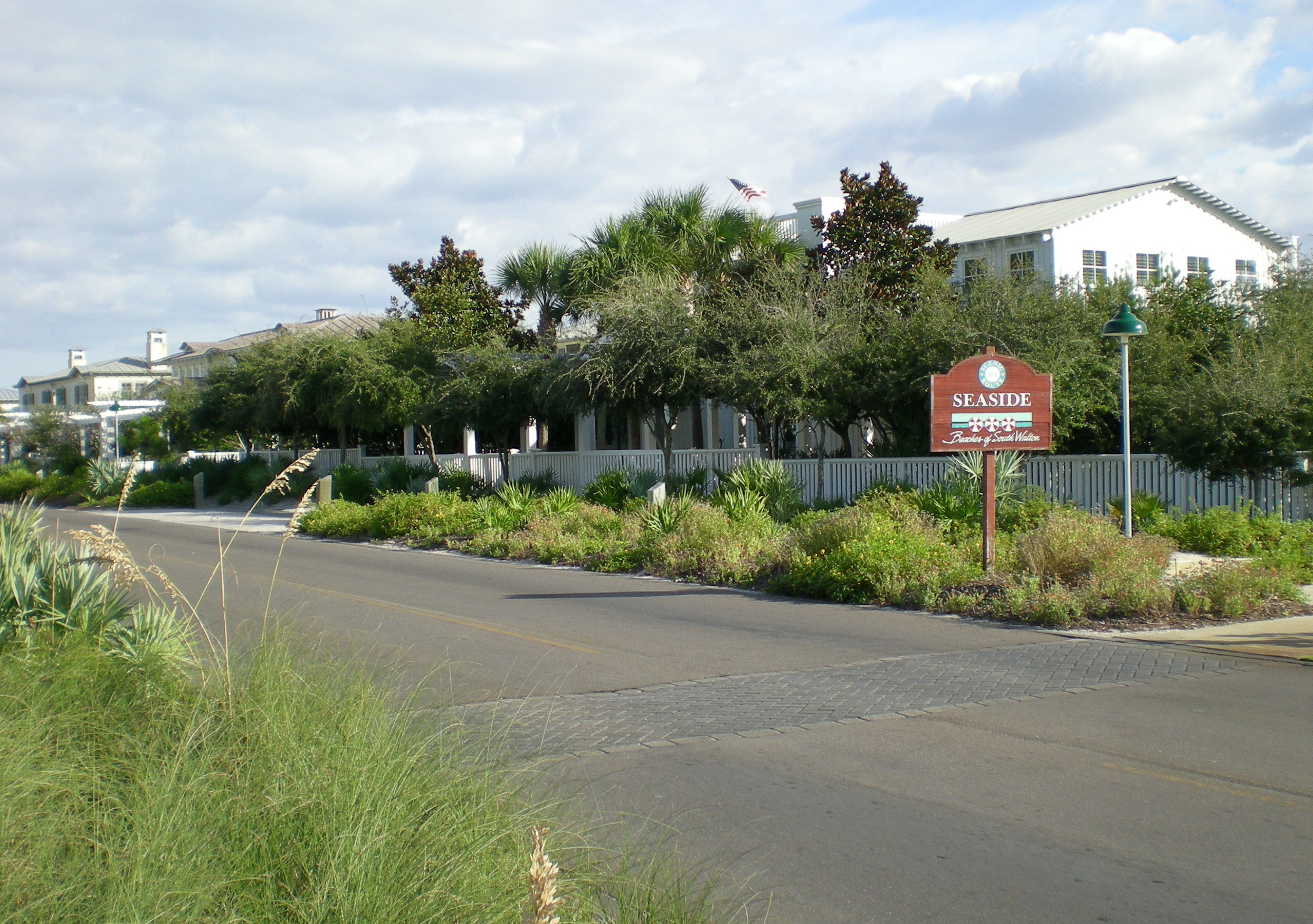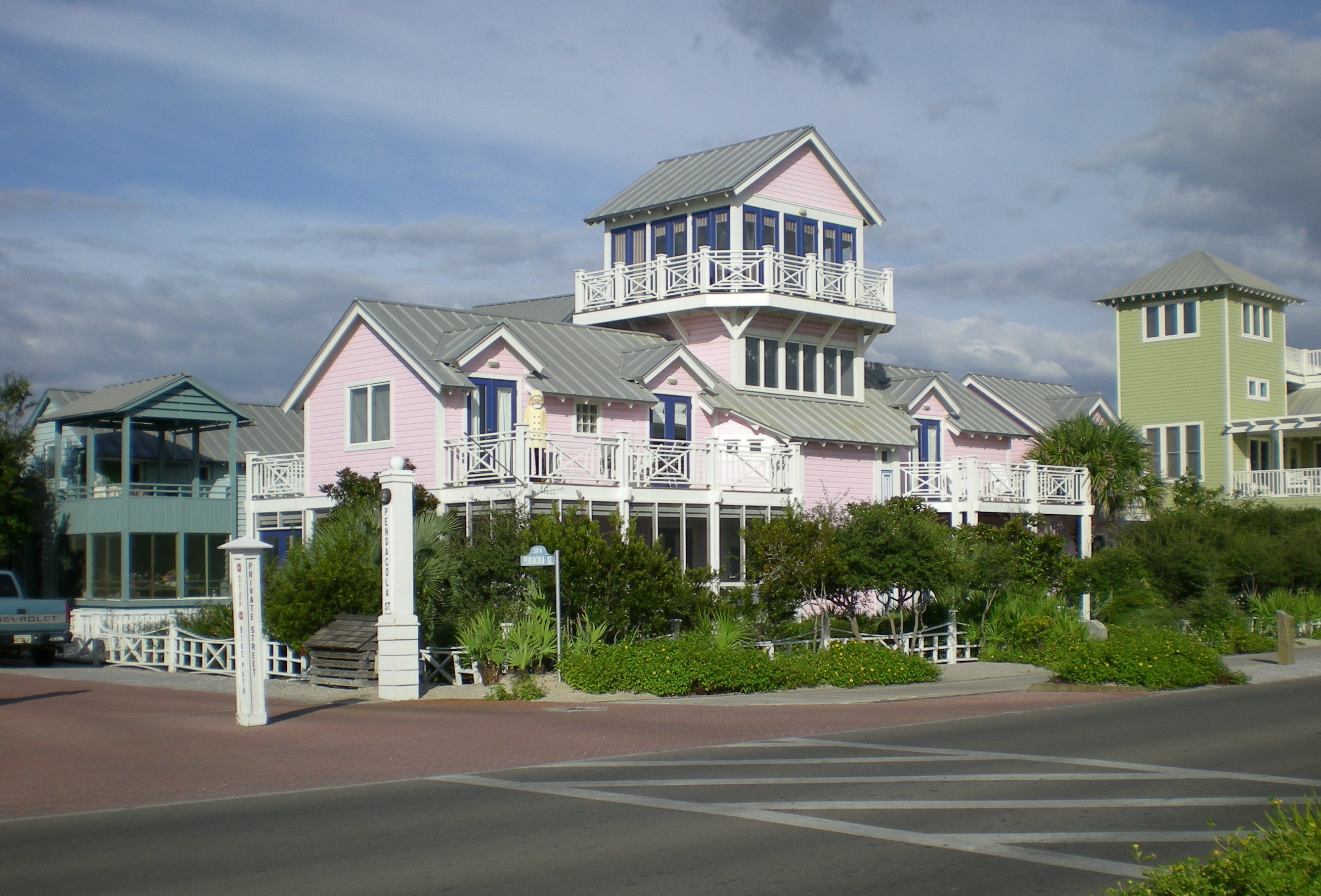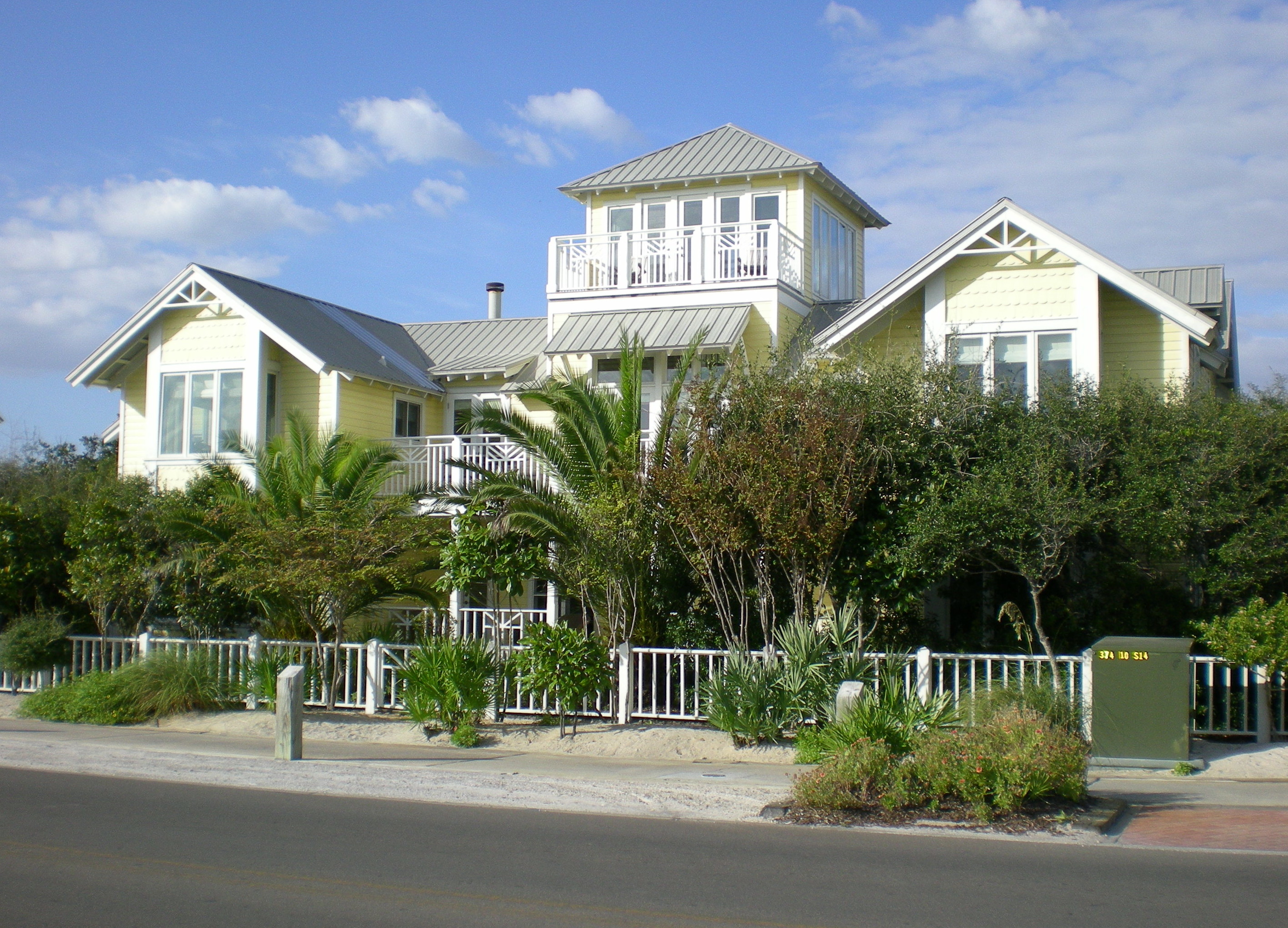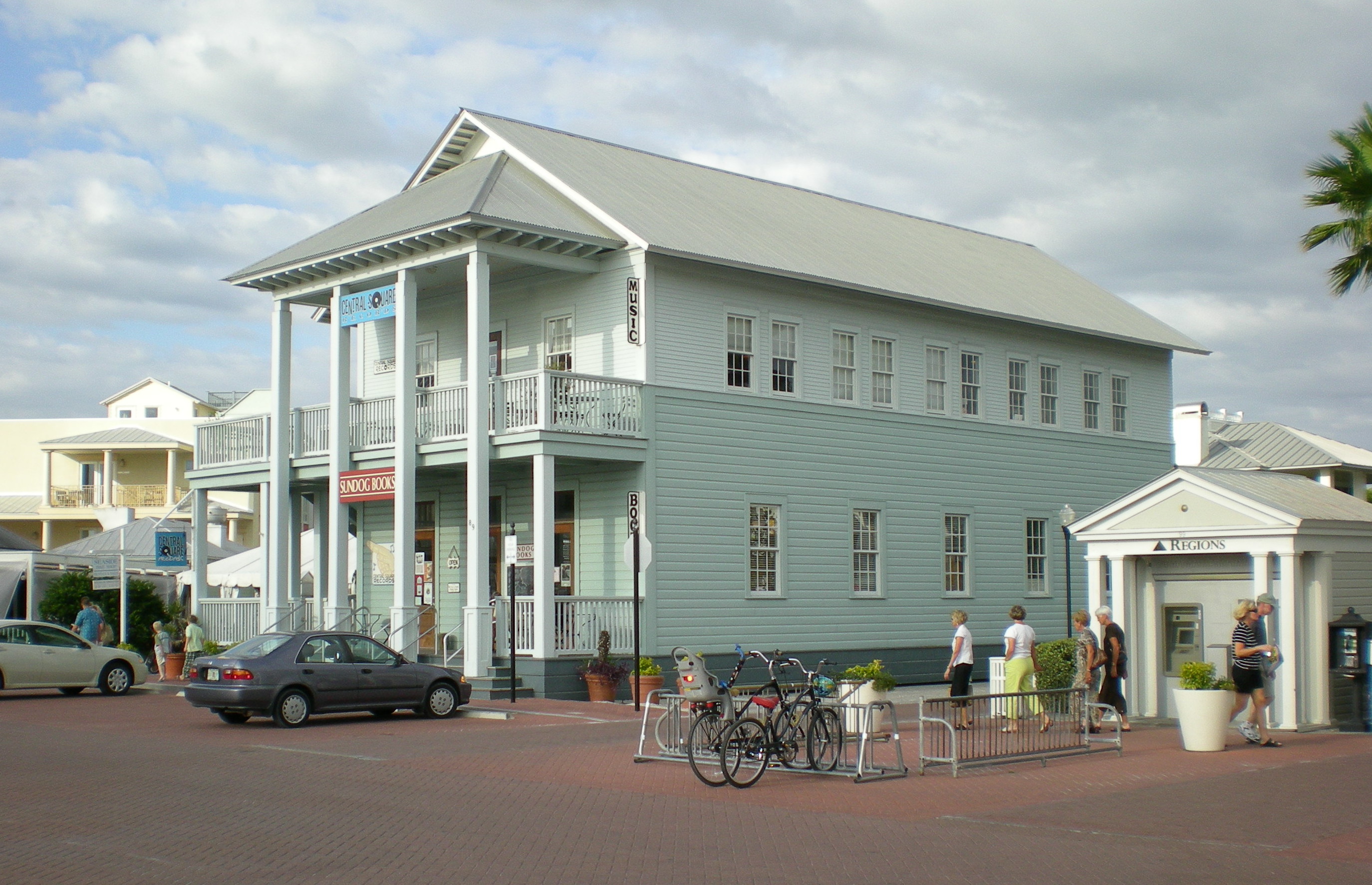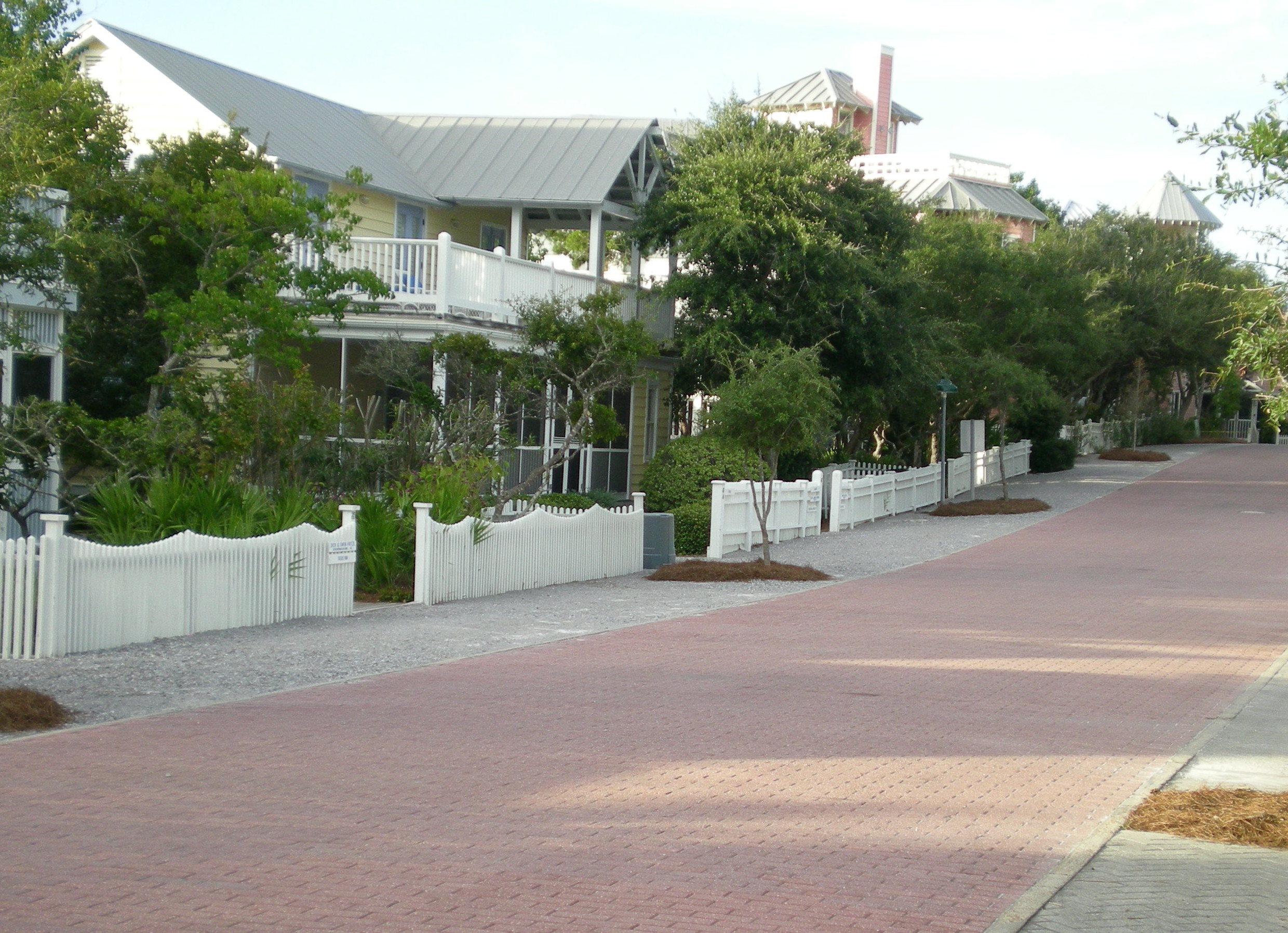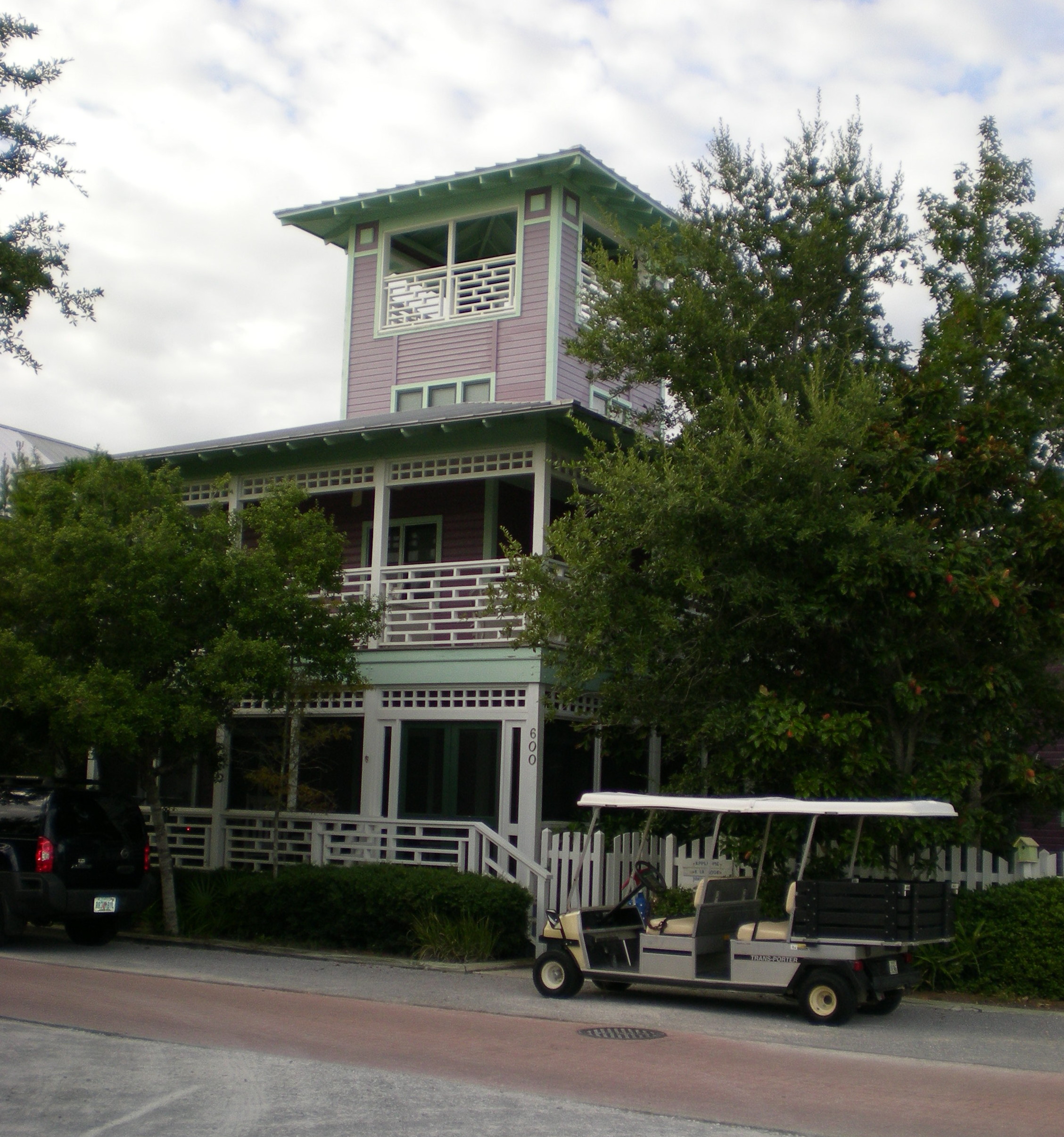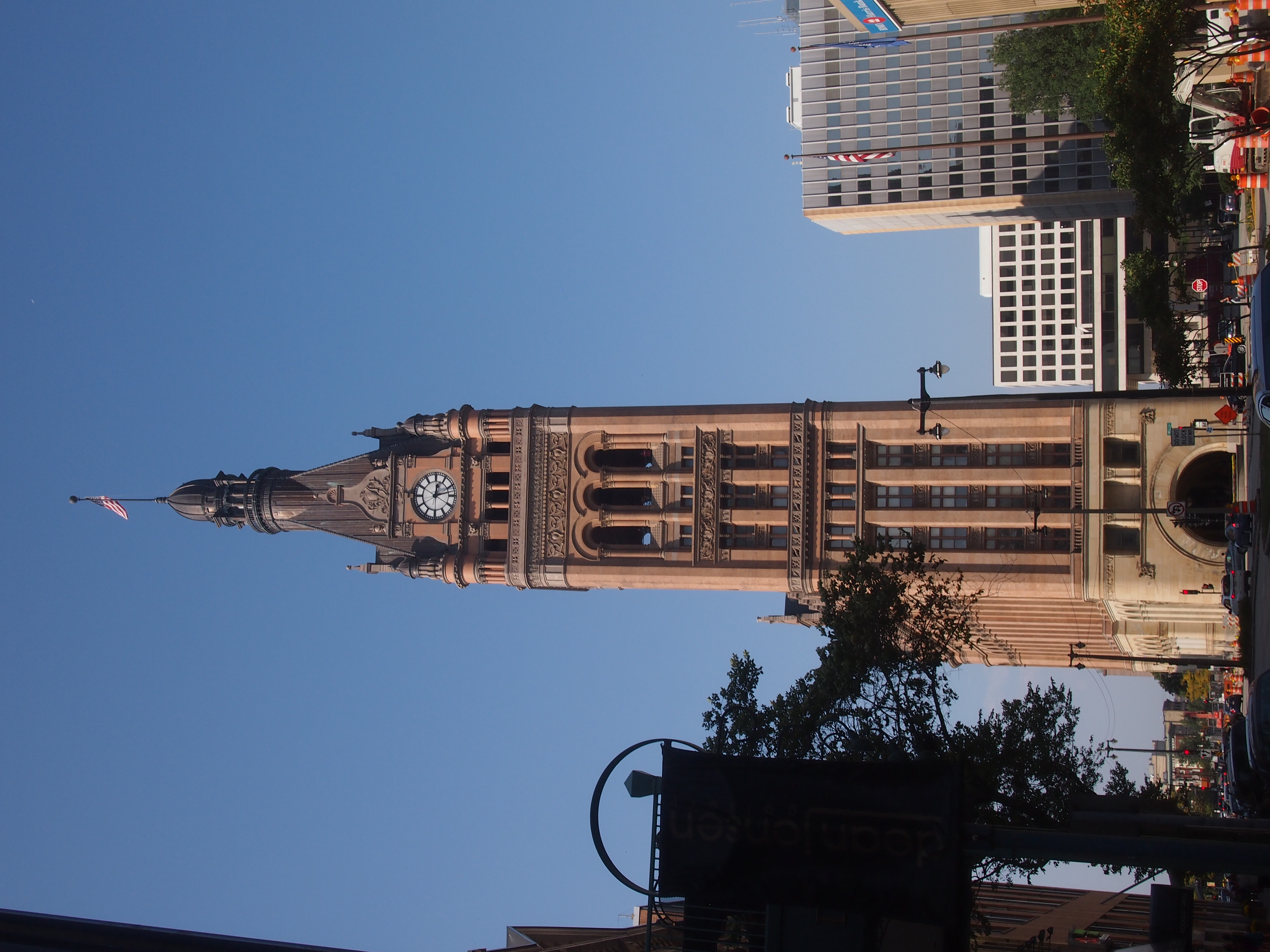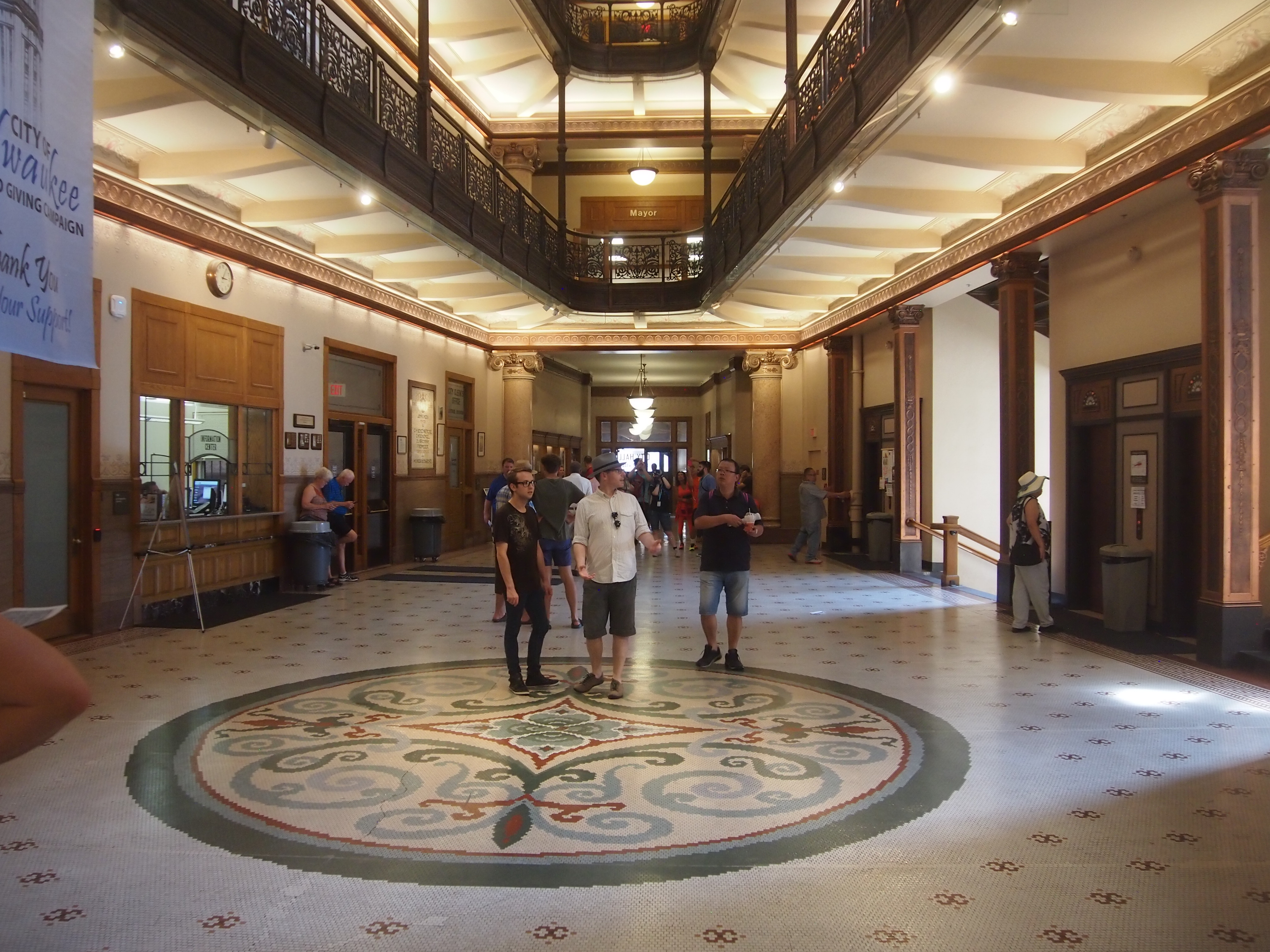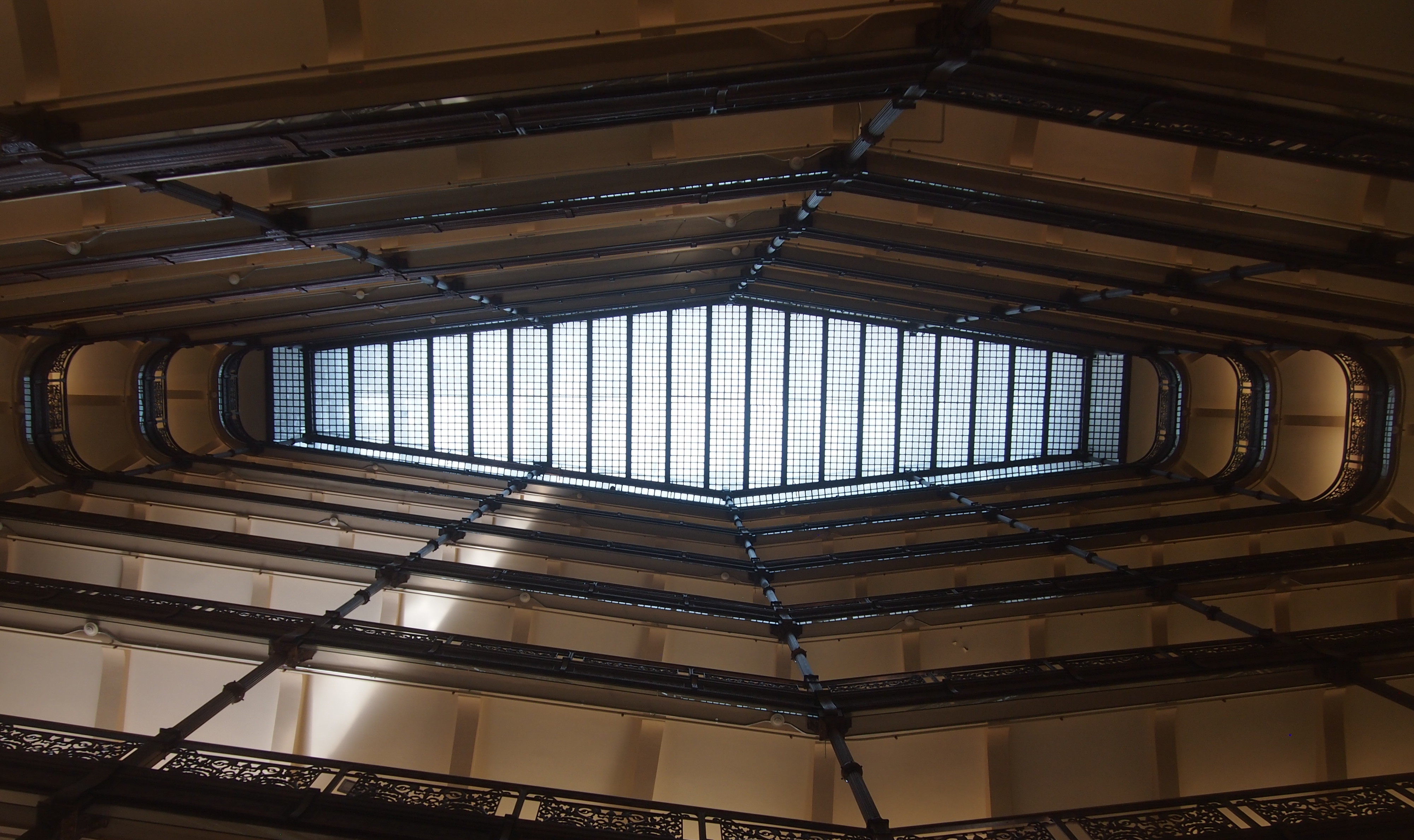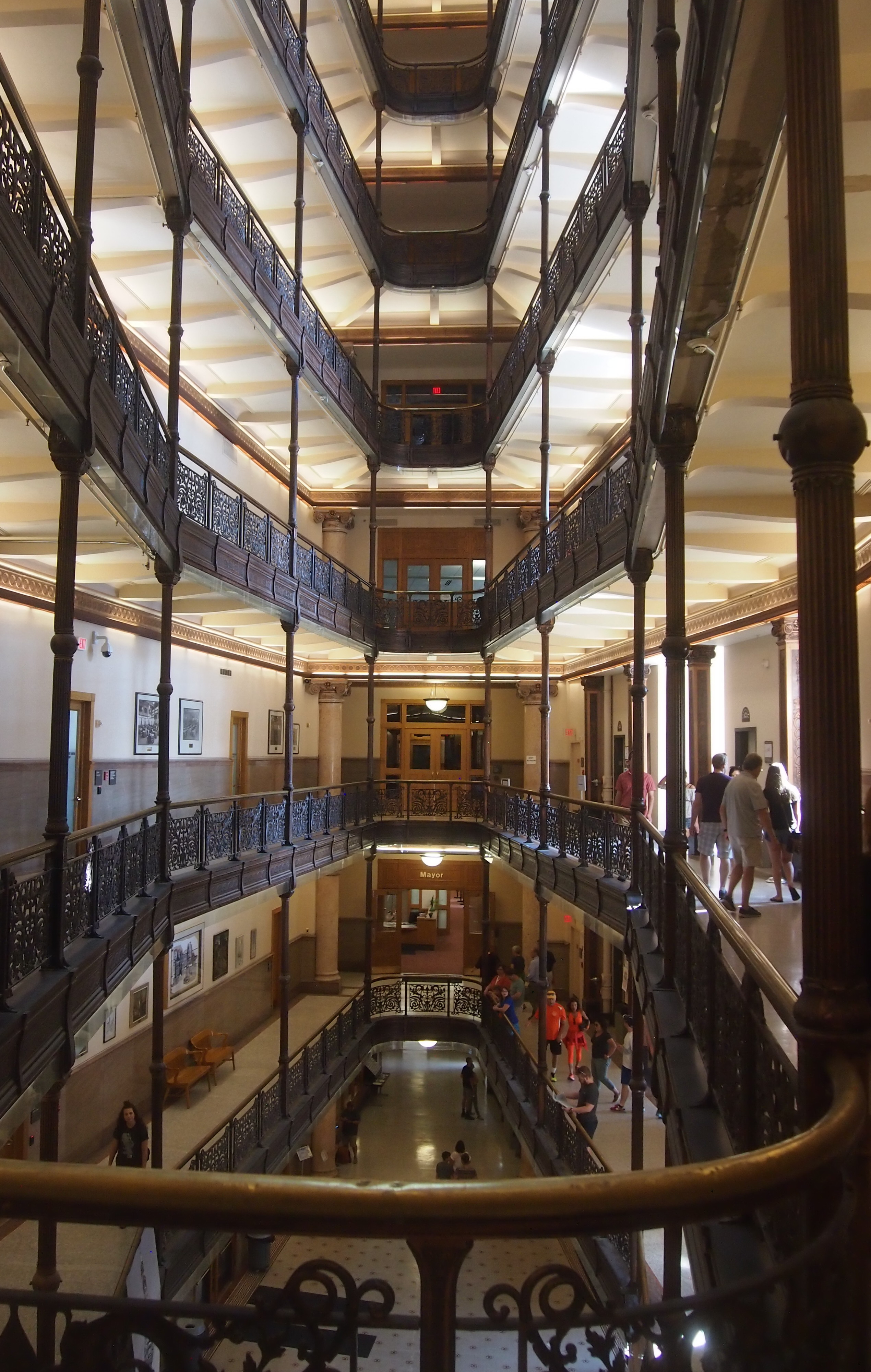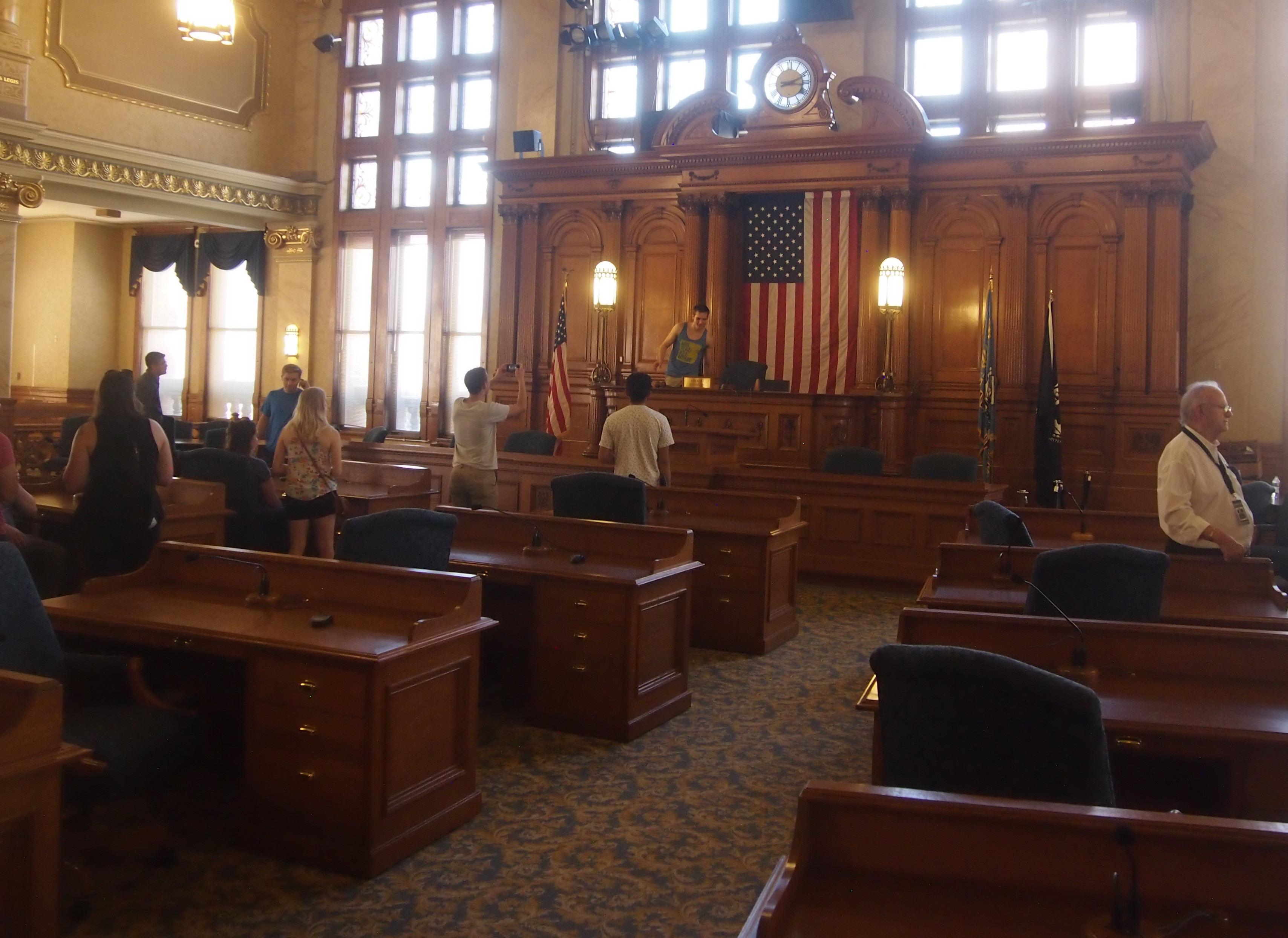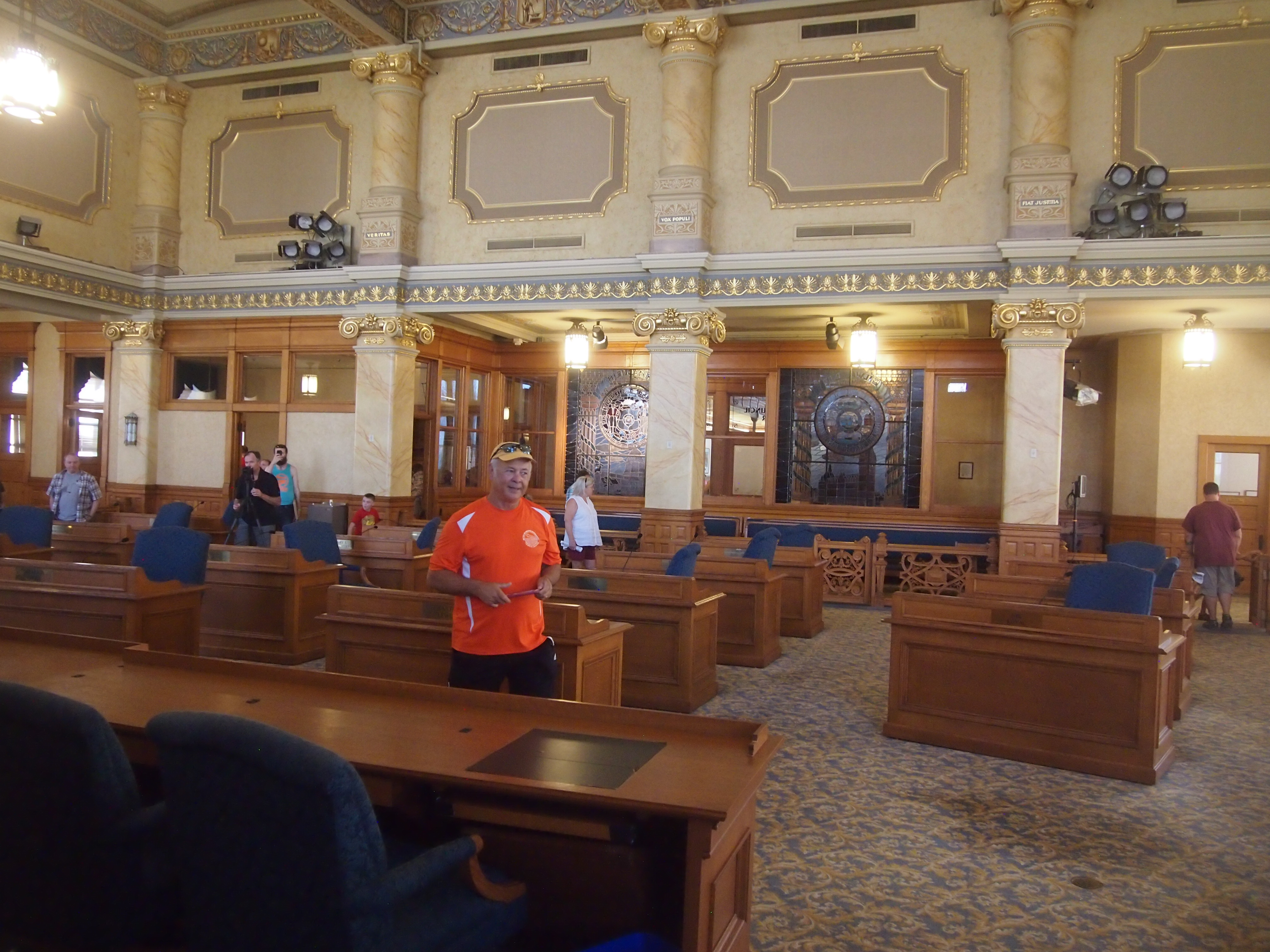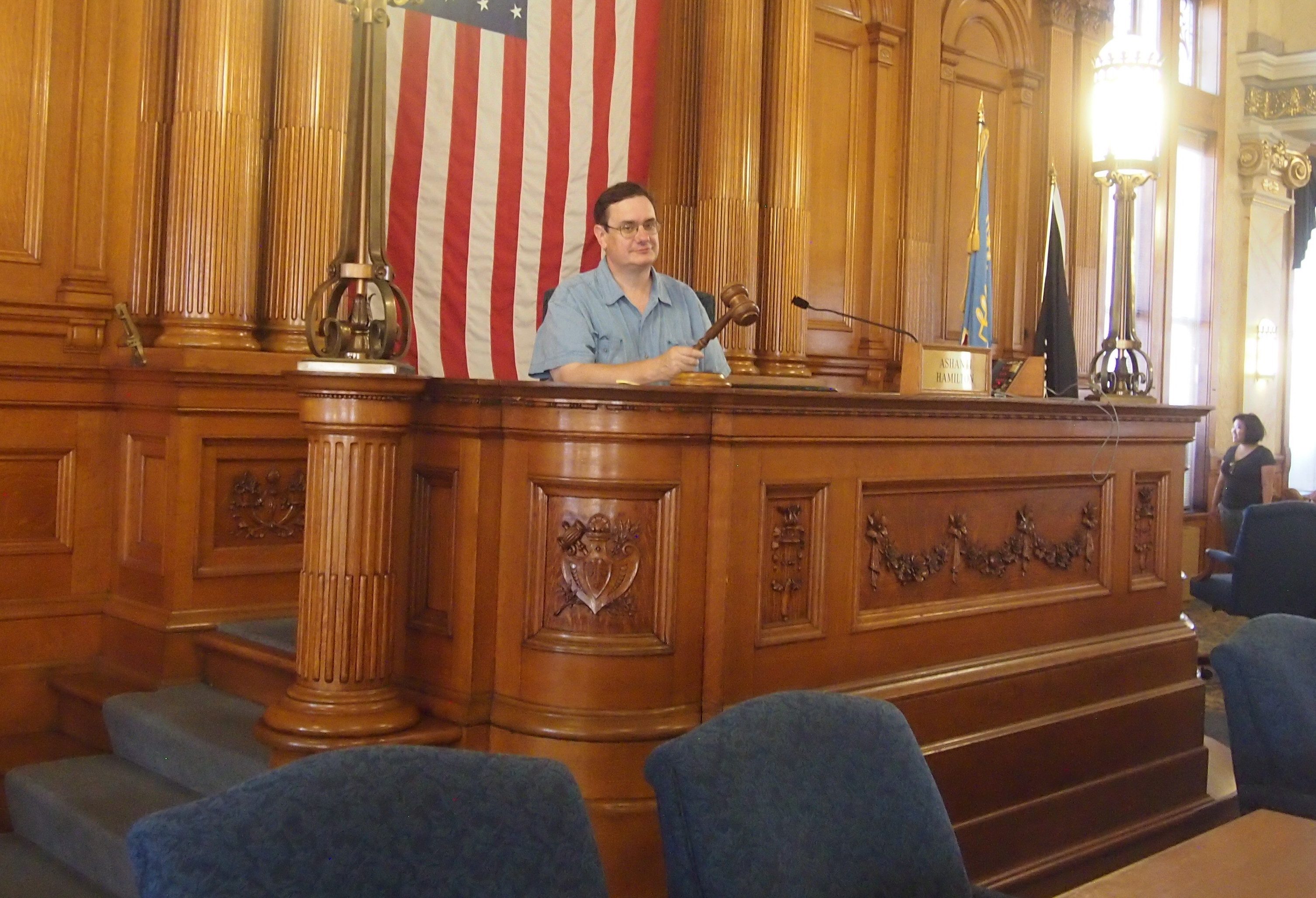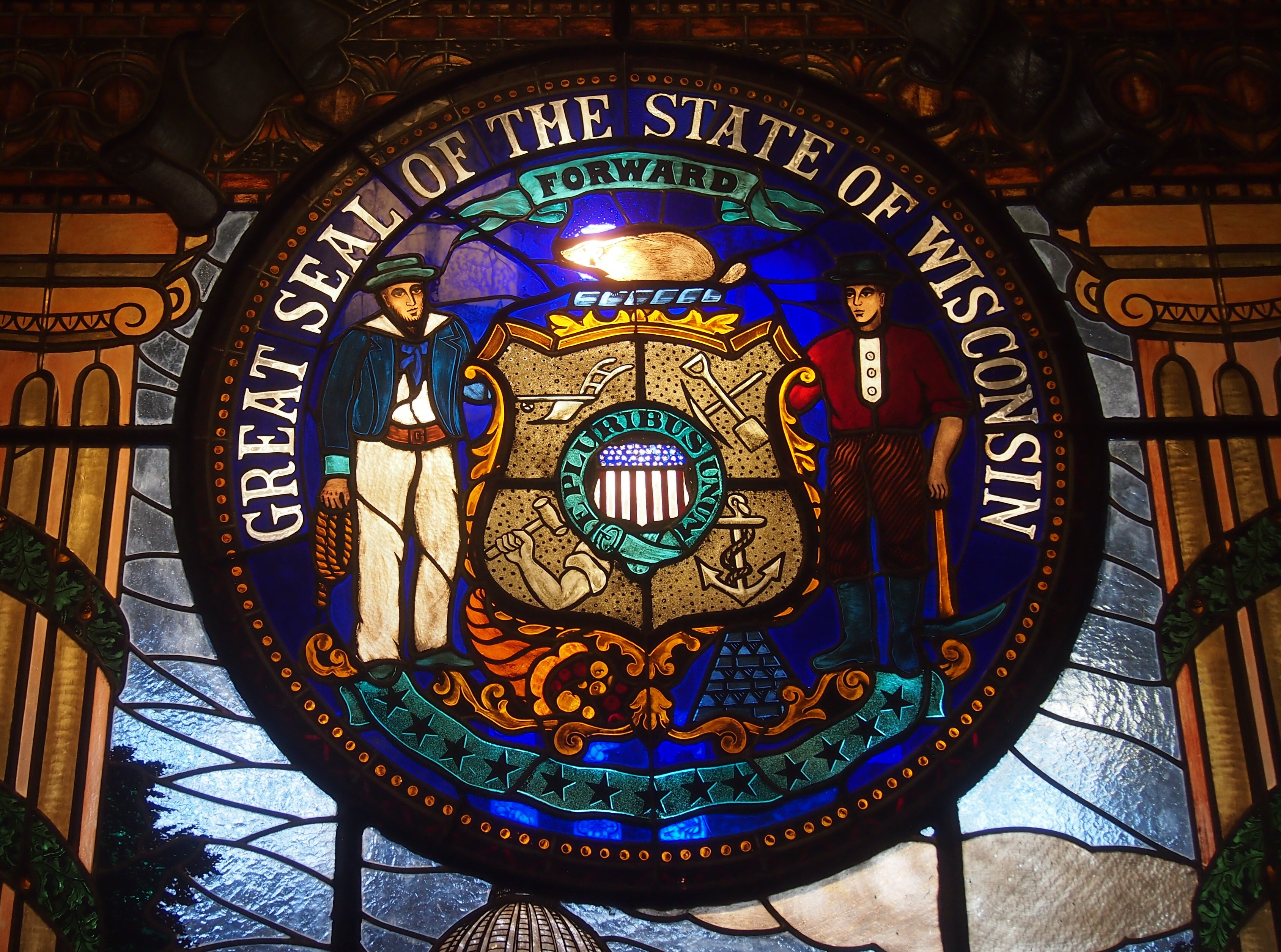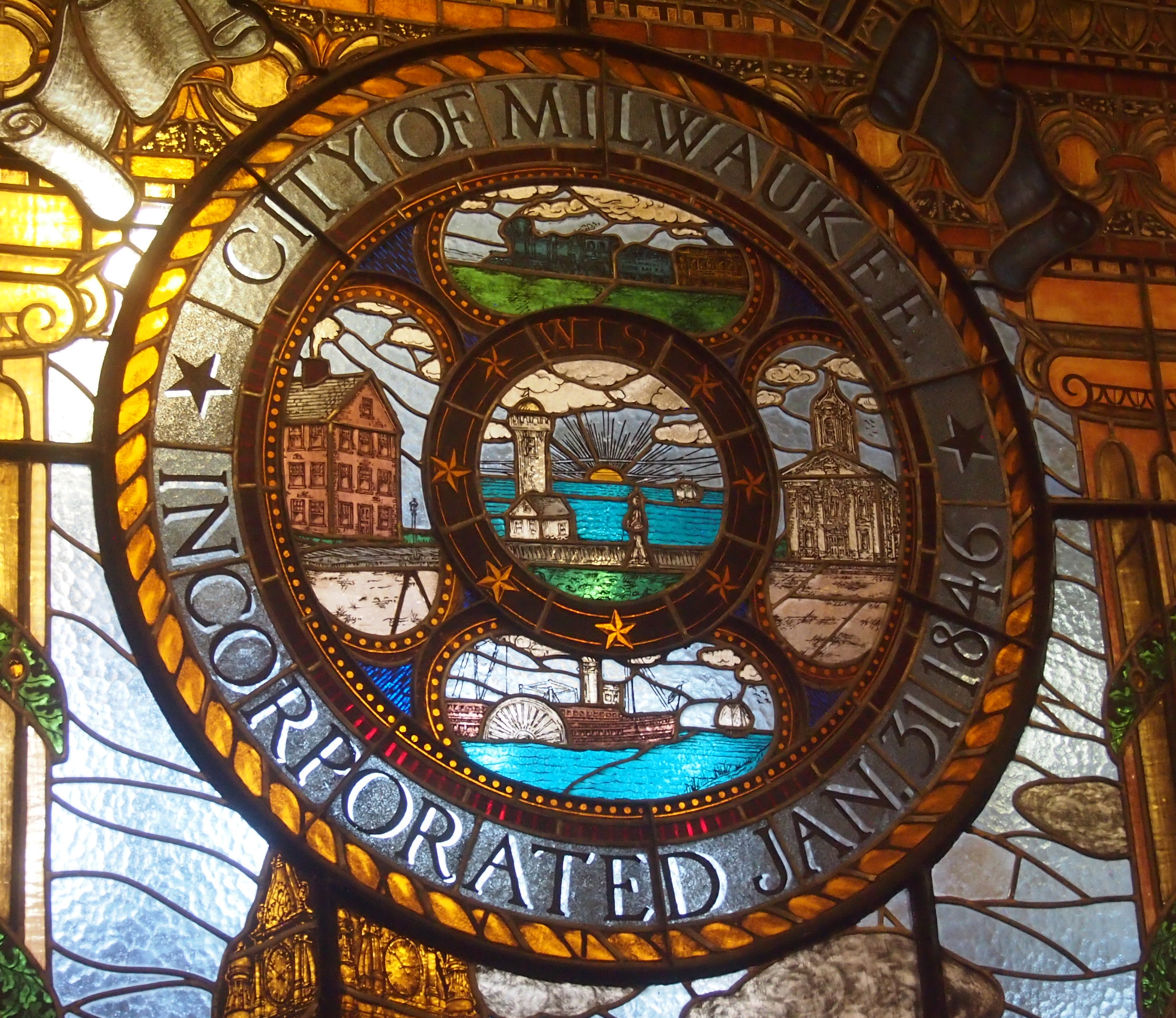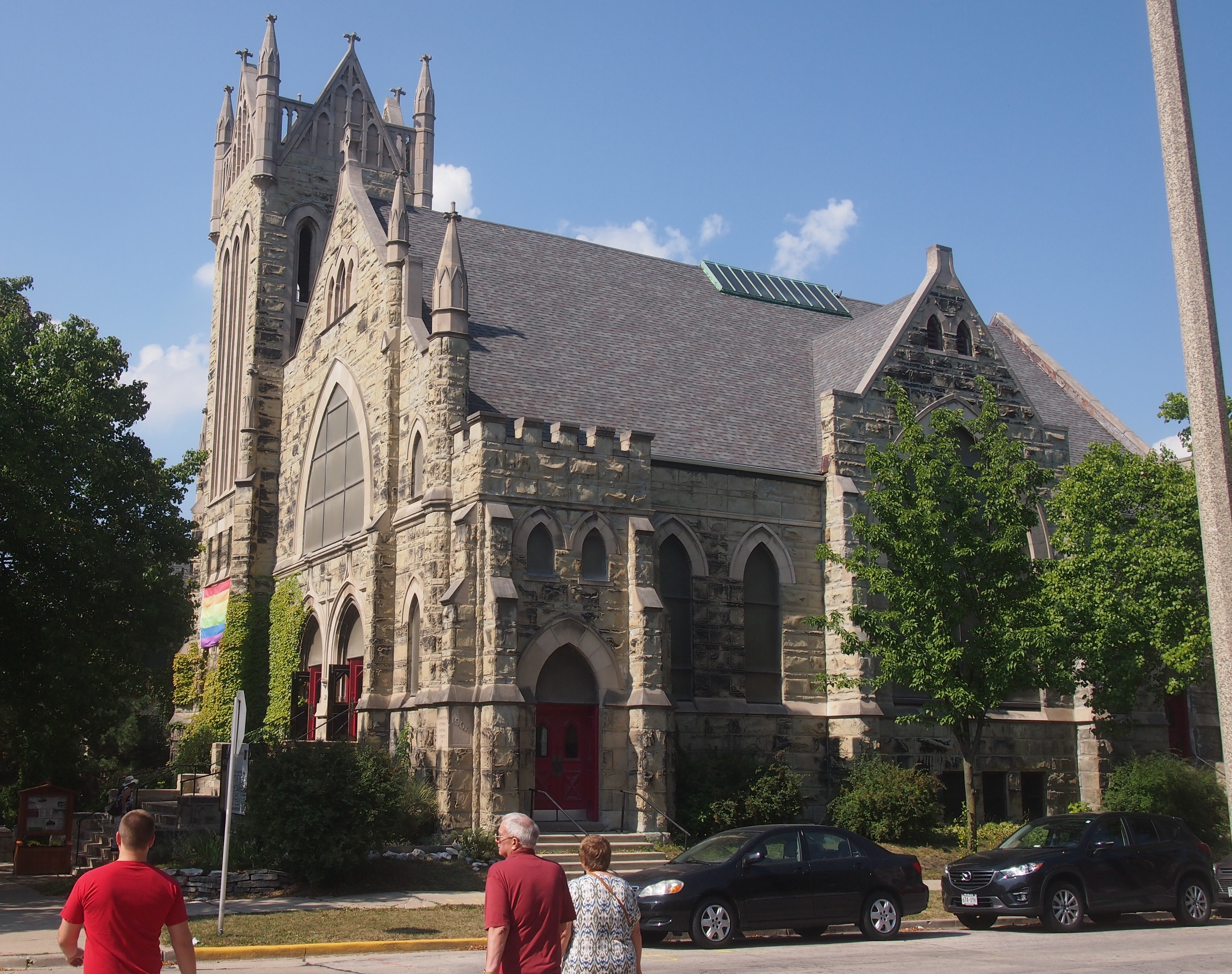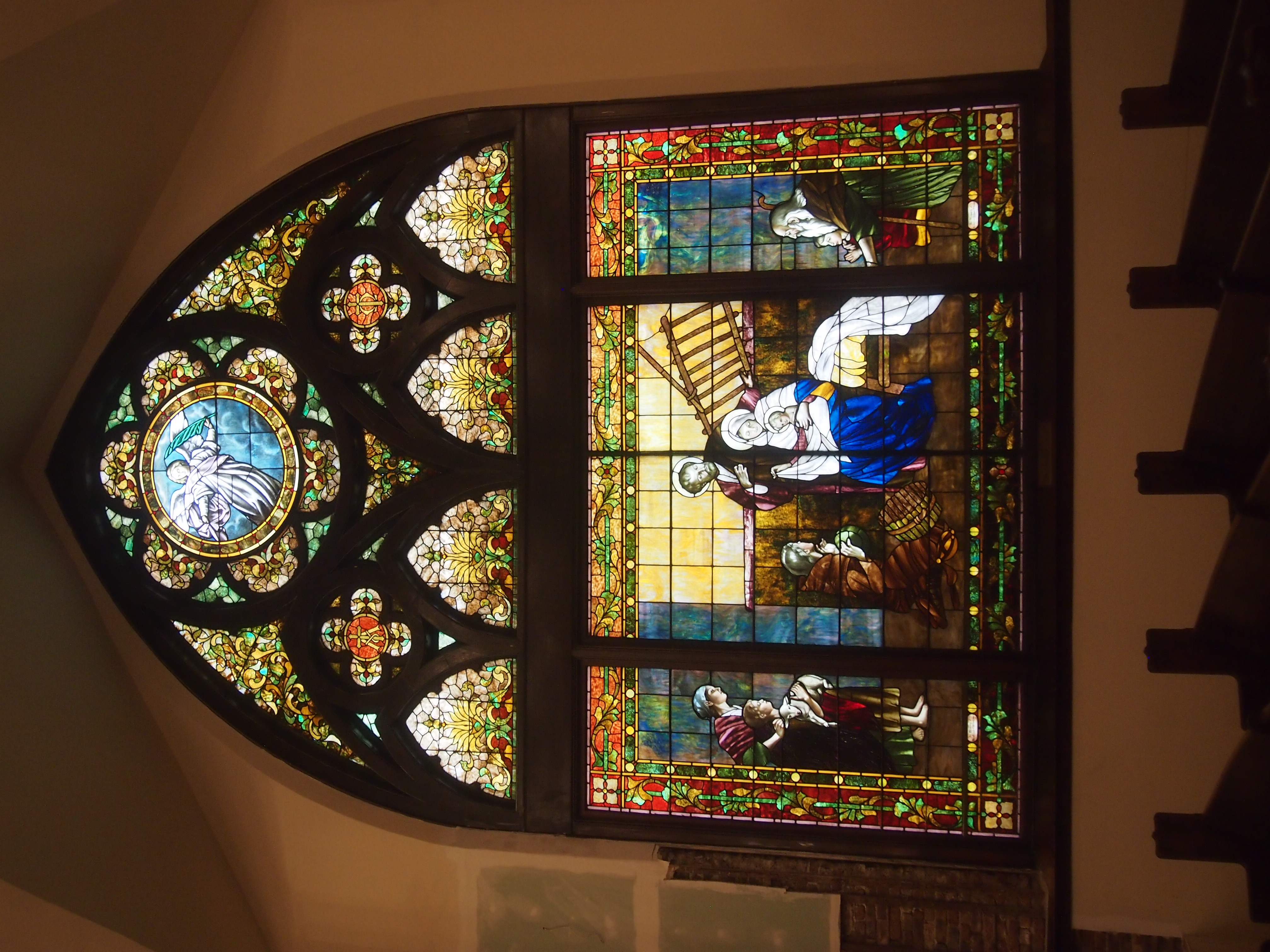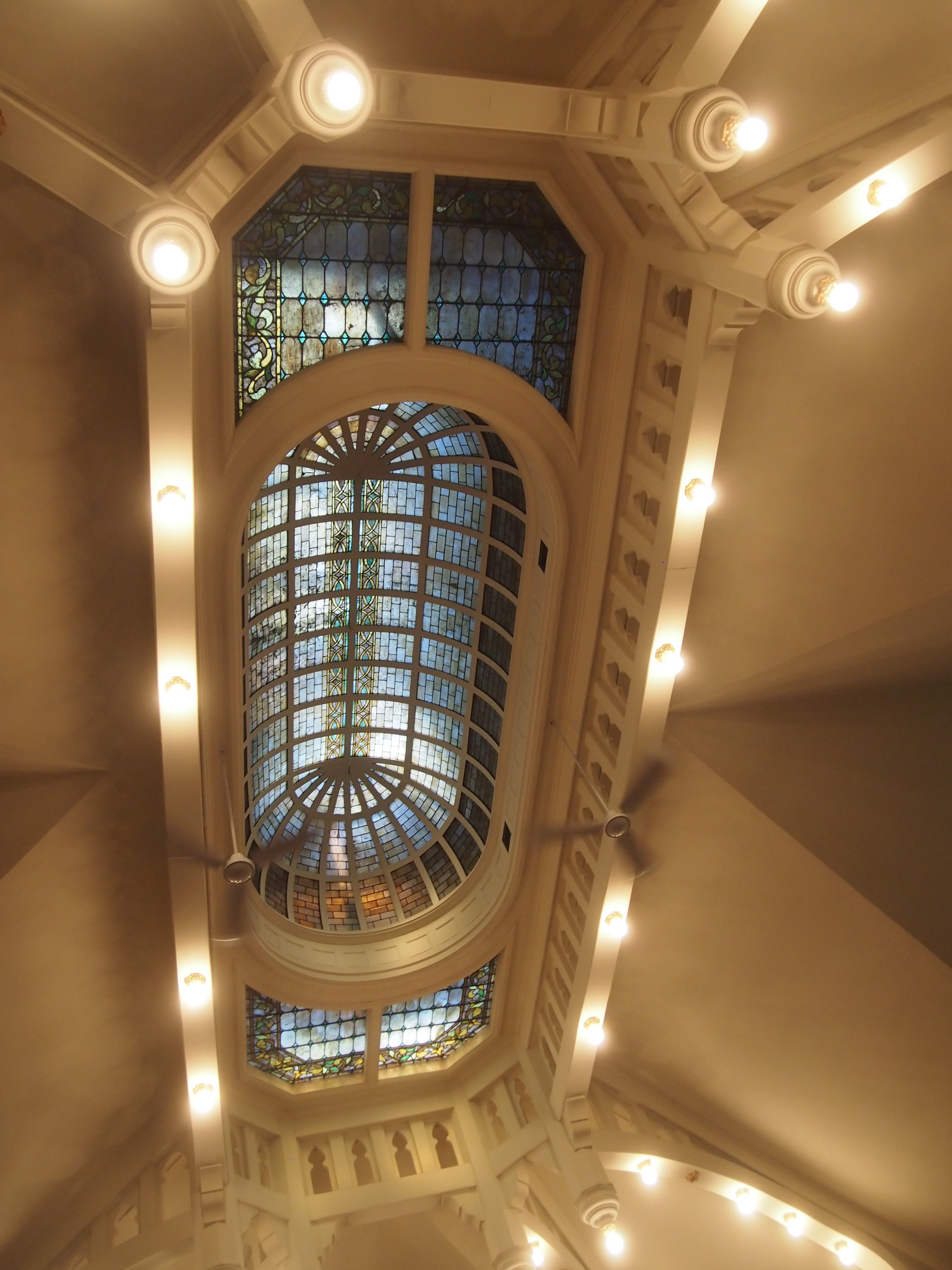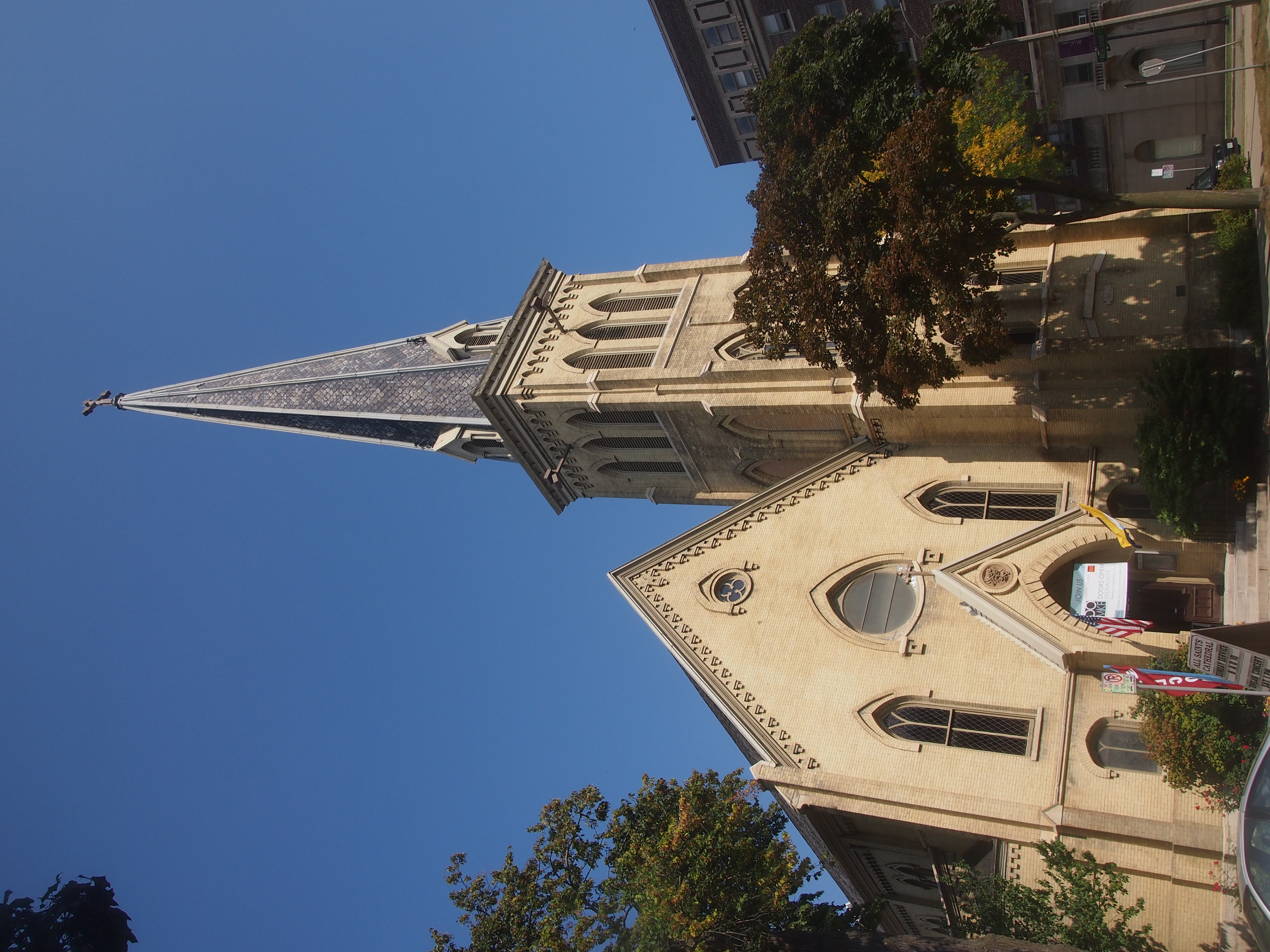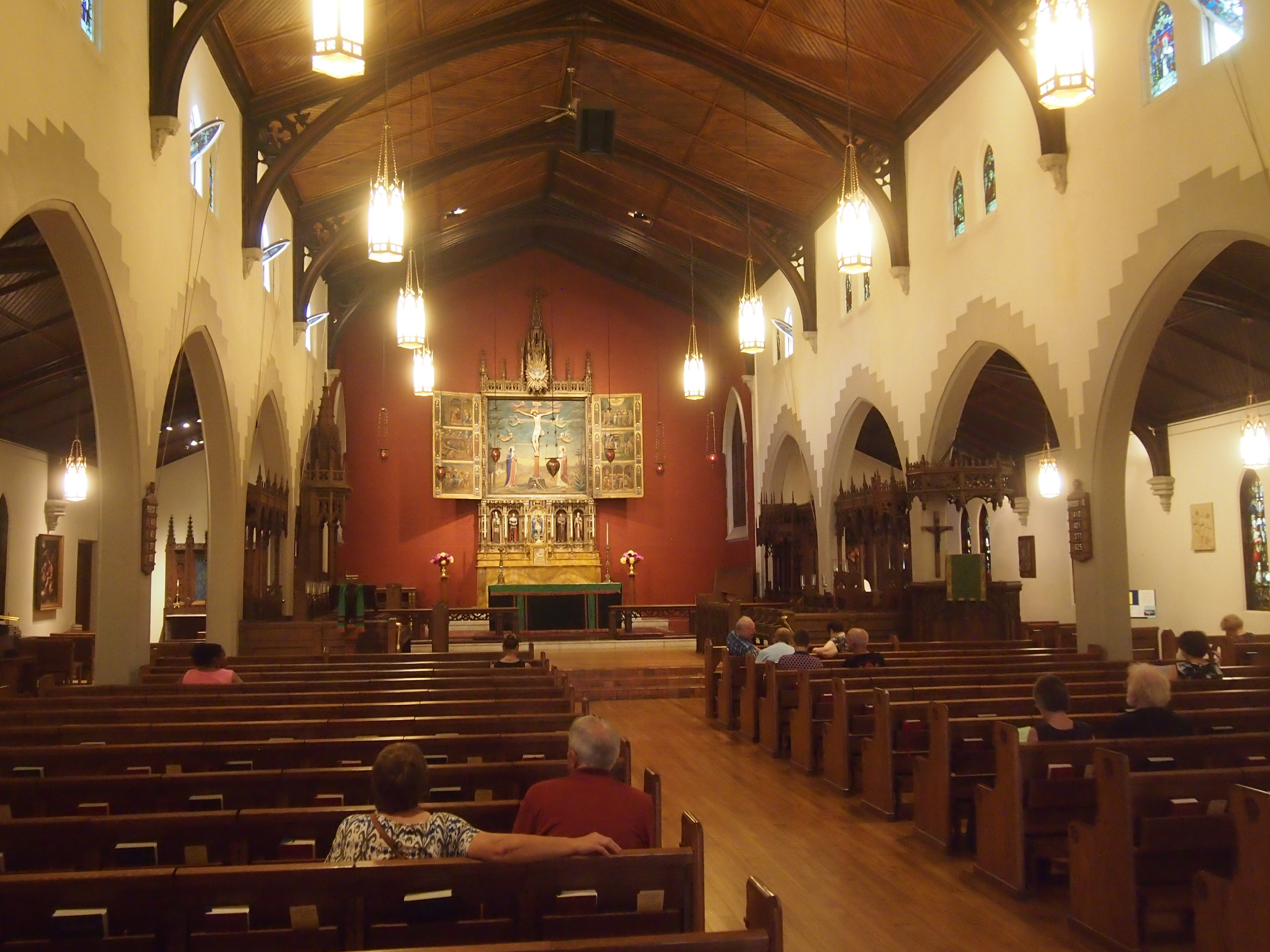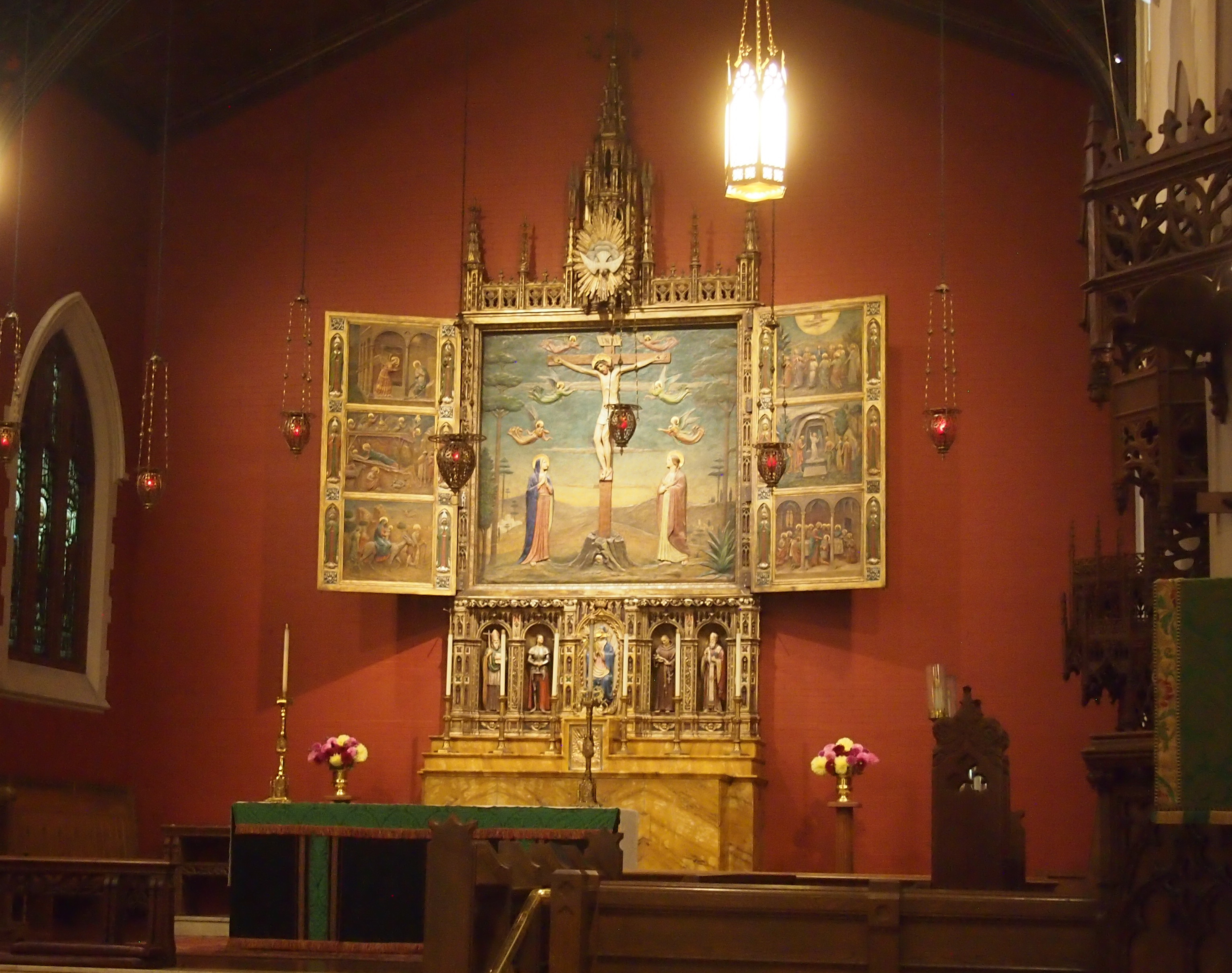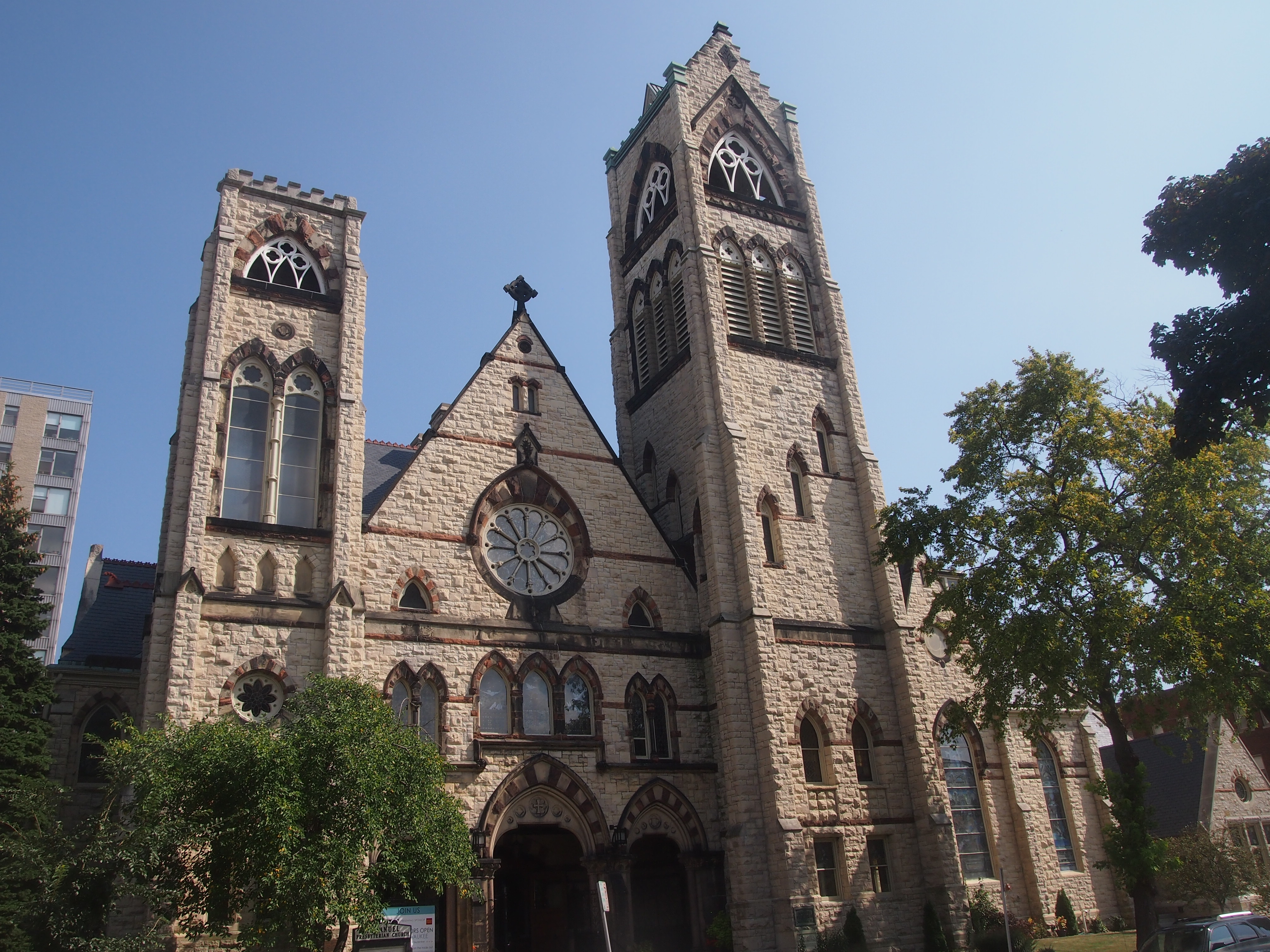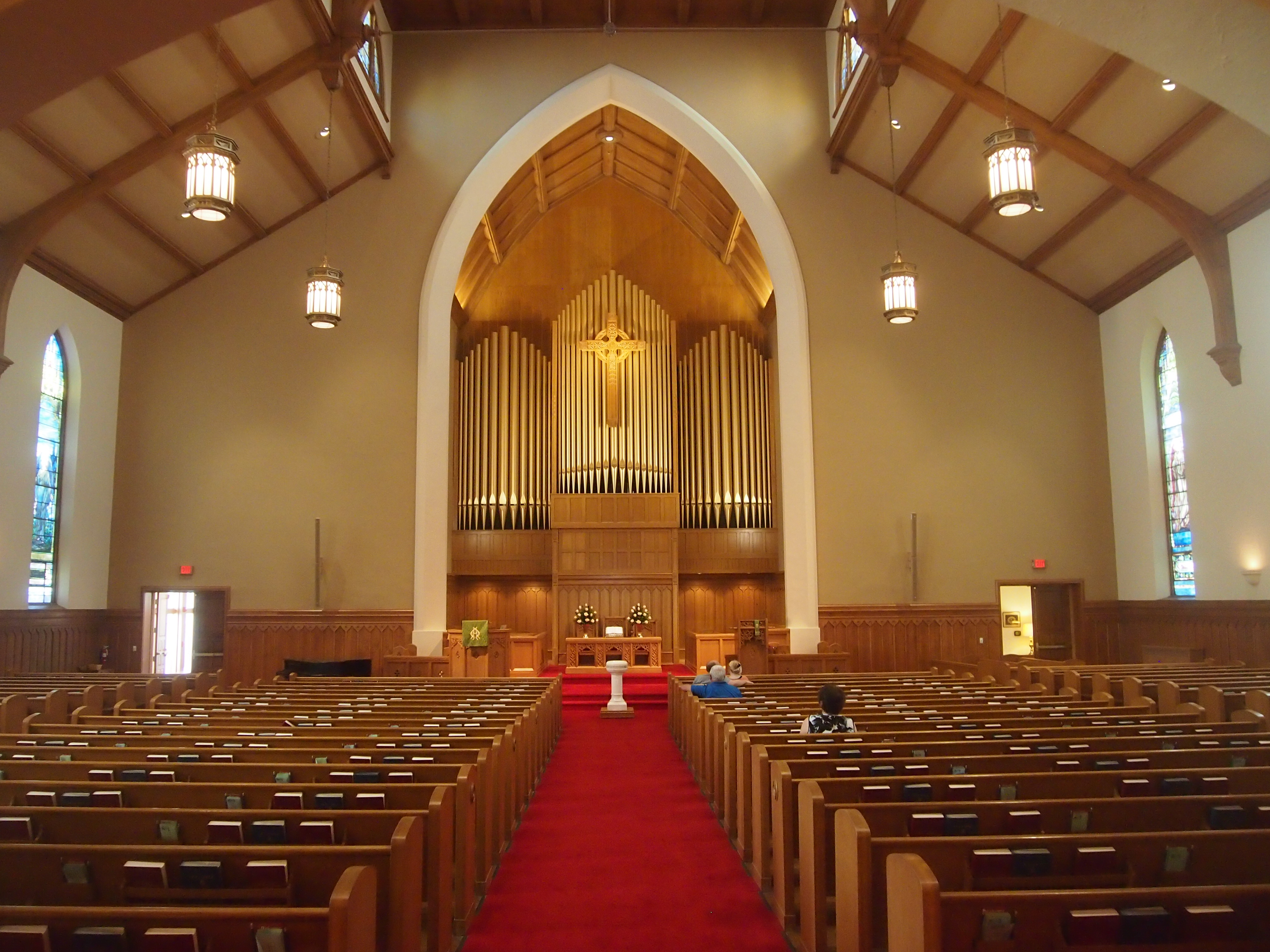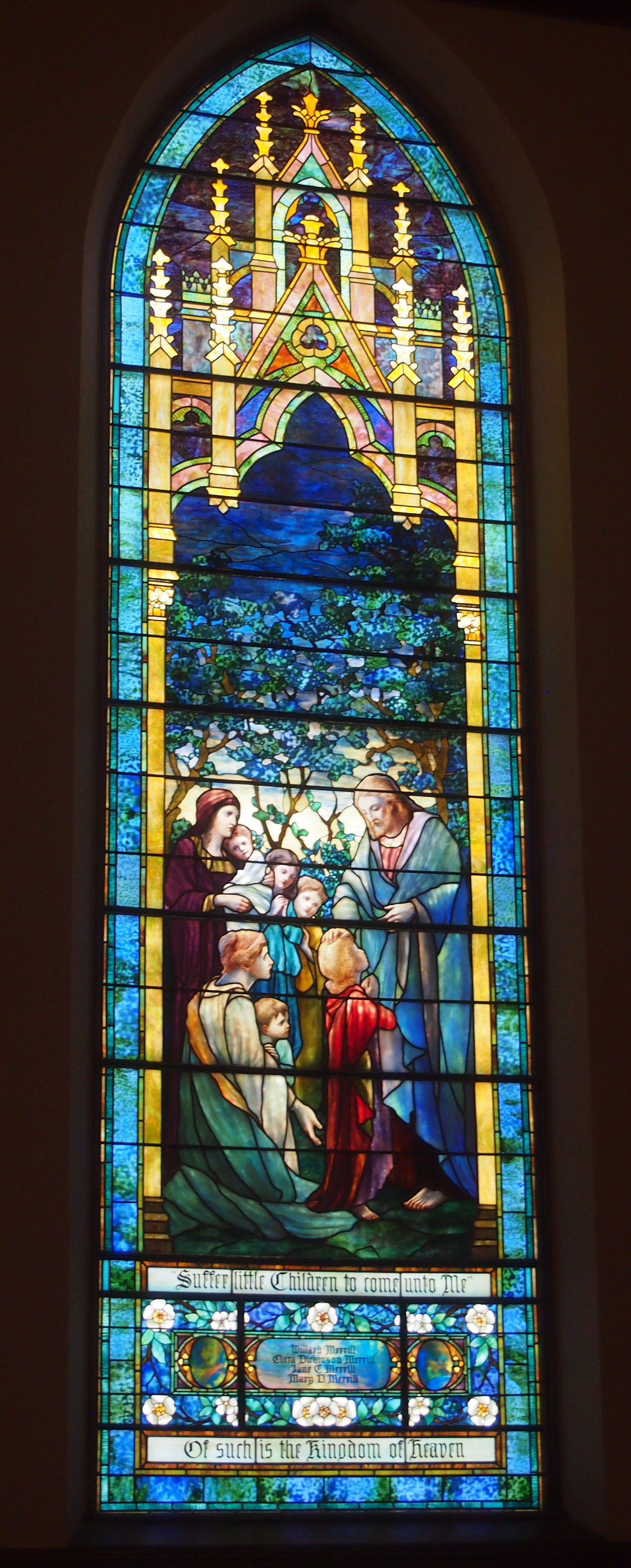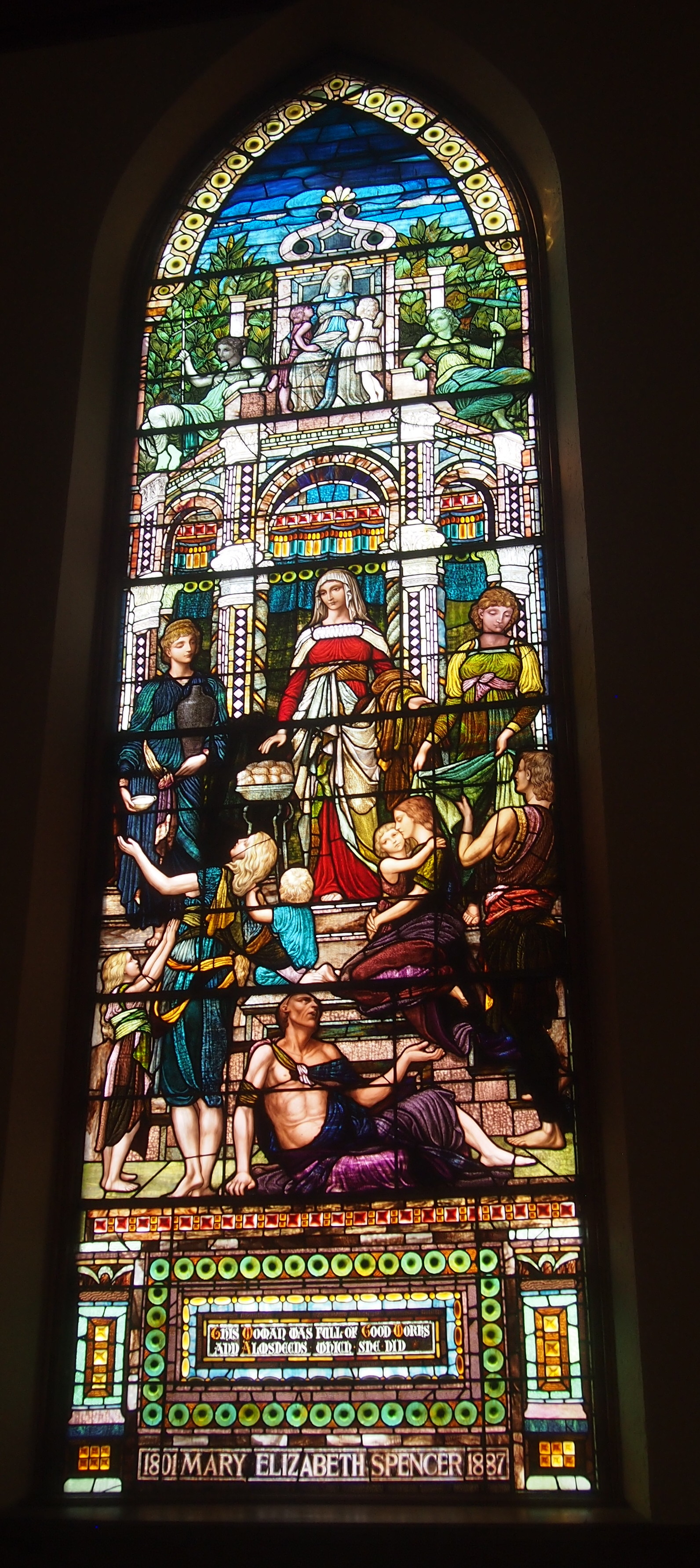On Saturday it seemed like northern Illinois got all of the rain that didn’t come in September in a single October day, beginning well before dawn and extending well after dark. The weather nixed our plans to attend Open House Chicago that day, as we did on Saturdays in 2013, 2014 and last year.
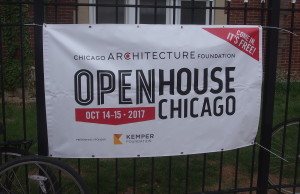 Fortunately, the event is both Saturday and Sunday, so we adjusted our plans a little — because some buildings aren’t open on Sunday, or open after noon (most churches, for instance) — and went on Sunday. By that time the weather was dry and fittingly cool for October.
Fortunately, the event is both Saturday and Sunday, so we adjusted our plans a little — because some buildings aren’t open on Sunday, or open after noon (most churches, for instance) — and went on Sunday. By that time the weather was dry and fittingly cool for October.
This year we drove, making a U-shaped foray into the northwest side of the city and then out to Oak Park. In order, we visited: Fort Knox Studios, Aloft Circus Arts, Norwegian Lutheran Memorial Church, Logan Square Auditorium, Armitage Baptist Church, the Stan Mansion, Our Lady of Sorrows Basilica, Pleasant Home (Farson House), St. Edmund’s Catholic Church, Grace Episcopal Church, and the Nineteenth Century Club.
I’ve been to churches and auditoriums and public event spaces and historic houses, all of which are represented on the list, but never to a recording studio. Fort Knox Studios was that and more.
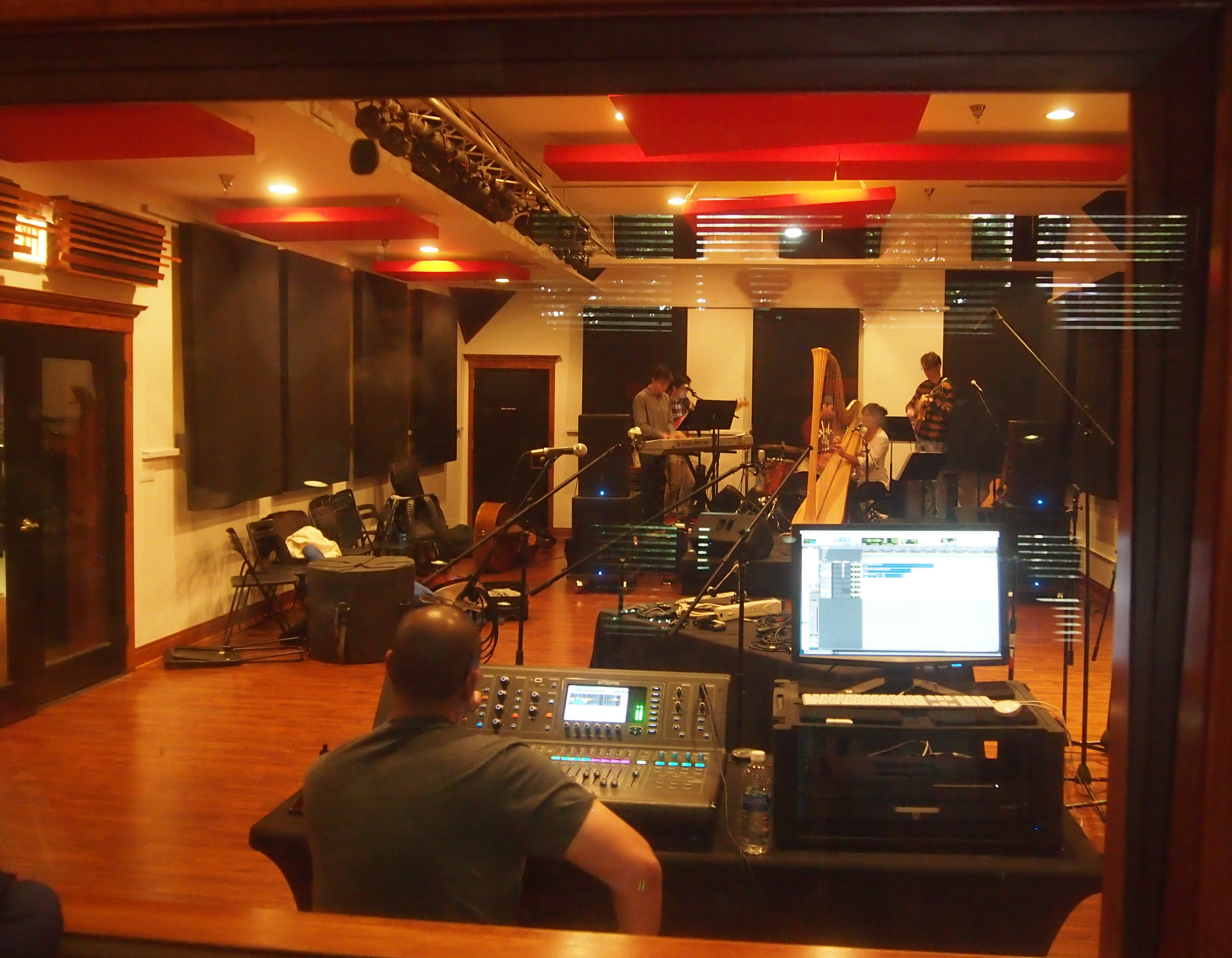
The name seems like a play on the gold depository, devised by a promoter dreaming of gold records, but it’s also a fact that the facility is on N. Knox Ave., a minor street very near the Kennedy Expressway. In fact, the sizable facility (160,000 square feet) is tucked away in an anonymous industrial area that’s nevertheless readily accessible via the highway. Many years ago, I’ve read, televisions were made on the site.
Our guide claimed that artists liked the obscure location, the better to avoid attention while in town. The name she kept dropping as a studio user was Chance the Rapper, who’s a big deal to people who care about that kind of thing. Chance the Wrapper would be funnier, but I guess he’s not a comedy act. I checked, and he has a perfect real name for someone in that line of work: Chancelor Johnathan Bennett.
Besides the recording studio, Fort Knox also includes rehearsal suites — we passed through a seeming warren of them — and office space for booking agents and others in the business end of things. Just this year, an entity called 2112 opened there as well. It’s an incubator specializing in music, film and other creative startups. Or as 2112 puts it, an “ecosystem” for such businesses. That term has been creeping into business jargon lately.
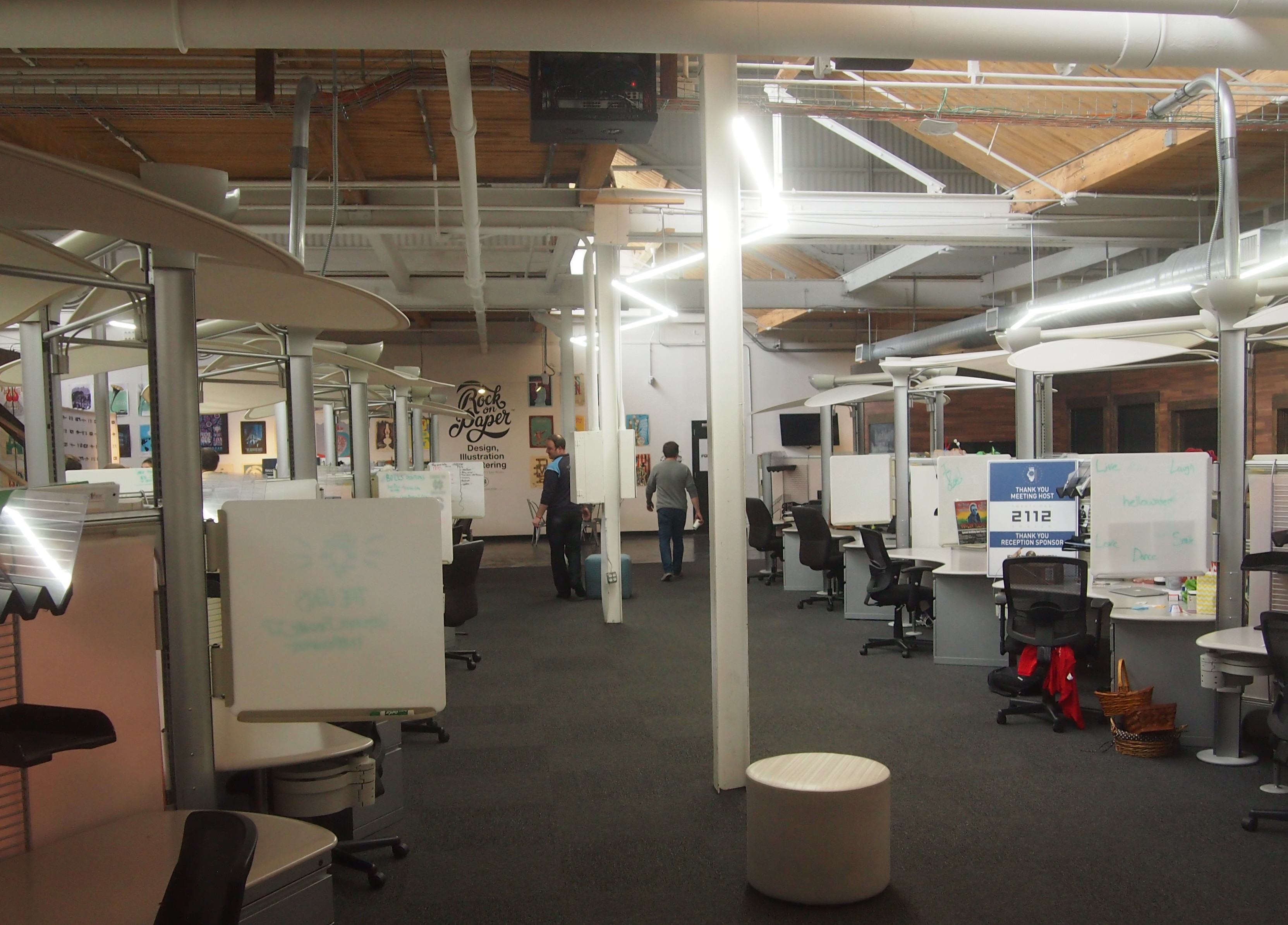 The fellow who founded 2112 is named Dan Fetters, and our guide said he picked the name because other incubators are named with numbers, especially 1871 in Chicago, but also as a die-hard fan of Rush. That suggests a man of a certain middle age. If he’d been a big fan of Van Halen, the place might be named OU812.
The fellow who founded 2112 is named Dan Fetters, and our guide said he picked the name because other incubators are named with numbers, especially 1871 in Chicago, but also as a die-hard fan of Rush. That suggests a man of a certain middle age. If he’d been a big fan of Van Halen, the place might be named OU812.
Further south, but still on the northwest side of the city at 3324 W. Wrightwood Ave., we also visited Aloft Circus Arts. From the outside, it looks like a church.
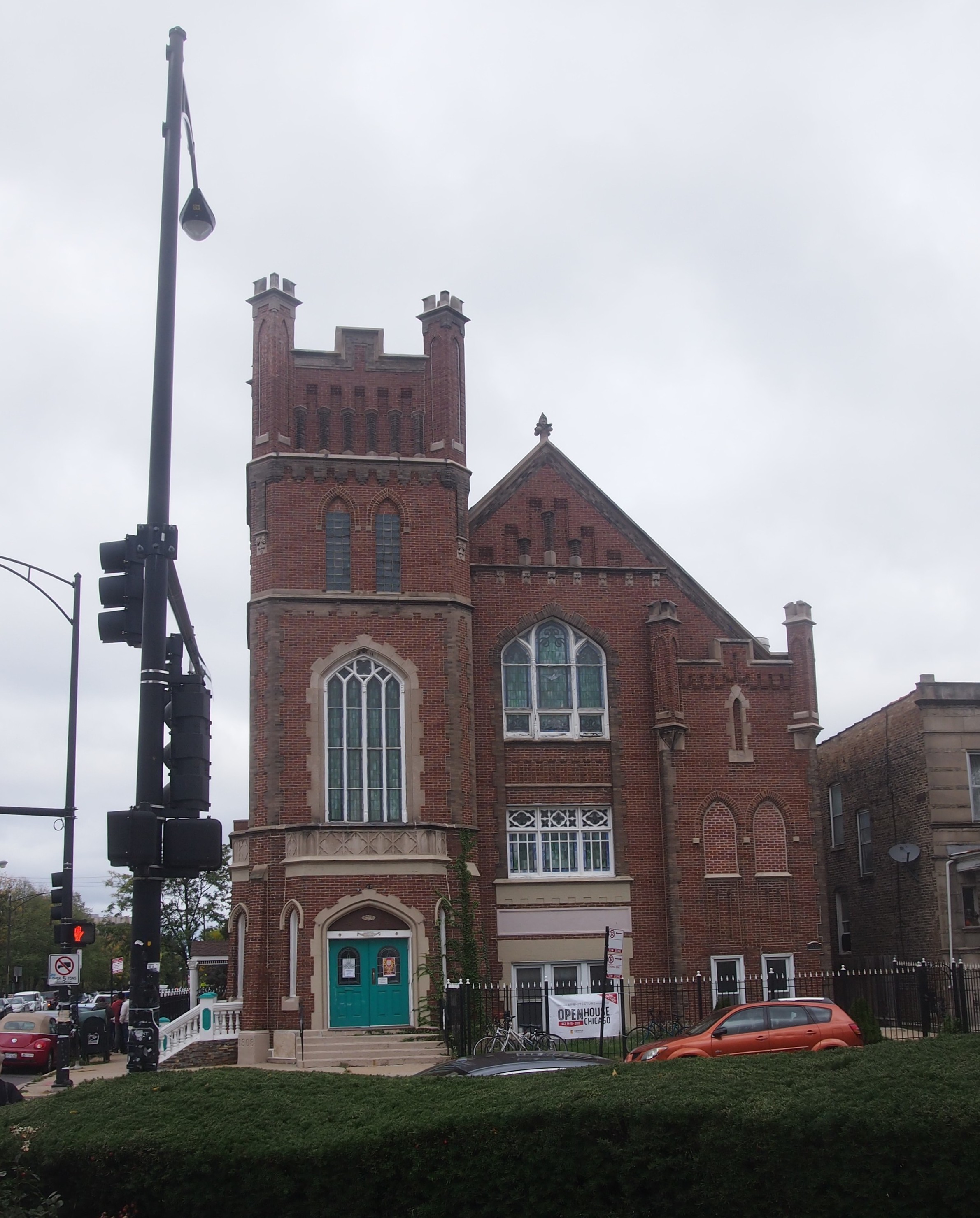 That’s because it used to be one. According to Open House, the structure dates from 1907: “Aloft Circus Arts, the third largest circus school in the country, moved into this more than 100-year-old former Evangelical church last year. Nearly $100,000 worth of renovations were made, including the removal of the pews and installation of rigging on the ceiling to allow students to learn and practice trapeze, aerial skills, pole acrobatics, trampoline, tight-wire, hand-balancing and more.”
That’s because it used to be one. According to Open House, the structure dates from 1907: “Aloft Circus Arts, the third largest circus school in the country, moved into this more than 100-year-old former Evangelical church last year. Nearly $100,000 worth of renovations were made, including the removal of the pews and installation of rigging on the ceiling to allow students to learn and practice trapeze, aerial skills, pole acrobatics, trampoline, tight-wire, hand-balancing and more.”
People were busy when we walked through. They paid us no mind.
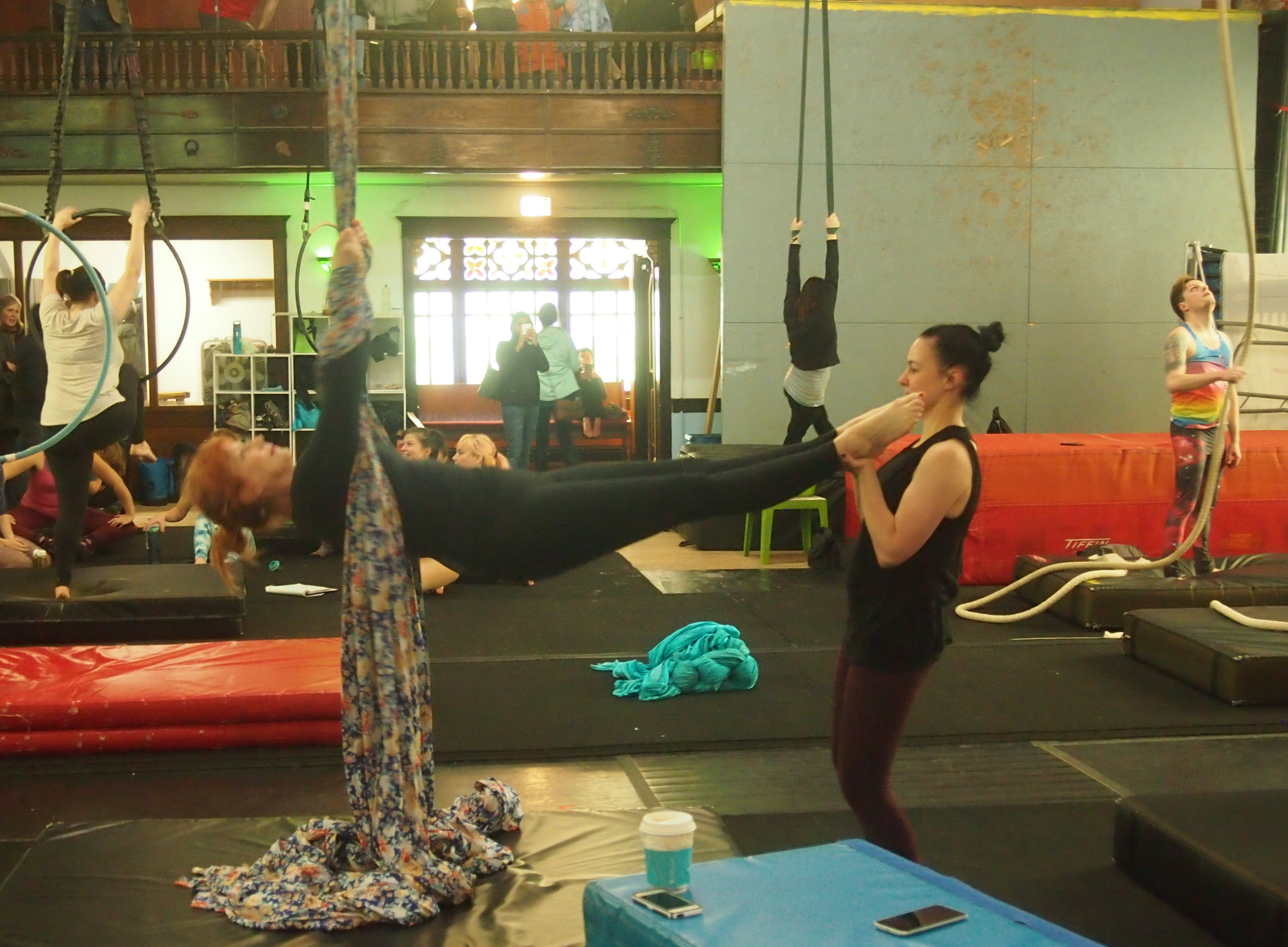
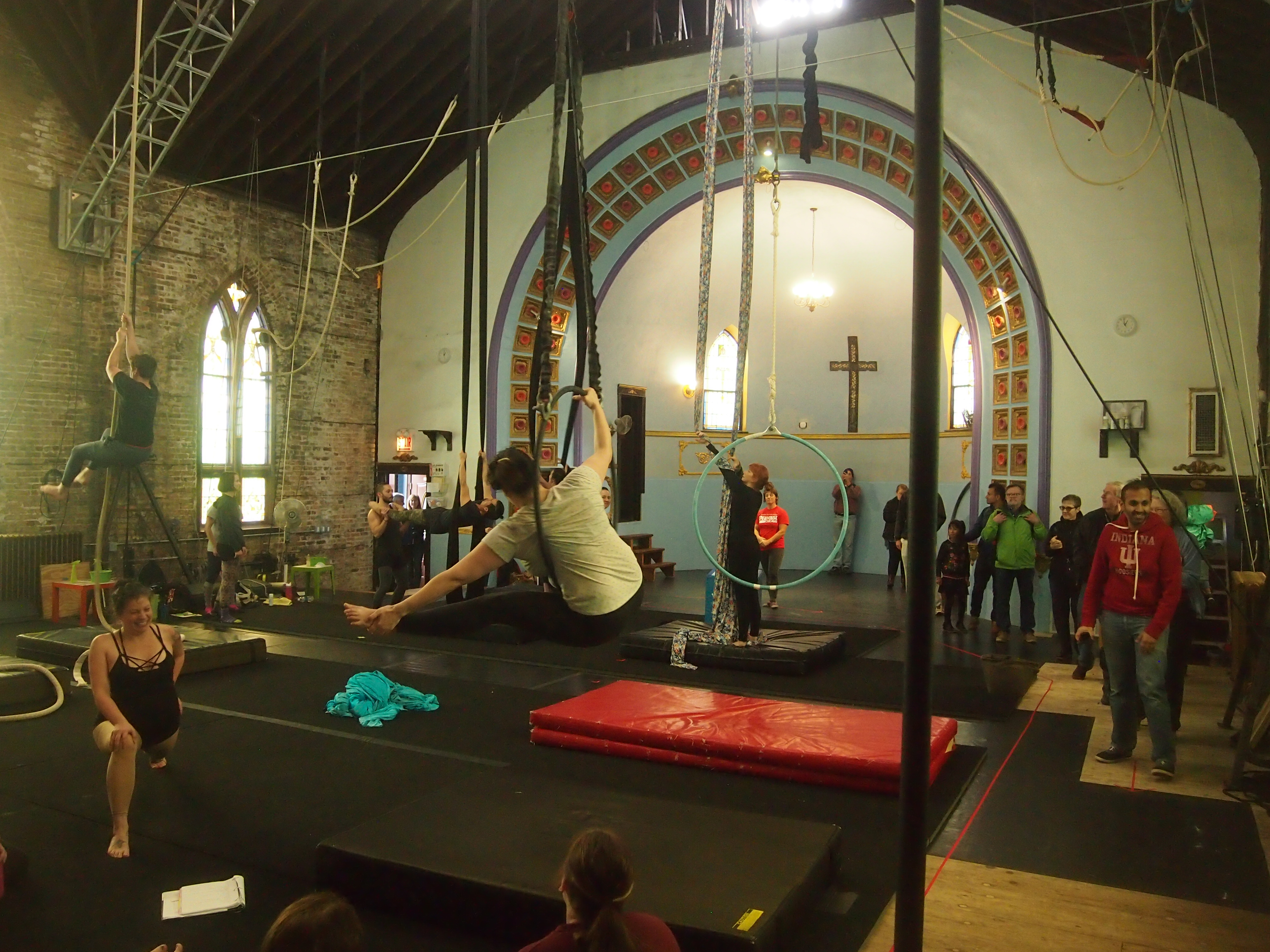
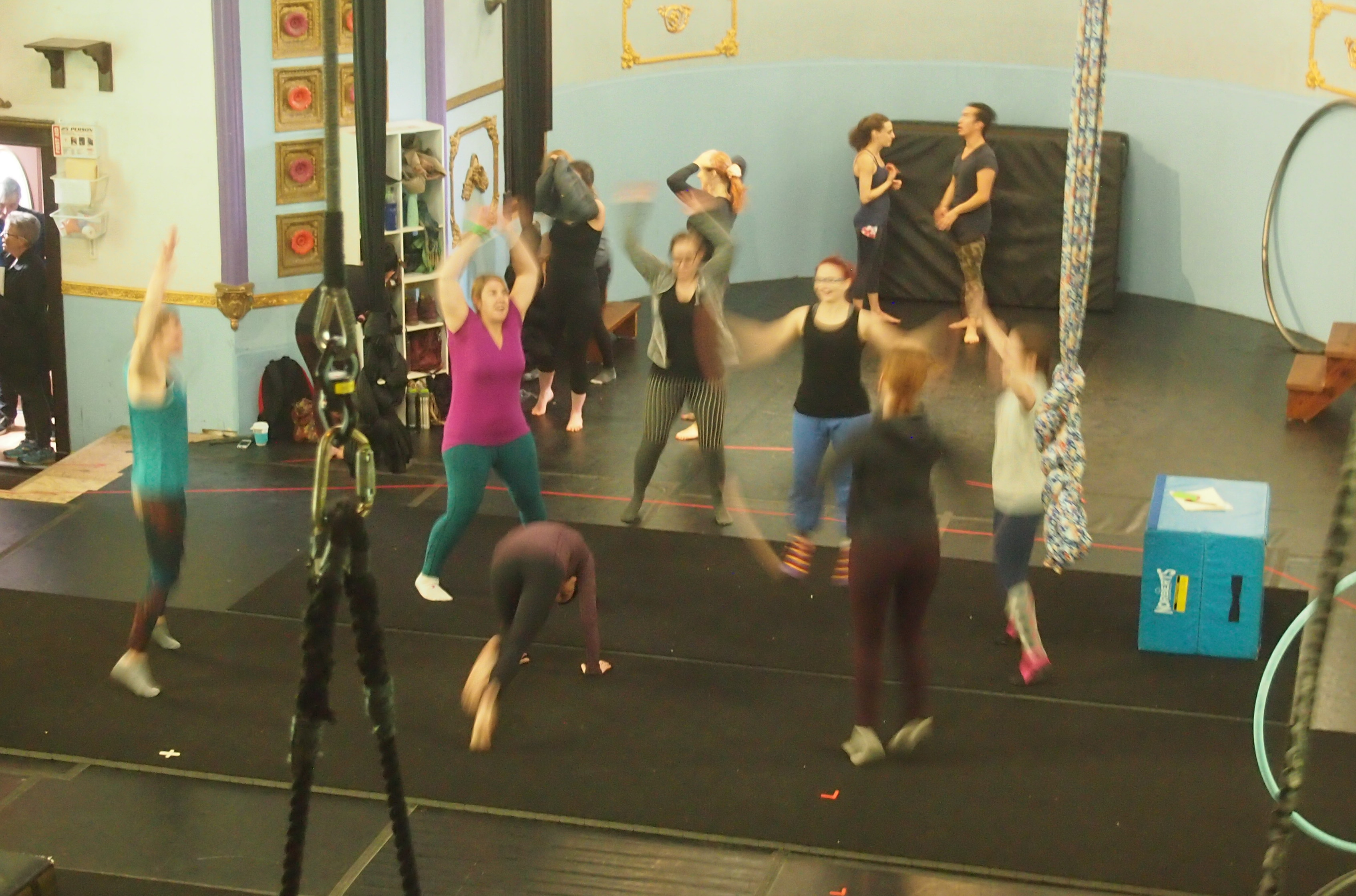 Doing things I would never do, even if I weren’t a hefty fellow.
Doing things I would never do, even if I weren’t a hefty fellow.
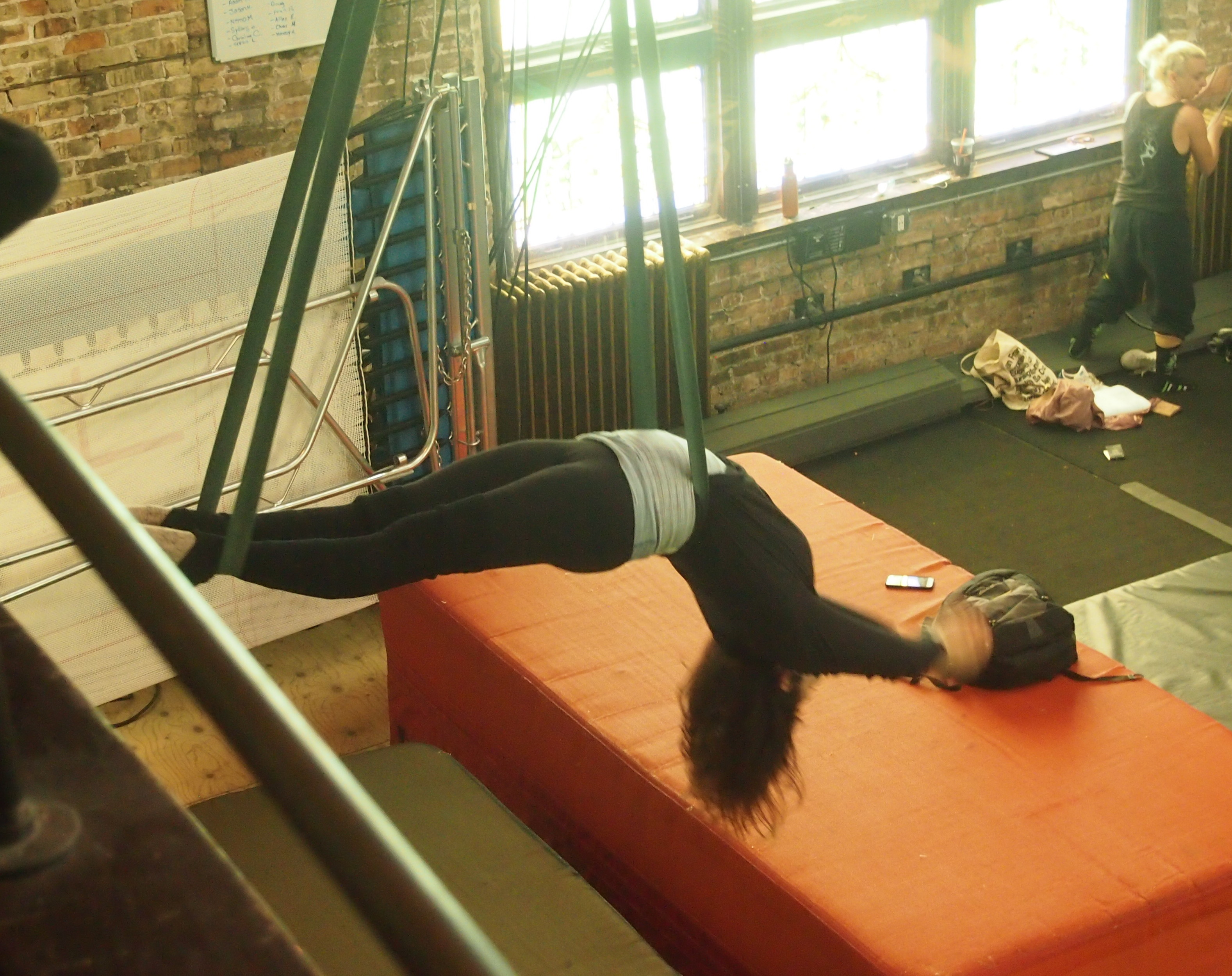 As I watched it all, I couldn’t help but wonder: how do you insure a business like that? There must be a way. Glad I don’t have to pay for it.
As I watched it all, I couldn’t help but wonder: how do you insure a business like that? There must be a way. Glad I don’t have to pay for it.
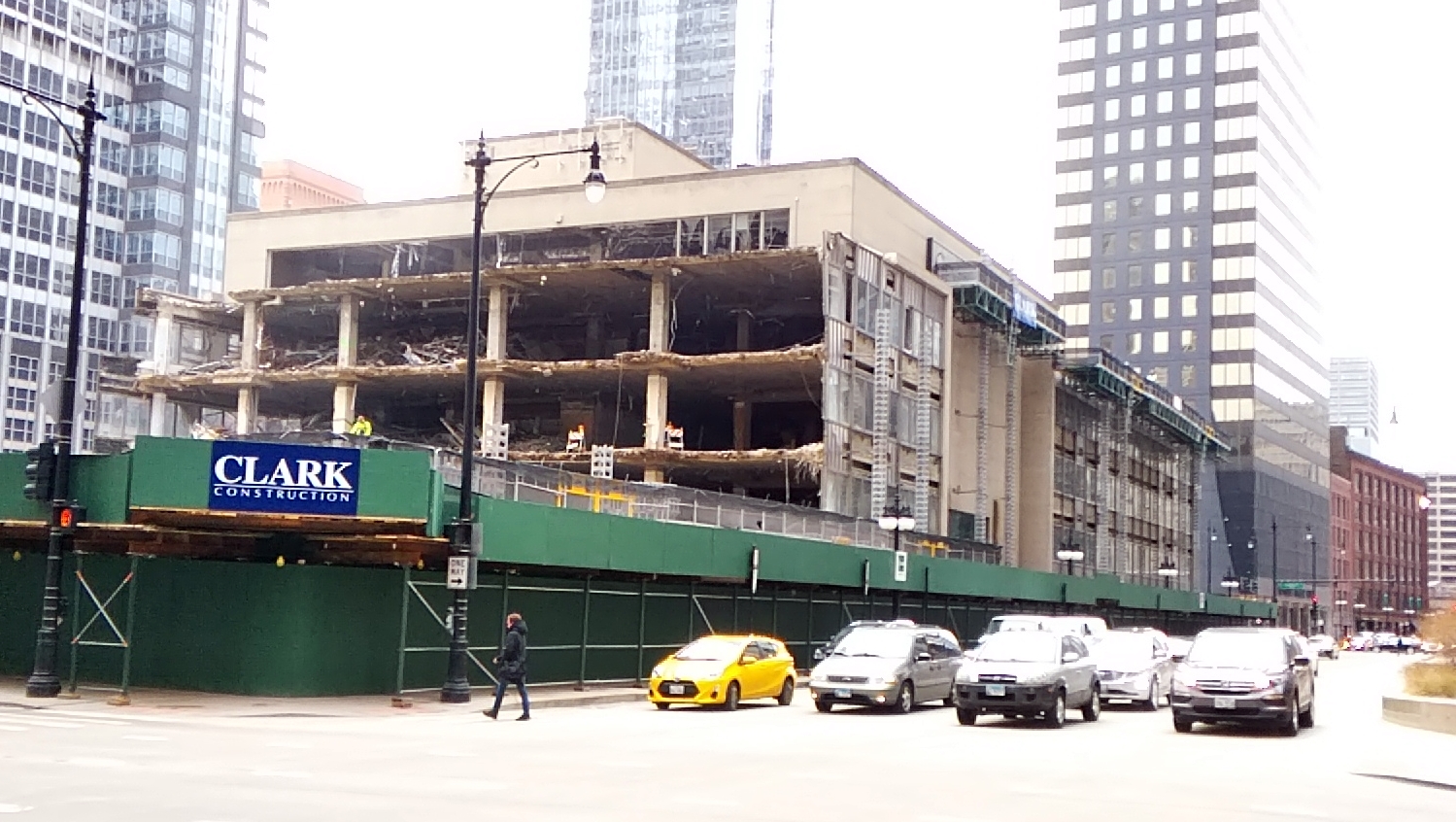 If I’d had more time, I might have captured some other angles. The building, which I always thought bland and colorless, has long been dwarfed by taller buildings on Wacker Dr. Soon a 51-story structure will be rising on the site.
If I’d had more time, I might have captured some other angles. The building, which I always thought bland and colorless, has long been dwarfed by taller buildings on Wacker Dr. Soon a 51-story structure will be rising on the site.